America's 50 Most Legendary Stadiums In Every State
Football and college athletics have long held a cherished place in American culture, and no venues better represent this passion than the towering stadiums that populate every corner of the nation. From the sprawling coliseums in the heart of the Big Ten to the storied SEC fortresses brimming with Saturday-night fervor, these arenas stand as testaments to local pride, historic tradition, and the unbreakable bond between teams and their communities. Each of the 50 states boasts a standout stadium—the largest in its borders—where tens of thousands of fans unite in a vivid tapestry of color and cheer. Join us on a coast-to-coast tour of these monumental venues, where the roar of the crowd echoes far beyond game day.
1. Alabama – Bryant-Denny Stadium (Capacity: 101,821)
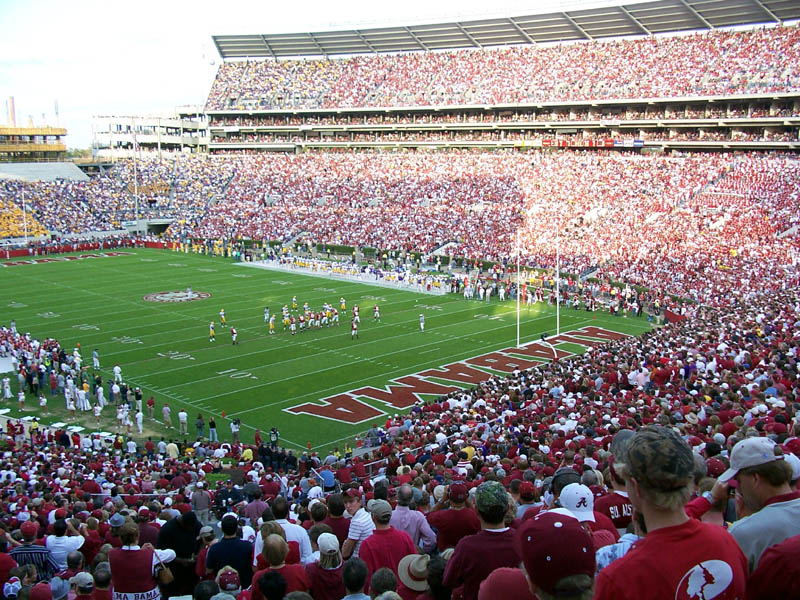
Bryant-Denny Stadium in Tuscaloosa is the beating heart of Alabama football. Opened in 1929 and undergoing multiple expansions over the decades, it now holds over 100,000 spectators—a sea of crimson cheering on the Crimson Tide. This colossal venue earned its name from two legends: the university’s former president George H. Denny and iconic coach Paul “Bear” Bryant. Game days at Bryant-Denny are electric; fans arrive early for the “Walk of Champions,” where they line the path to greet players and coaches. The stadium’s design embraces modern amenities while retaining a sense of classic Southern football culture, offering towering concourses, ample concessions, and a newly enhanced sound system that shakes the stands. Its storied past includes national championship runs and Heisman-winning seasons, cementing Bryant-Denny as a fortress of college football.
2. Alaska – Seawolf Sports Complex (Capacity: 1,500)
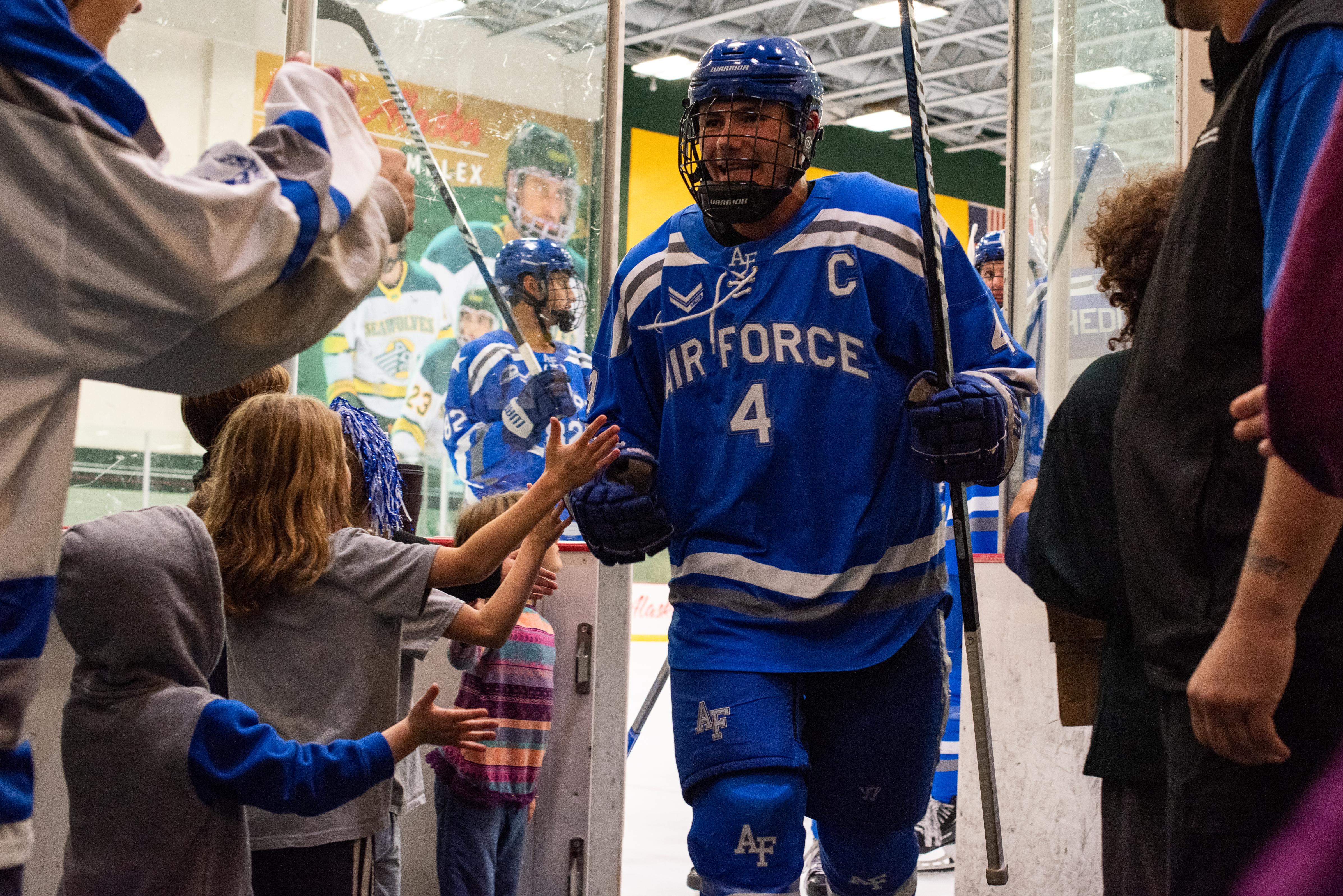
Though modest in size, the Seawolf Sports Complex at the University of Alaska Anchorage is the largest stadium-like facility noted in Alaska’s collegiate system. Housing roughly 1,500 spectators, it stands as a multi-sport arena rather than a traditional outdoor football stadium—due in part to Alaska’s challenging climate. Within these walls, students gather to support their teams in sports like basketball and volleyball, forging a sense of community despite the icy conditions outside. Opened in the early 2000s, the complex boasts modern seating, well-maintained courts, and amenities that make it a hub for athletic events in Anchorage. Fans often arrive bundled against the cold, eager to cheer for the Seawolves and enjoy the spirited atmosphere.
3. Arizona – Sun Devil Stadium (Capacity: 53,599)
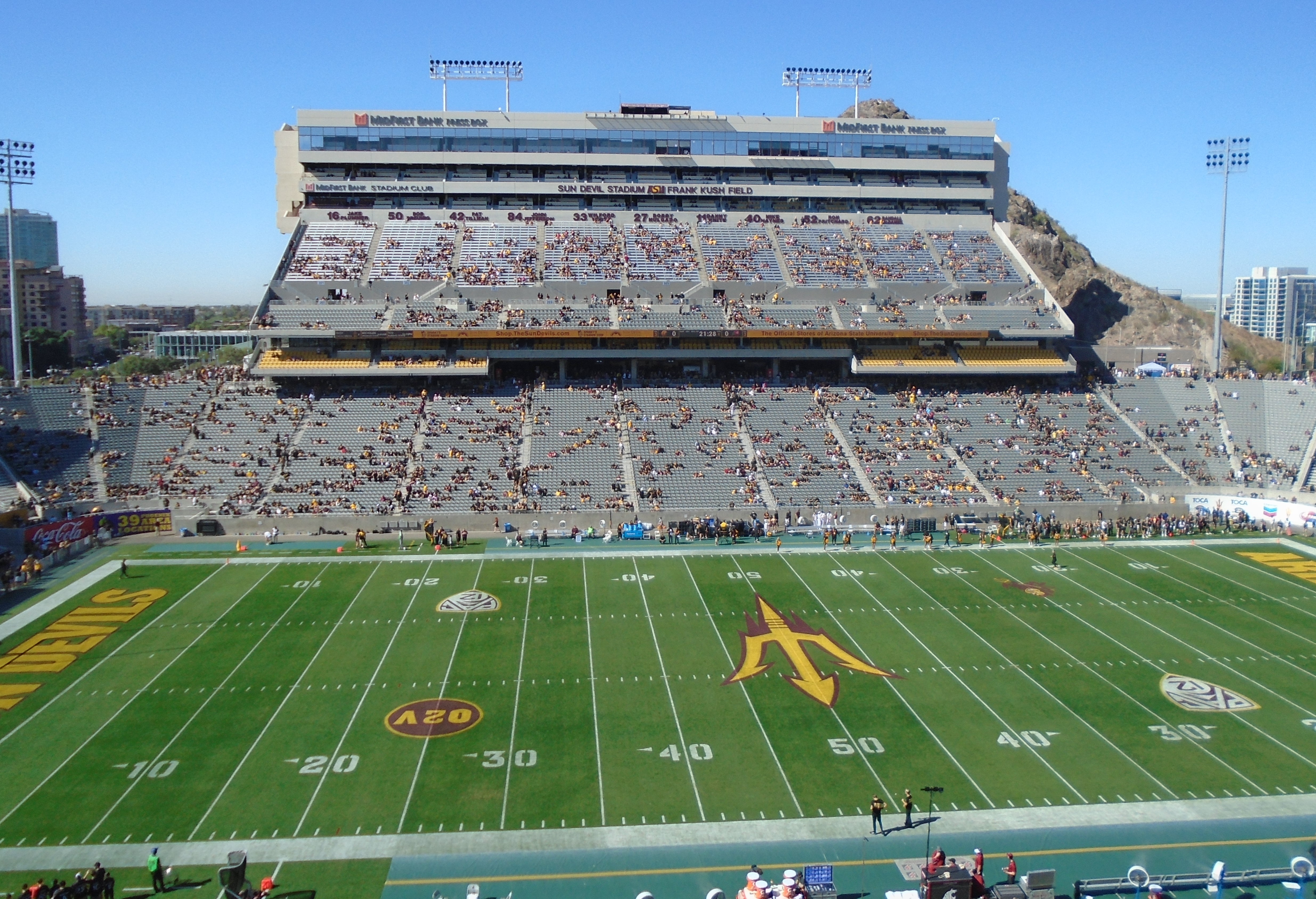
Sun Devil Stadium in Tempe stands as Arizona’s premier college football venue, hosting the Arizona State University Sun Devils since 1958. Nestled near the dramatic buttes of Papago Park and the Salt River, its desert setting provides a unique game-day experience under the Southwest sun (and occasionally, balmy evenings). With a capacity of around 53,599, the stadium has undergone renovations to enhance fan comfort, adding wider concourses, improved concessions, and upgraded seating. Historically, Sun Devil Stadium served as the longtime home of the NFL’s Arizona Cardinals and even hosted the Fiesta Bowl, giving it a storied legacy beyond just collegiate play. ASU fans turn out in droves, often decked in maroon and gold, generating a spirited environment that can rattle visiting teams.
4. Arkansas – Donald W. Reynolds Razorback Stadium (Capacity: 76,000)
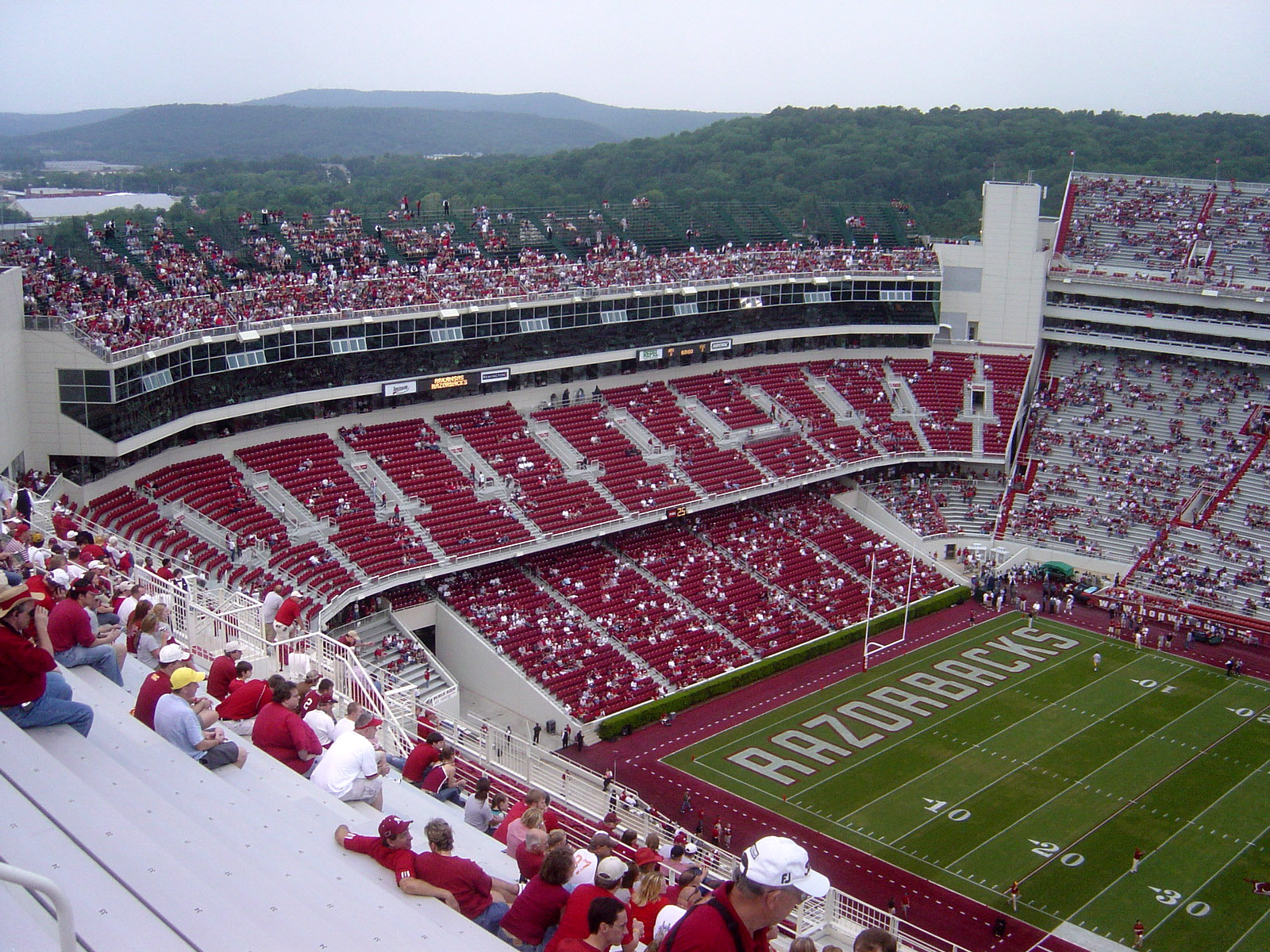
Donald W. Reynolds Razorback Stadium, nestled in Fayetteville, is the University of Arkansas’ football fortress. First opened in 1938, it has undergone multiple expansions—most notably in 2001—boosting capacity to around 76,000. Named after media mogul Donald W. Reynolds, the stadium embodies Razorback pride, regularly erupting with the iconic “Wooo Pig Sooie” chant whenever the Hogs step onto the field. Its design marries modern amenities like spacious concourses and premium seating with nods to Arkansas’ heritage, making the venue both comfortable and steeped in tradition. On game days, fans flock to “The Hill” for tailgating, transforming the surrounding area into a carnival of red and white. The atmosphere inside is electric, especially for SEC rivalry matchups, where every big play can cause the stands to tremble.
5. California – Rose Bowl (Capacity: 88,565)
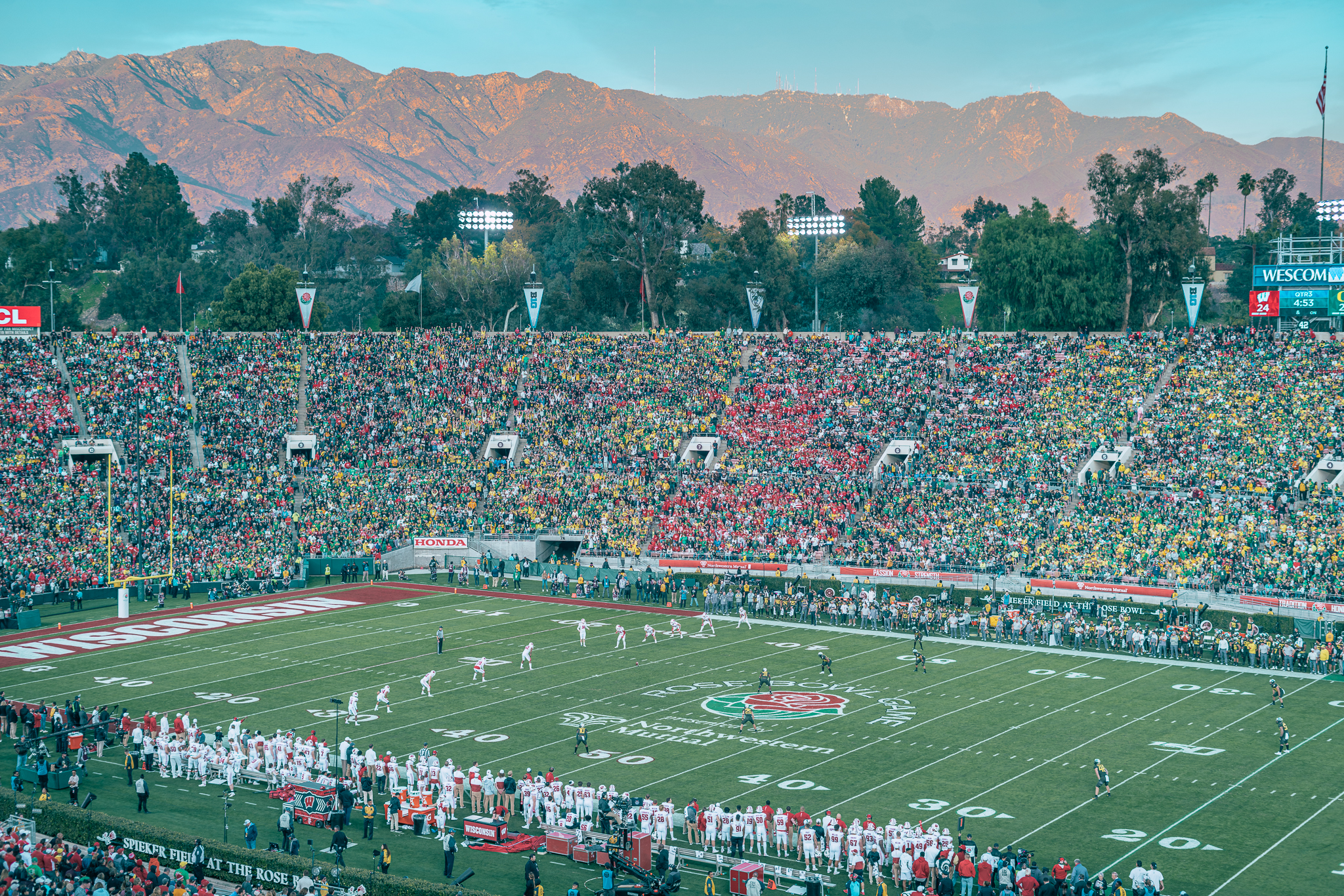
The Rose Bowl in Pasadena represents the pinnacle of college football’s storied history in California. Often hailed as “America’s Stadium,” it opened in 1922 and now boasts a capacity of 88,565. Though it primarily hosts UCLA home games, the Rose Bowl has also welcomed countless legendary matchups, including the annual New Year’s Day Rose Bowl Game and multiple national championships. Framed by the San Gabriel Mountains, the venue’s scenic backdrop is as iconic as its events, creating postcard-worthy sunsets that add a layer of grandeur to each kickoff. Its open-bowl design, wide concourses, and status as a National Historic Landmark reflect both its architectural significance and cultural impact. Beyond college ball, the Rose Bowl has hosted World Cup soccer, Olympic events, and major concerts, solidifying its place in global sports lore.
6. Colorado – Folsom Field (Capacity: 50,183)
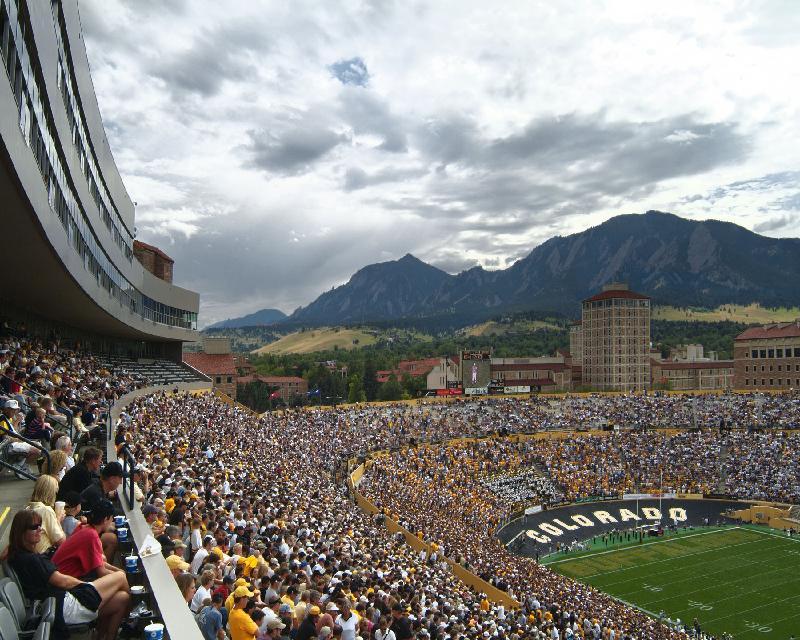
Folsom Field, perched in the picturesque foothills of Boulder, is the University of Colorado’s proud home for the Buffaloes. First opened in 1924, it currently accommodates around 50,183 fans, with expansions carefully blending old-world charm and modern convenience. The stadium’s location is legendary: glimpses of the Flatirons to the southwest create a breathtaking canvas at dusk, captivating fans and opposing teams alike. On autumn Saturdays, Ralphie the buffalo—CU’s live mascot—charges across the field, eliciting roars of excitement from the spirited student section. Folsom Field’s altitude of about 5,400 feet adds another layer of complexity for visiting squads, as the thinner air can affect endurance. Recent renovations introduced a state-of-the-art high-definition video board and improved concessions, ensuring an enhanced experience without losing Folsom’s historic appeal.
7. Connecticut – Yale Bowl (Capacity: 61,446)
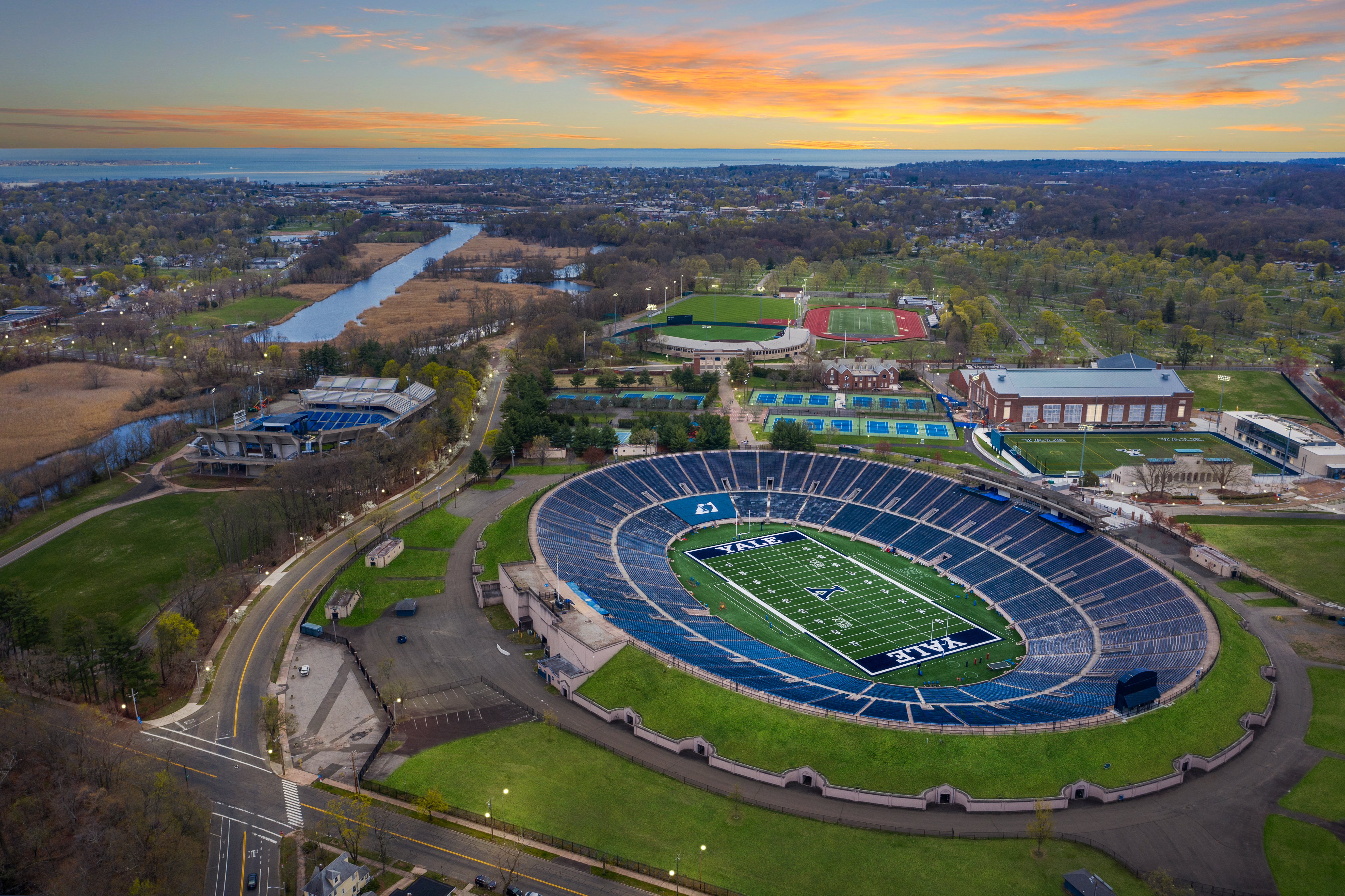
Opened in 1914, the Yale Bowl in New Haven stands as a pioneering figure in stadium design. Its elliptical shape inspired future bowls nationwide, including the Rose Bowl. With a capacity of about 61,446, it houses the Yale Bulldogs and remains a symbol of Ivy League tradition. Historically, it’s hosted not only classic rivalries such as “The Game” against Harvard but also NFL exhibitions and even the occasional concert. Though modern stadiums have surpassed it in amenities, the Yale Bowl’s vintage charm remains intact: unadorned concrete seating, minimalist concourses, and a grass berm that encourages laid-back picnicking on game days. The structure is sunken into the earth, making the field level about 30 feet below ground. When the Bulldogs score, cheers reverberate across the sunken seating bowl, awakening echoes of generations past who’ve cheered in this same historic venue.
8. Delaware – Delaware Stadium (Capacity: 18,800)
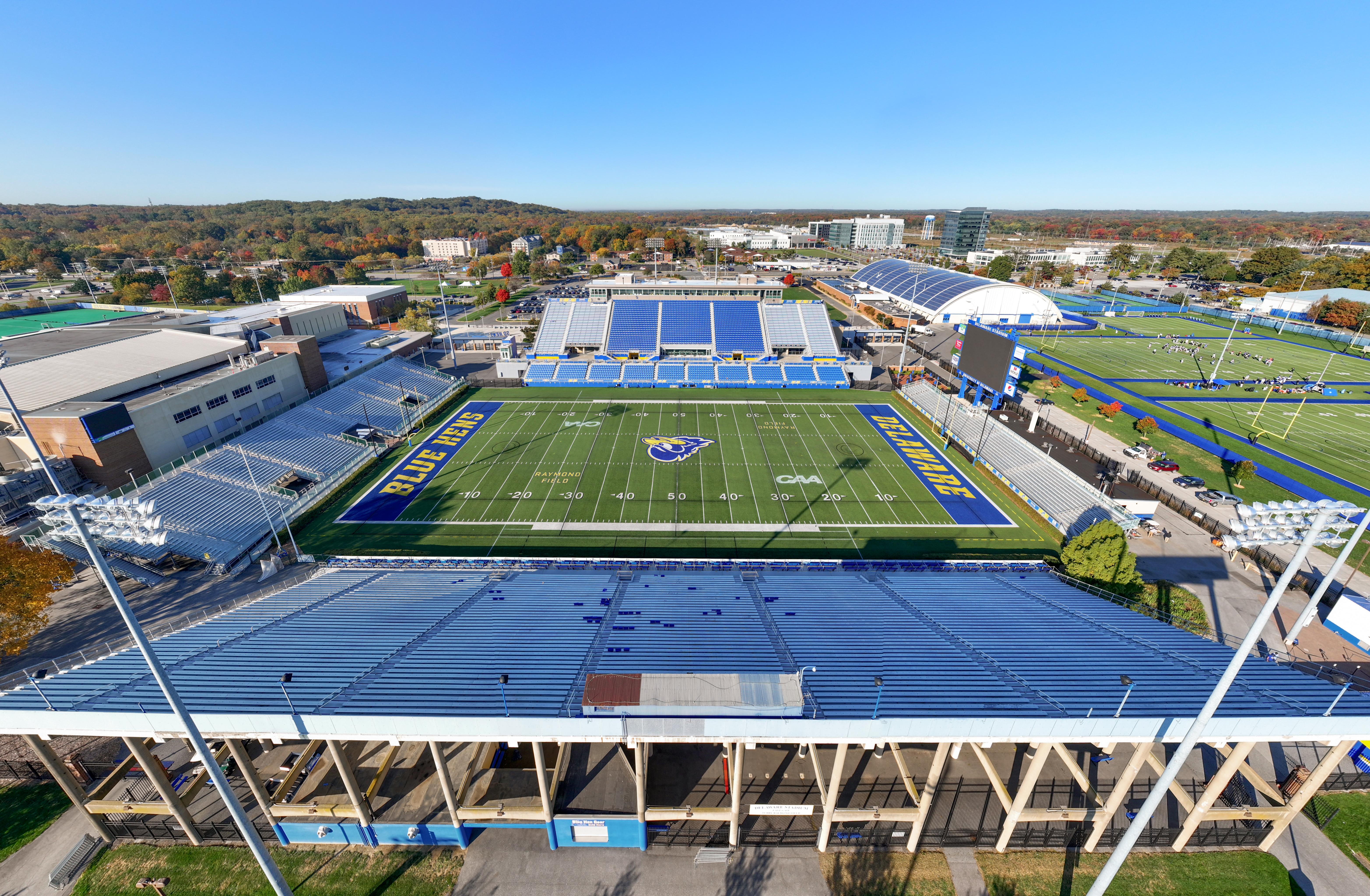
Delaware Stadium in Newark holds a unique place in FCS football lore, hosting the University of Delaware Fightin’ Blue Hens since 1952. With a capacity near 18,800, it’s the largest sporting venue in the state—tucked into a campus known for its colonial-inspired architecture and storied history. On Saturdays, fans gather hours before kickoff for vibrant tailgates along Stadium Drive, decked out in blue and gold, eager to continue the Blue Hen tradition. Notable expansions over the years introduced modern seating, upgraded lighting, and a crisp scoreboard, enhancing the game-day experience. Through the decades, the stadium’s field has seen numerous championship runs, testament to Delaware’s proud tradition of athletic excellence.
9. Florida – Ben Hill Griffin Stadium (Capacity: 88,548)
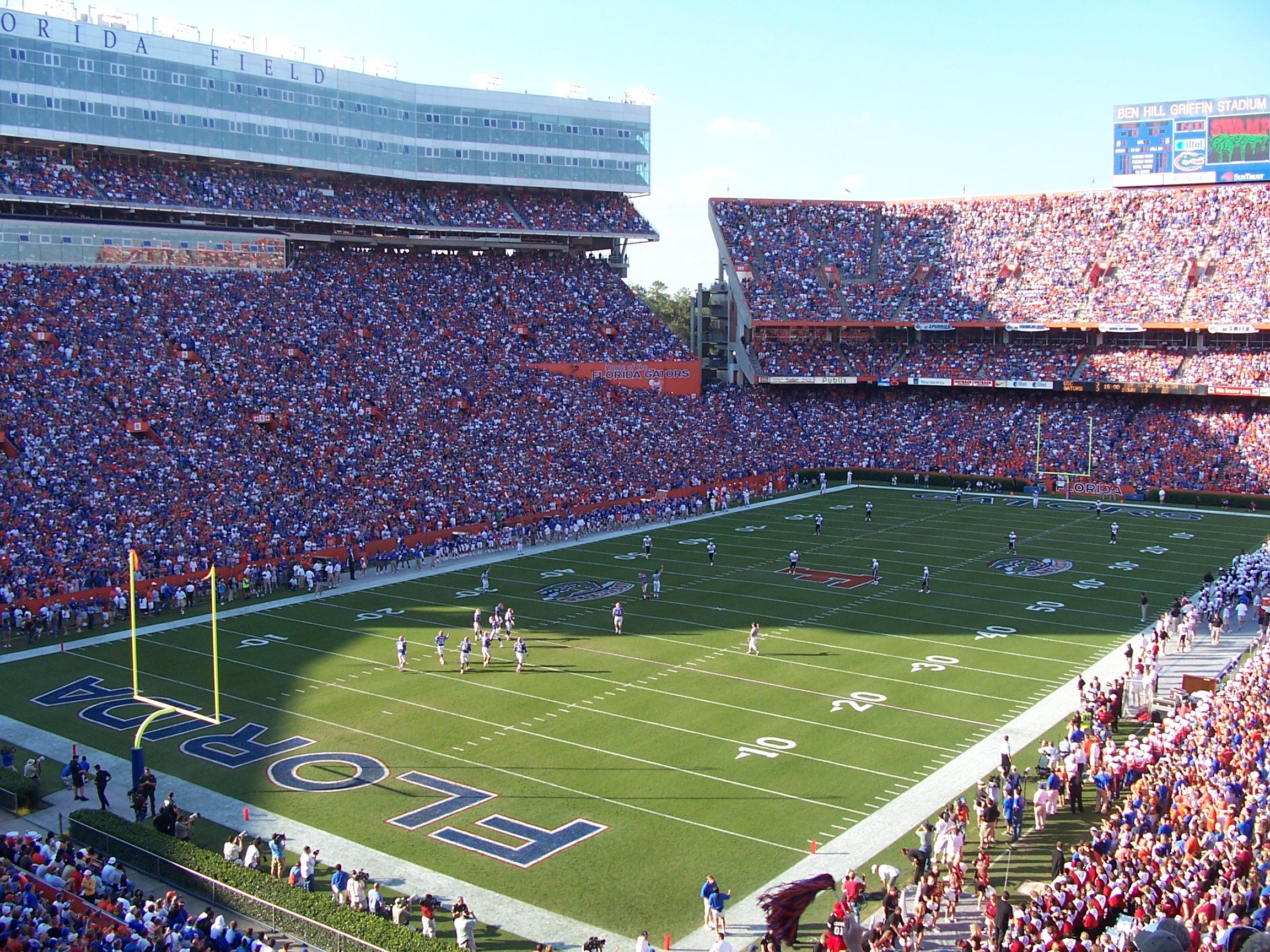
Ben Hill Griffin Stadium—fondly known as “The Swamp”—is the University of Florida’s pulsing football heart in Gainesville. Opened in 1930 and expanded multiple times, it now accommodates roughly 88,548 fans, creating a cauldron of noise that can disorient visiting teams. Nicknamed “The Swamp” by former head coach Steve Spurrier, it references both Florida’s hot, humid climate and the Gators’ home-field advantage. The horseshoe-shaped design and steep seating create walls of orange and blue, with fans nearly on top of the action. This fervor only intensifies during big SEC clashes, when the roar grows so loud it reverberates off the concrete concourses. Despite the sweltering Florida heat, Gator faithful pack the stadium in droves, arms raised for the iconic Gator Chomp.
10. Georgia – Sanford Stadium (Capacity: 92,746)
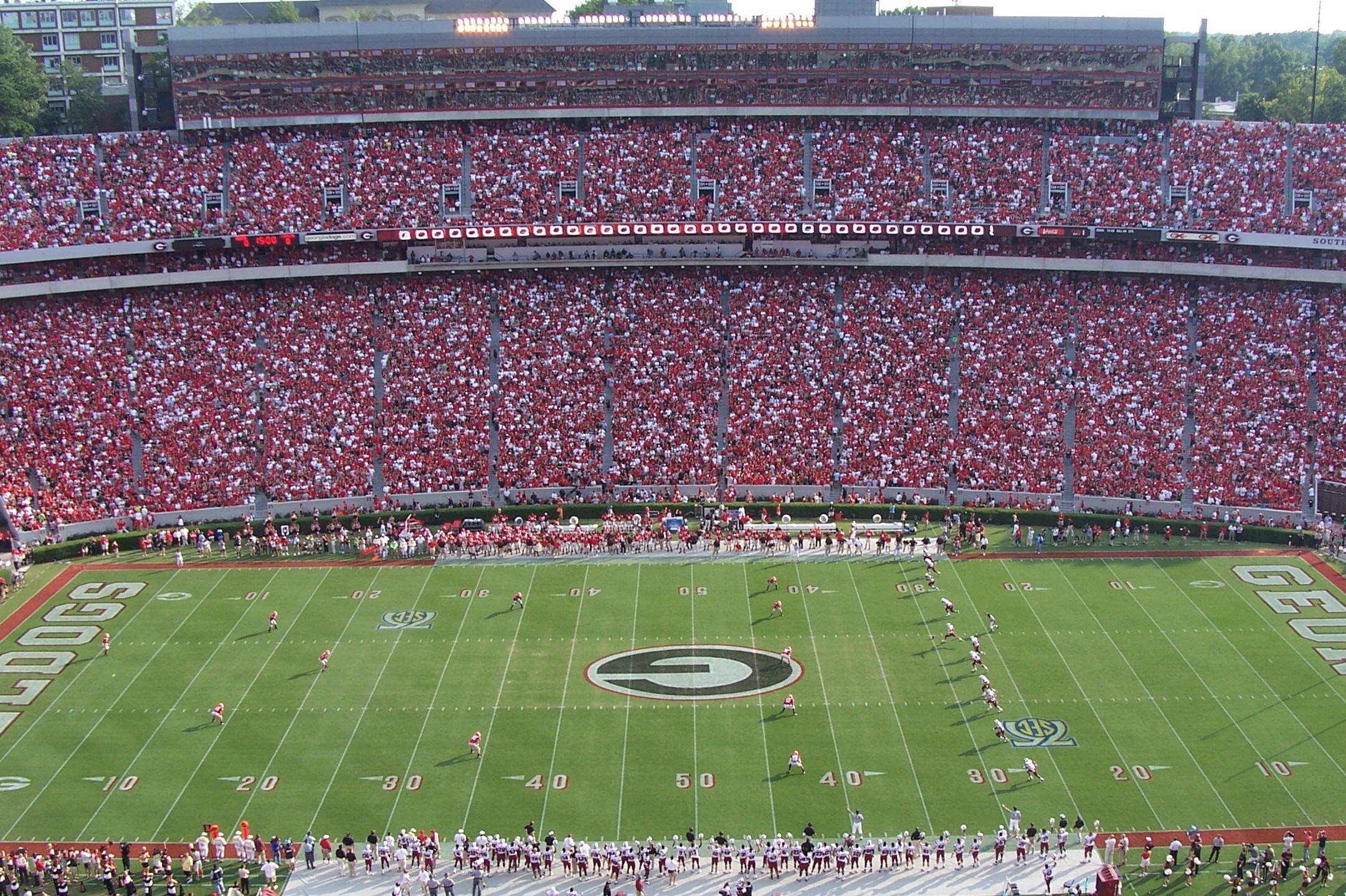
Sanford Stadium in Athens stands as a shrine to the University of Georgia’s Bulldog spirit, hosting 92,746 fans in a storied SEC environment. Built in 1929, the stadium has grown to be one of college football’s largest, renowned for its signature hedges bordering the field—planted to resemble the rose hedges of the early Rose Bowl. This charming detail earned the home turf the nickname “Between the Hedges.” Game days begin with bustling tailgates across the campus’s rolling hills, while the Redcoat Band and a sea of red-and-black create a unifying fervor. With national championships and Heisman-caliber talents gracing its stage, Sanford has hosted countless iconic moments. Recent renovations introduced expanded seating and updated amenities, yet the stadium’s historic essence remains.
11. Hawaii – Aloha Stadium (Capacity: 50,000)
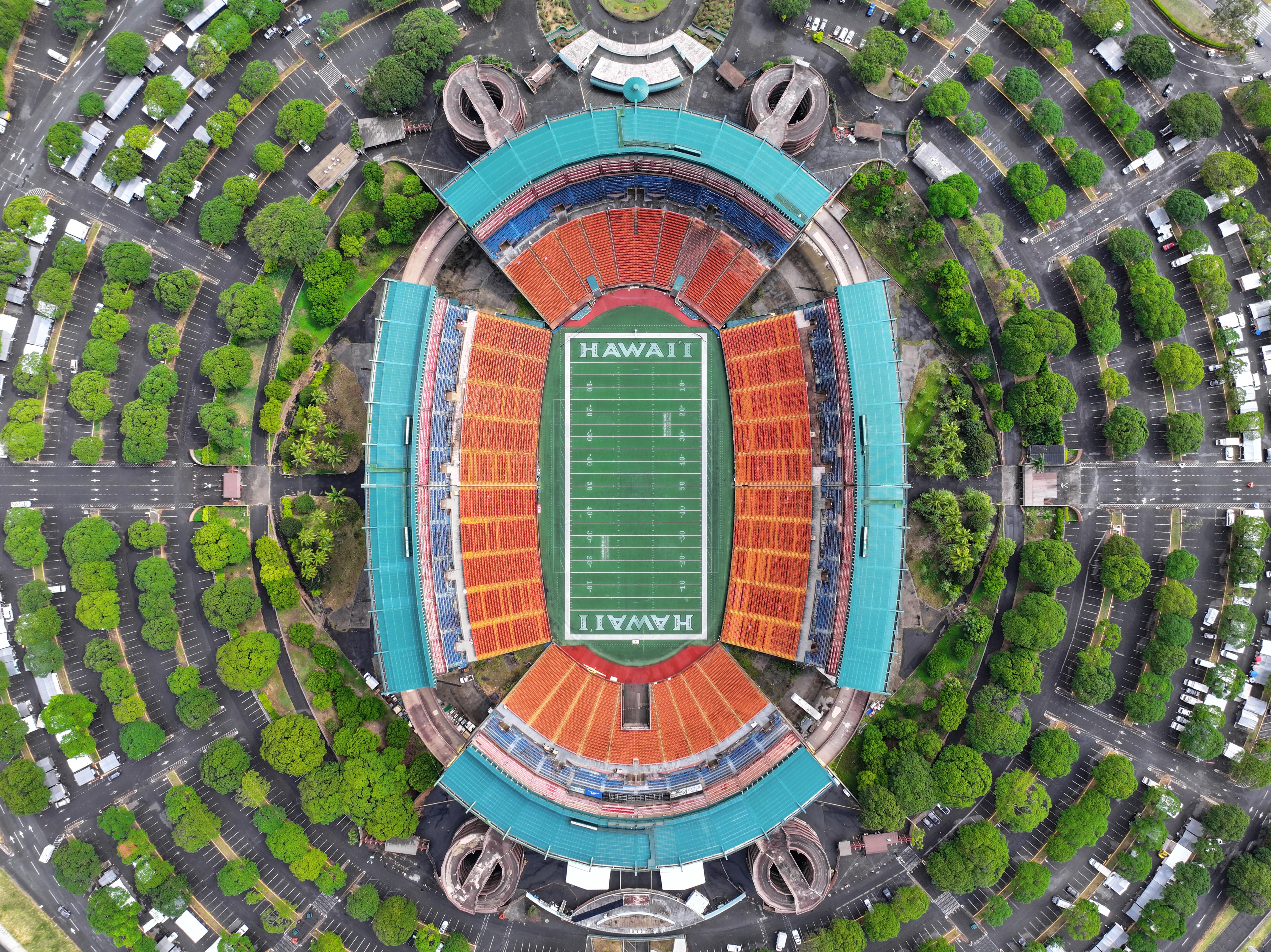
Though currently closed for renovation and debate regarding its future, Aloha Stadium in Honolulu remains Hawaii’s largest listed college venue. Historically home to the University of Hawaii Rainbow Warriors, it accommodated some 50,000 spectators, hosting major events like the NFL Pro Bowl and the Aloha Bowl. Its multipurpose design featured moveable seating sections, transforming the field to accommodate diverse sports—from football to baseball. When the Rainbow Warriors took the turf, fans greeted them with a fusion of island warmth and raucous cheering known as the “Hawaiian Roll.” Luaus and tailgates often preceded games, blending local culture—think plate lunches, ukuleles, and aloha shirts—with the intensity of collegiate football.
12. Idaho – Albertsons Stadium (Capacity: 36,387)
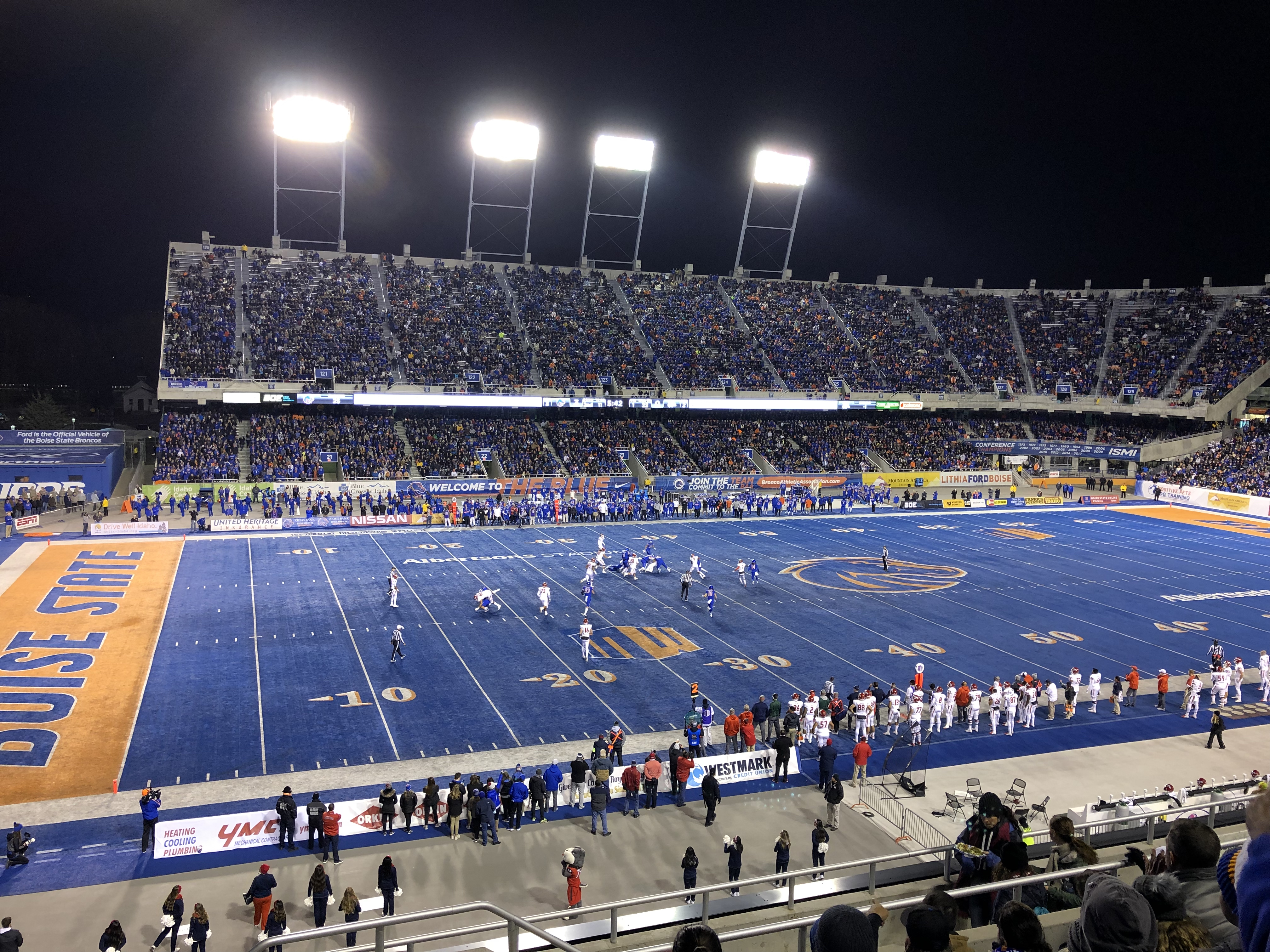
Albertsons Stadium at Boise State University is famous for its eye-catching blue turf, a quirk that quickly became its trademark when introduced in 1986. Holding around 36,387 fans, this stadium has witnessed the Broncos’ rise to national prominence, including multiple conference championships and a Fiesta Bowl victory that sealed Boise State’s underdog-to-powerhouse narrative. The bright blue field—fondly dubbed the “Smurf Turf”—is more than a conversation starter; it’s a symbol of the Broncos’ innovation and willingness to stand out. Over the years, expansion and renovation have added modern seats, improved concessions, and a sleek press box, creating a comfortable experience for fans braving the Idaho chill.
13. Illinois – Memorial Stadium (Capacity: 60,670)
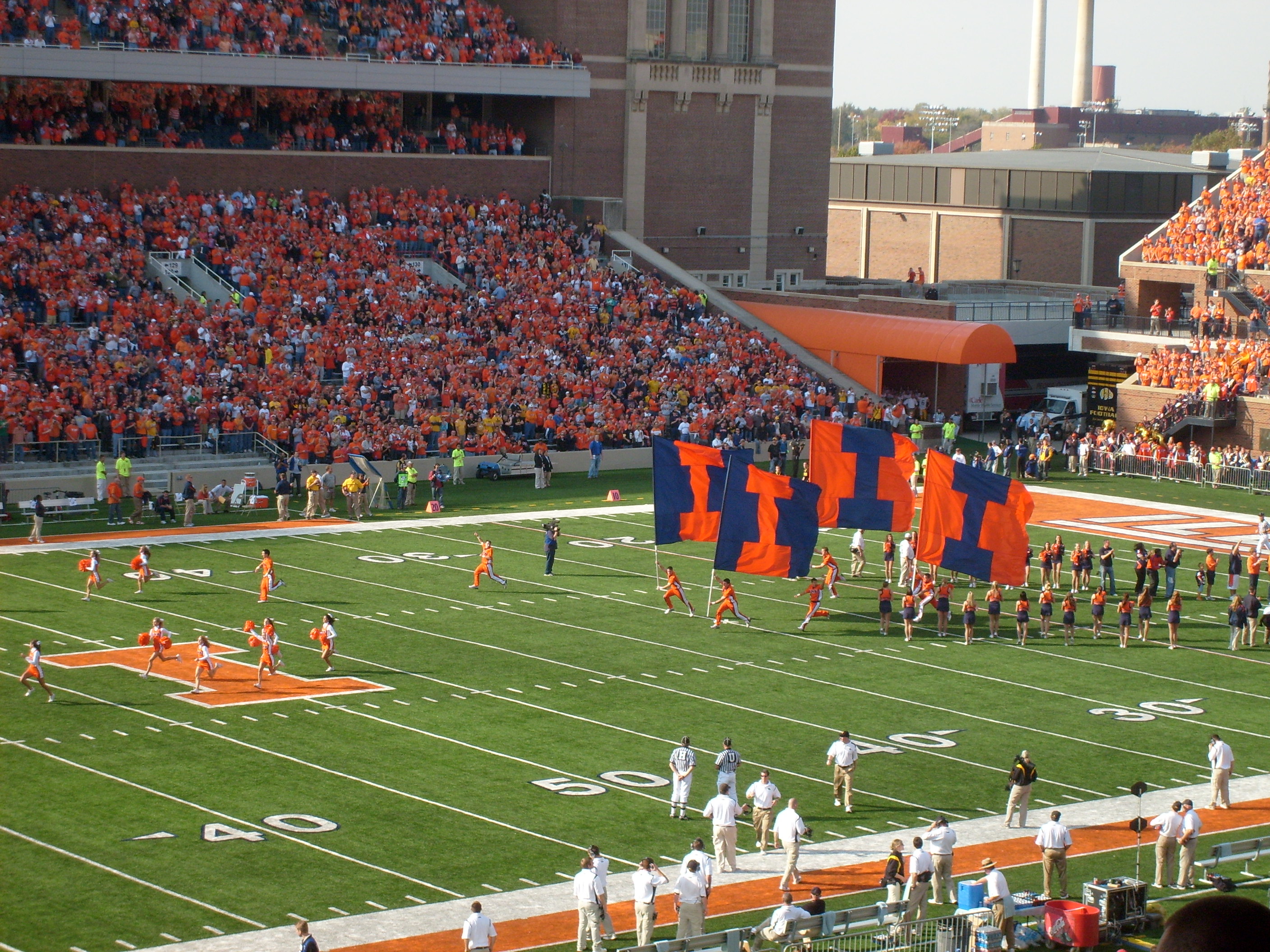
Memorial Stadium in Champaign stands as a testament to the University of Illinois’ long-standing football heritage. Opened in 1923, the stadium memorializes the 189 alumni and students who lost their lives in World War I—an emotional layer embedded within its massive structure. With a capacity of around 60,670, it has hosted legends like Red Grange, the “Galloping Ghost,” whose performance here helped shape college football history. The dual towers at the stadium’s east and west entrances commemorate fallen soldiers, adding a solemn reverence to game-day excitement. Whether during a Big Ten rivalry or a homecoming showdown, Memorial Stadium stands resolute as an Illinois icon.
14. Indiana – Notre Dame Stadium (Capacity: 77,622)
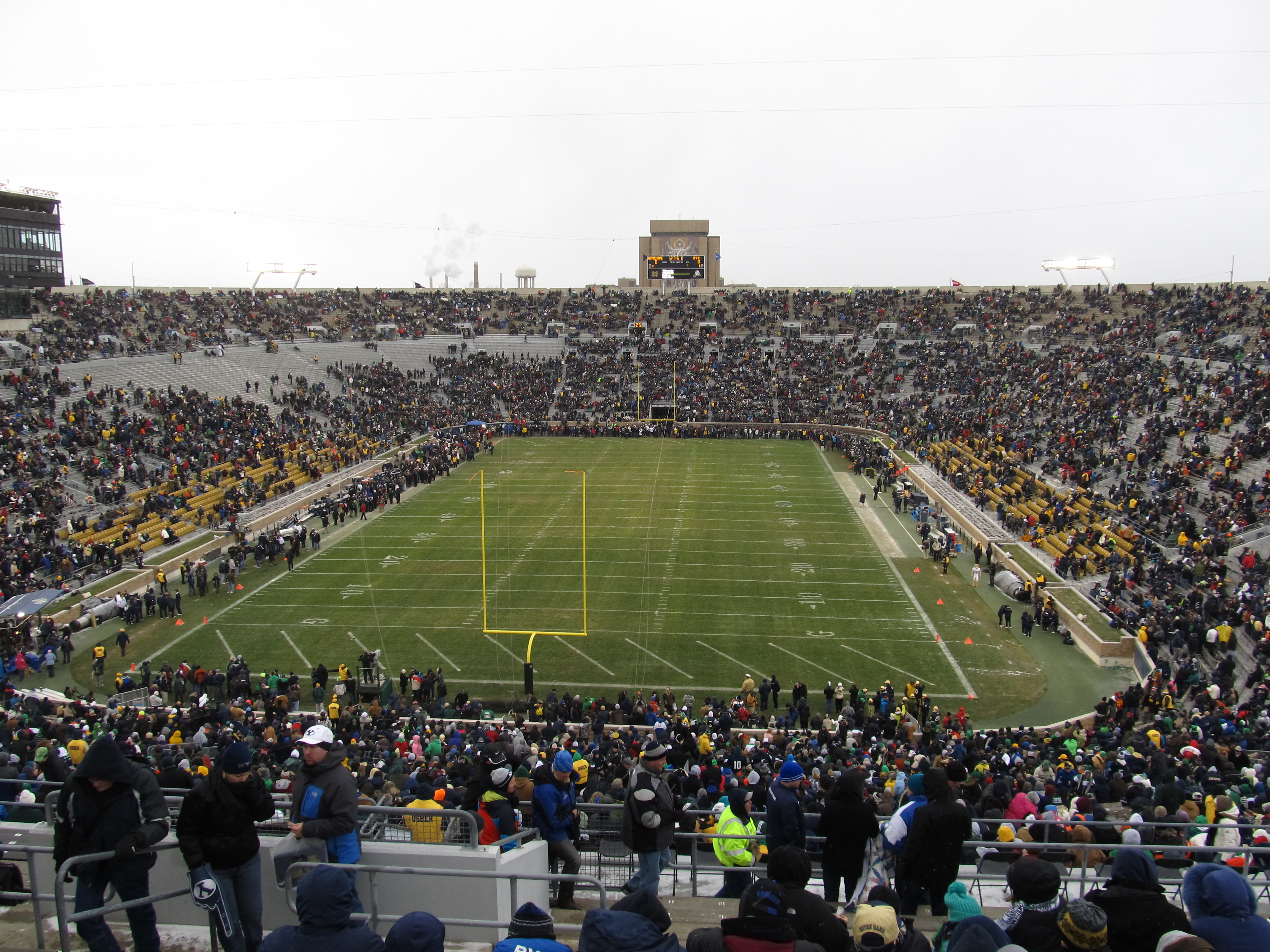
Notre Dame Stadium in South Bend represents a cornerstone of college football tradition, hosting the Fighting Irish since 1930. With a capacity of around 77,622, it has expanded over time yet retains its classic feel—an original vision shaped by legendary coach Knute Rockne. The golden dome of the nearby Main Building and the “Touchdown Jesus” mural towering over the north end zone epitomize the campus’s mystique. On game days, fans and alumni converge in droves, guided by bagpipe performances and the echo of the Fightin’ Irish band. Inside, iconic gold helmets glint under the lights, fueling an atmosphere of reverence and excitement. The stadium has witnessed numerous Heisman winners, national championships, and storied rivalries, sealing its place among college football’s pantheon.
15. Iowa – Kinnick Stadium (Capacity: 69,250)
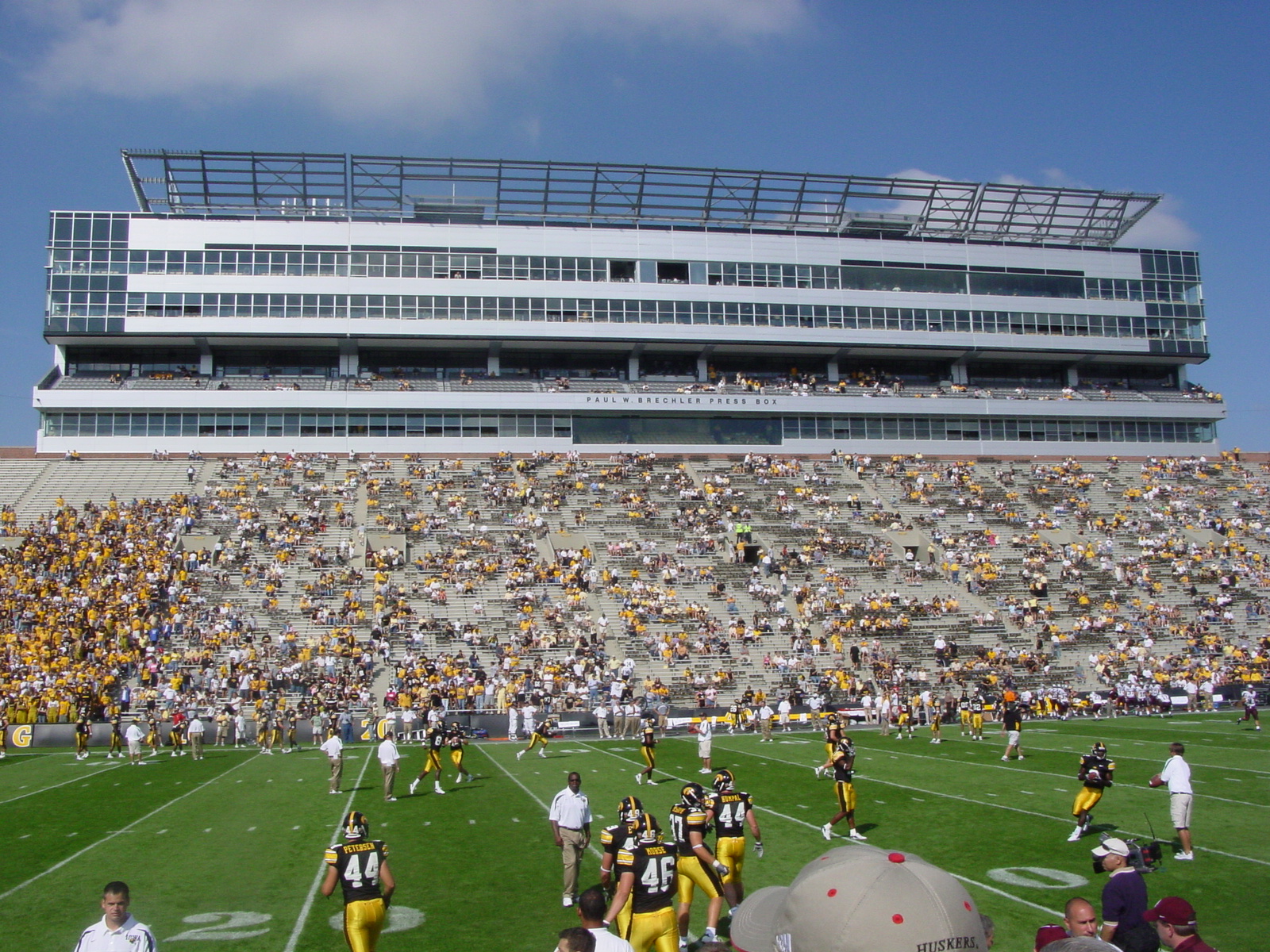
Kinnick Stadium in Iowa City, named for Hawkeye legend Nile Kinnick, is a centerpiece of Big Ten football. Its capacity of roughly 69,250 ensures a formidable home-field environment, where fans pack the stands in black and gold each fall weekend. One of the stadium’s most heartwarming traditions is the “Iowa Wave,” introduced in 2017: at the end of the first quarter, everyone in the stadium turns and waves to the top floor of the adjacent children’s hospital, bringing smiles to young patients and families. Kinnick Stadium also boasts a rich history of hosting powerhouse teams and dramatic upsets, with the Hawkeyes often playing spoiler to ranked opponents. For many Iowans, a Saturday spent at Kinnick—cheering, hugging strangers after a touchdown—is the pinnacle of communal spirit.
16. Kansas – Bill Snyder Family Stadium (Capacity: 50,000)
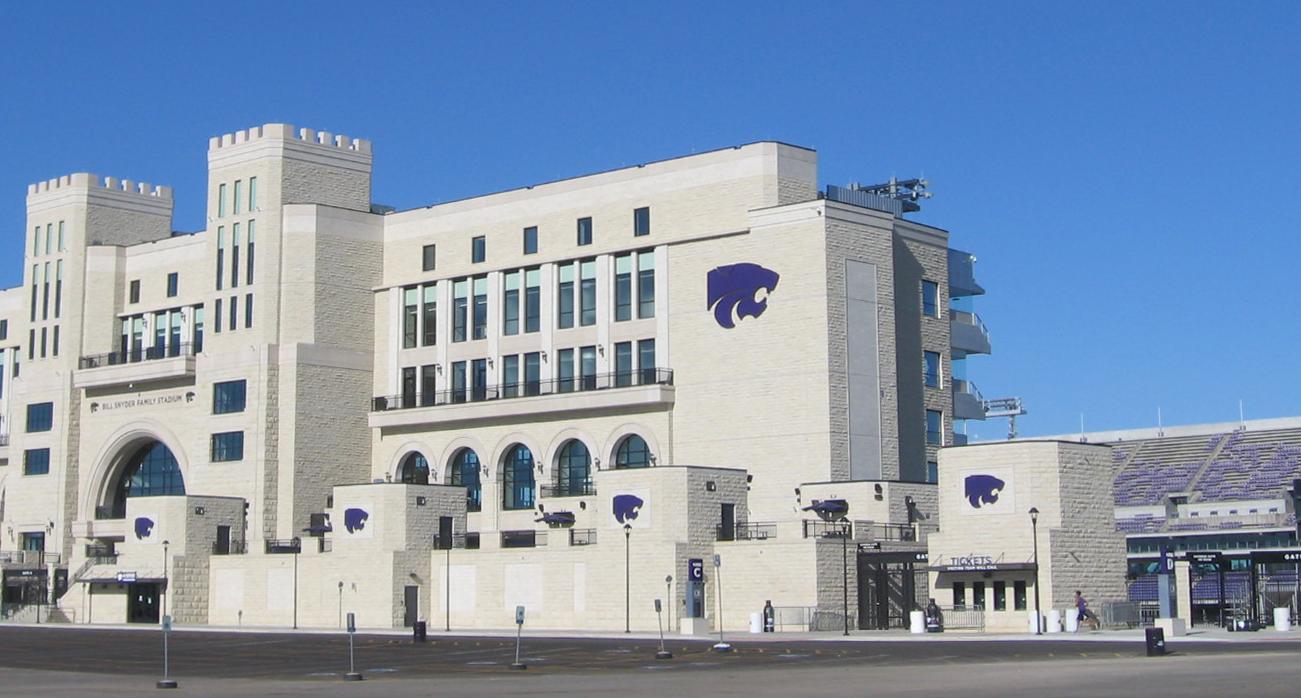
Bill Snyder Family Stadium in Manhattan, home to the Kansas State Wildcats, exemplifies the transformative power of coaching legend Bill Snyder himself. Built in 1968, the stadium’s capacity of 50,000 might seem modest compared to larger venues, but its atmosphere on game days is electric, thanks to a fiercely loyal fan base. Nicknamed “The Little Apple,” Manhattan surges with purple pride as tailgaters gather along the parking lots and quads near campus. The stadium has seen extensive renovations, including the modernized West Side Stadium Center, upgraded suites, and expanded seating, creating a comfortable yet loud environment for visiting teams to contend with. K-State’s rise from obscurity to national contention—much of it under Snyder’s leadership—unfolded on this turf, lending the venue a sense of underdog grit and accomplishment.
17. Kentucky – Kroger Field (Capacity: 61,000)
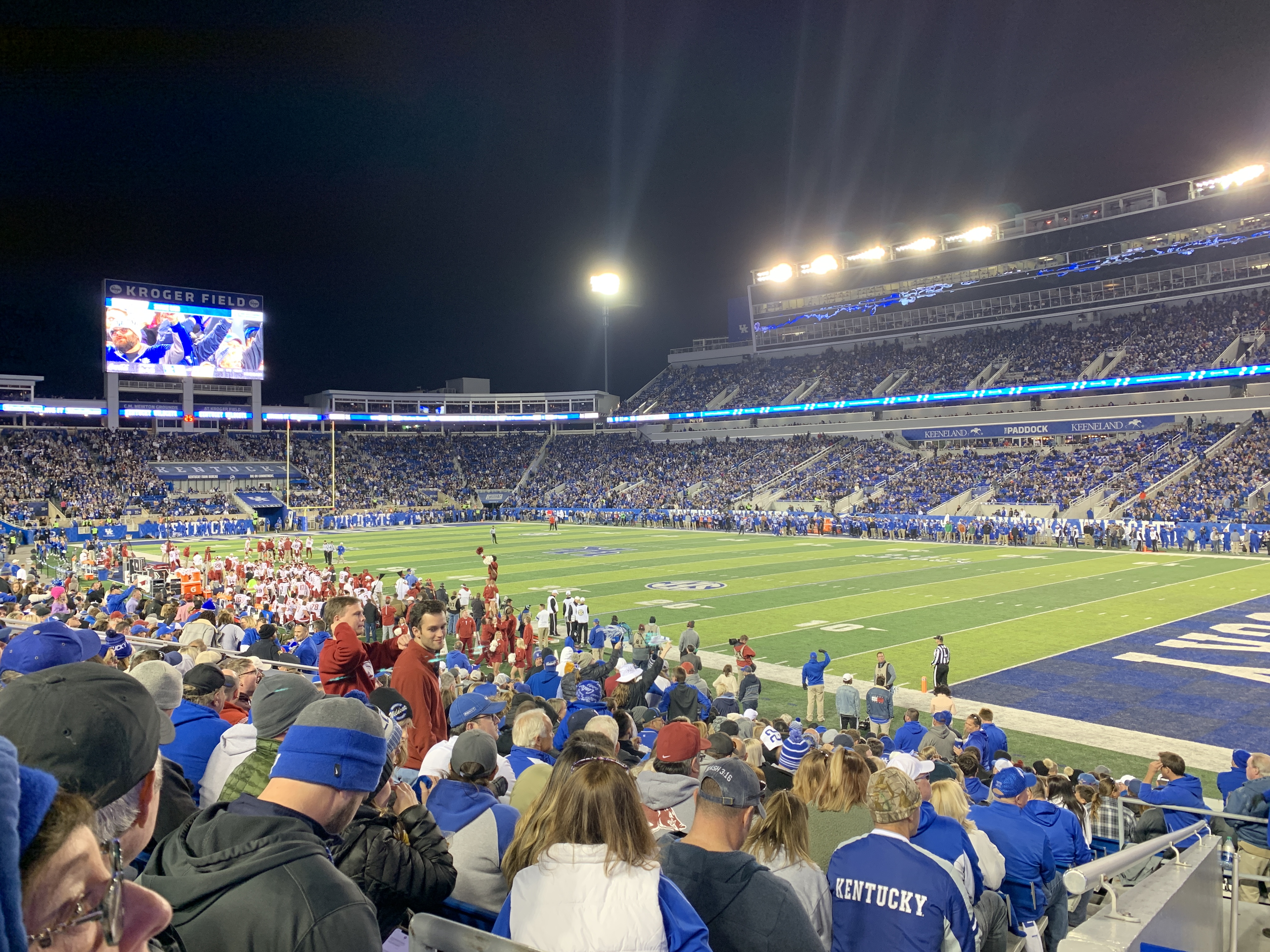
Kroger Field, formerly known as Commonwealth Stadium, is the heart of college football in Lexington, Kentucky, and home to the University of Kentucky Wildcats. Opened in 1973, this iconic stadium has undergone several renovations, transforming it into a state-of-the-art facility that offers fans a thrilling game-day experience. With a current seating capacity of 61,000, Kroger Field ranks as one of the larger stadiums in the Southeastern Conference (SEC), providing an electrifying atmosphere for fans and players alike. The stadium’s design allows for unobstructed views, ensuring spectators feel close to the action on the field. The $126 million renovation completed in 2015 modernized the venue with premium seating options, an updated press box, and expanded concourses, enhancing comfort and accessibility for visitors. Known for its passionate fans and the iconic "C-A-T-S" chants, Kroger Field is a cornerstone of Kentucky football tradition, drawing thousands for each exhilarating Wildcats game.
18. Louisiana – Tiger Stadium (Capacity: 102,321)
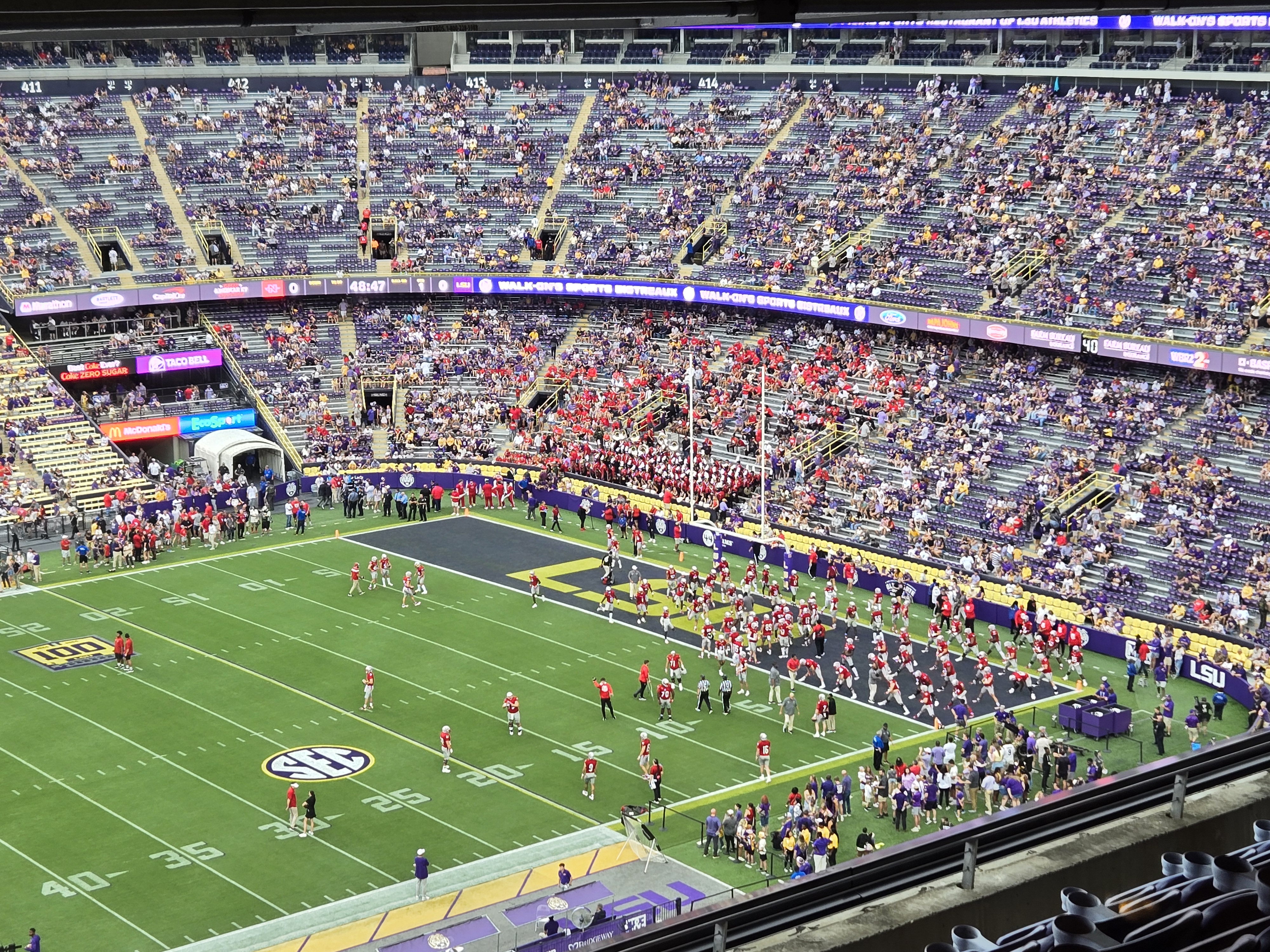
Tiger Stadium at LSU—often called “Death Valley”—radiates an intimidating aura matched by few venues. Seating over 102,000 fans, it transforms Baton Rouge into a frenzy of purple and gold every Saturday night in the fall. The stadium opened in 1924 with humble beginnings, but subsequent expansions forged the monstrous edifice seen today. Observers note that Tiger Stadium at night is among the loudest experiences in all of college football; crowd noise famously registers on seismographs when the Tigers score. The tailgate scene is legendary, featuring Cajun culinary delights and boisterous revelry. Once inside, the band’s rendition of “Callin’ Baton Rouge” and the spirited chants of “Geaux Tigers!” set an electric tone. Tiger Stadium has staged countless SEC showdowns and national championship runs, further enshrining its status as a fortress.
19. Maine – Alfond Stadium (Capacity: 10,000)
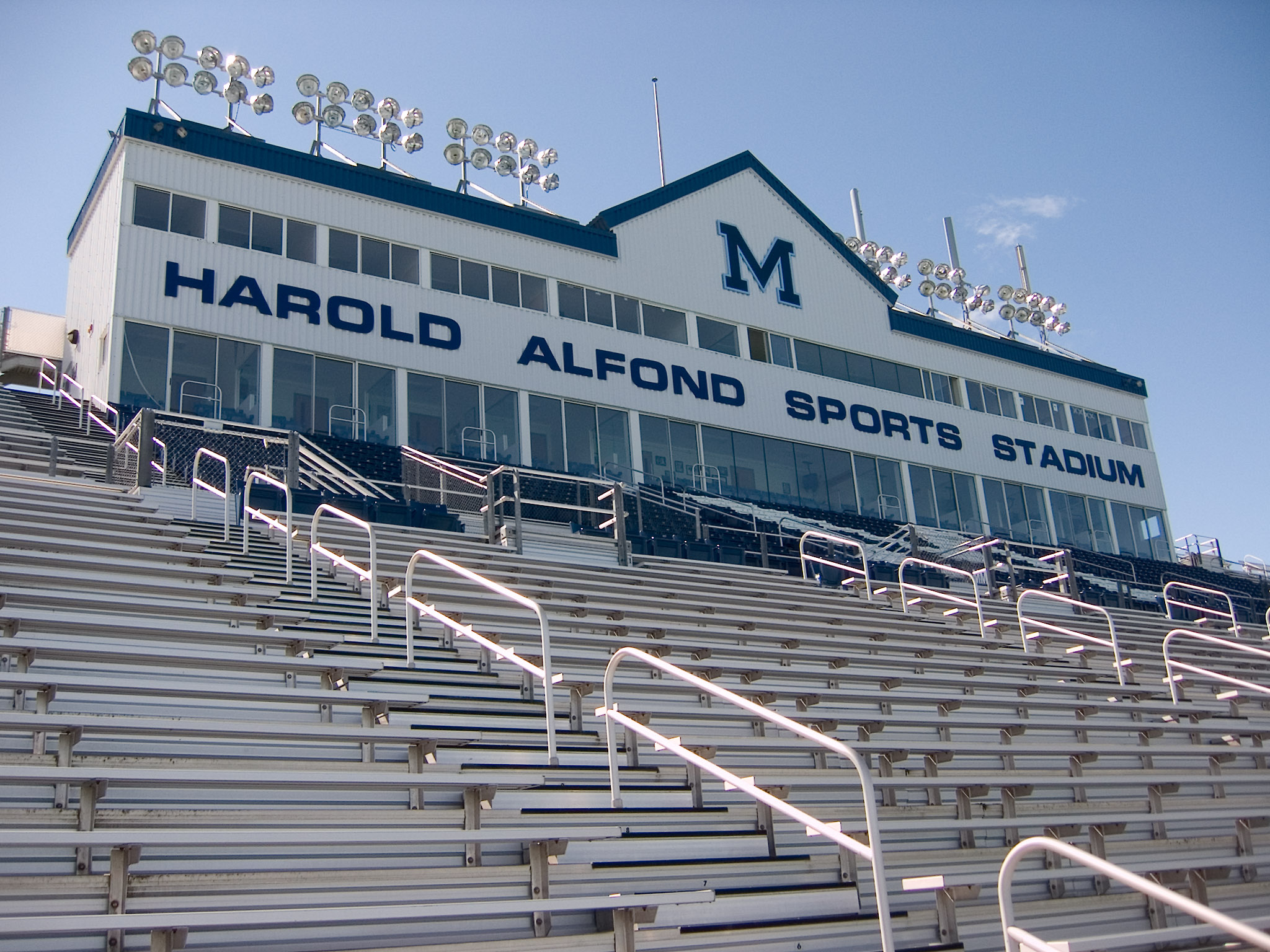
Alfond Stadium, located at the University of Maine in Orono, is the largest collegiate venue in the Pine Tree State with a capacity of about 10,000. Surrounded by evergreen forests and crisp northern air, it serves as home to the Black Bears football team. Originally built in 1947 and later renovated, the stadium was named after Harold Alfond, a prominent philanthropist whose contributions enhanced many athletic facilities across Maine. The open design of Alfond Stadium allows a wide view of Maine’s scenic woodlands, creating a laid-back yet energized environment. While it may lack the grandeur of larger stadiums, Alfond’s charm lies in its cozy feel, strong community support, and a setting that embraces the rugged beauty of New England’s northern reaches.
20. Maryland – SECU Stadium (Capacity: 51,802)
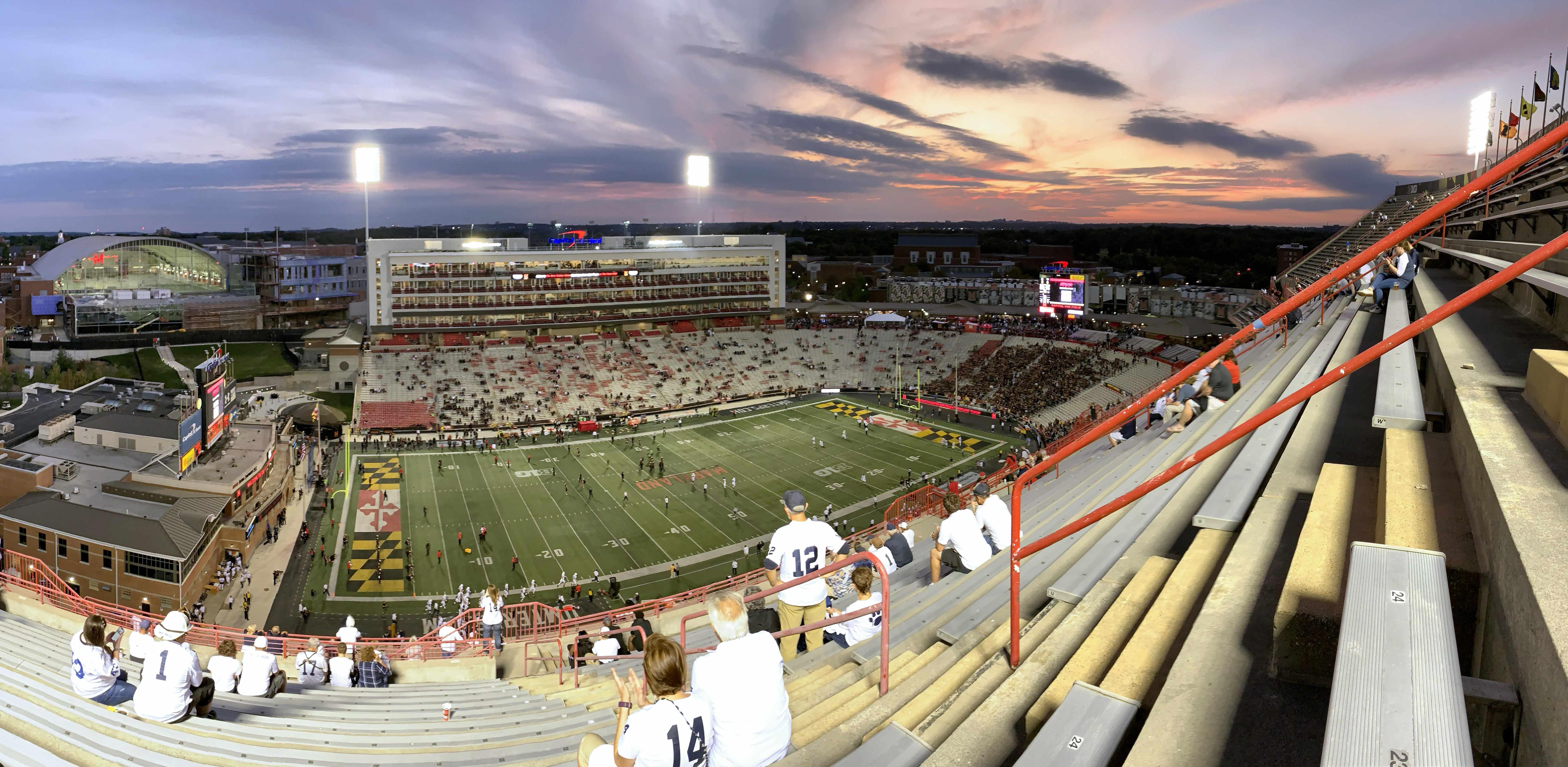
SECU Stadium at the University of Maryland in College Park blends modern fan amenities with rich Terrapin tradition. Formerly known as Maryland Stadium, its capacity of roughly 51,802 places it among the bigger Big Ten venues in the mid-Atlantic region. Built in 1950 and expanded in the decades since, it stands on the south side of campus amid rolling green lawns. Terrapins fans proudly sport red, black, gold, and white—mirroring the state flag—while crowding the robust student section. The “M” Club’s pregame events and the historic “Fear the Turtle” mantra make for a spirited introduction to kickoffs. Innovations like the Tyser Tower press box and updated video boards keep the stadium contemporary, while the Terrapin Walk and cannon blasts after touchdowns preserve old-school charm.
21. Massachusetts – Alumni Stadium (Capacity: 44,500)
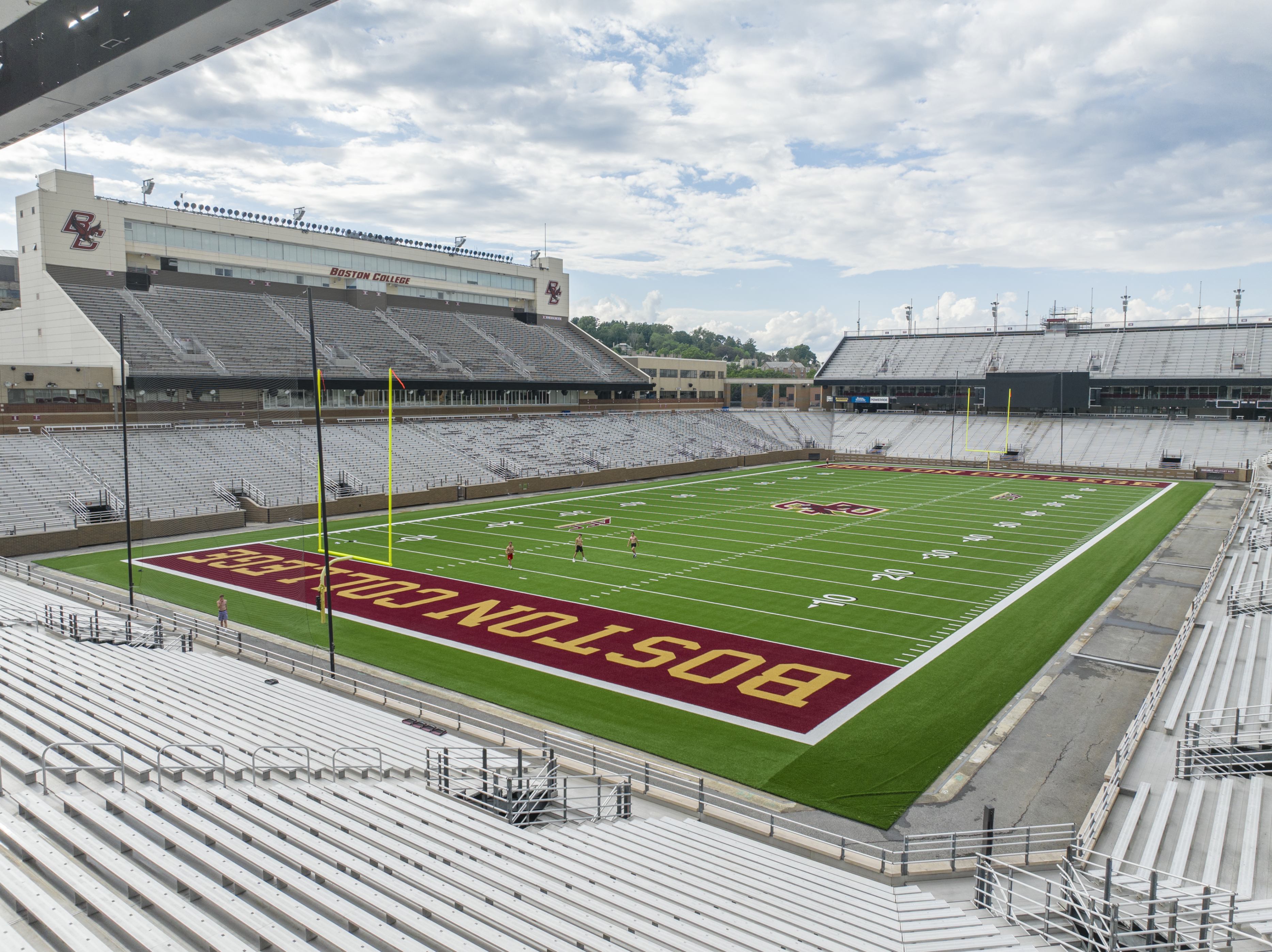
Alumni Stadium at Boston College in Chestnut Hill captures the intimate feel of an old-school campus venue despite seating nearly 44,500 fans. It opened in 1957 to replace the original Alumni Field, offering a more modern space for the Eagles football program. Over time, expansions introduced a double-decked horseshoe layout, improved concourses, and press accommodations. Though overshadowed by bigger stadiums in the ACC, Alumni Stadium stands out for its unique setting: perched on a hill with glimpses of the Boston skyline. Game days begin with the Eagles Walk, where fans greet the team en route to the stadium, culminating in a lively atmosphere inside. The BC “Screaming Eagles” Marching Band supplies energy, particularly during the iconic “For Boston” fight song.
22. Michigan – Michigan Stadium (Capacity: 107,601)
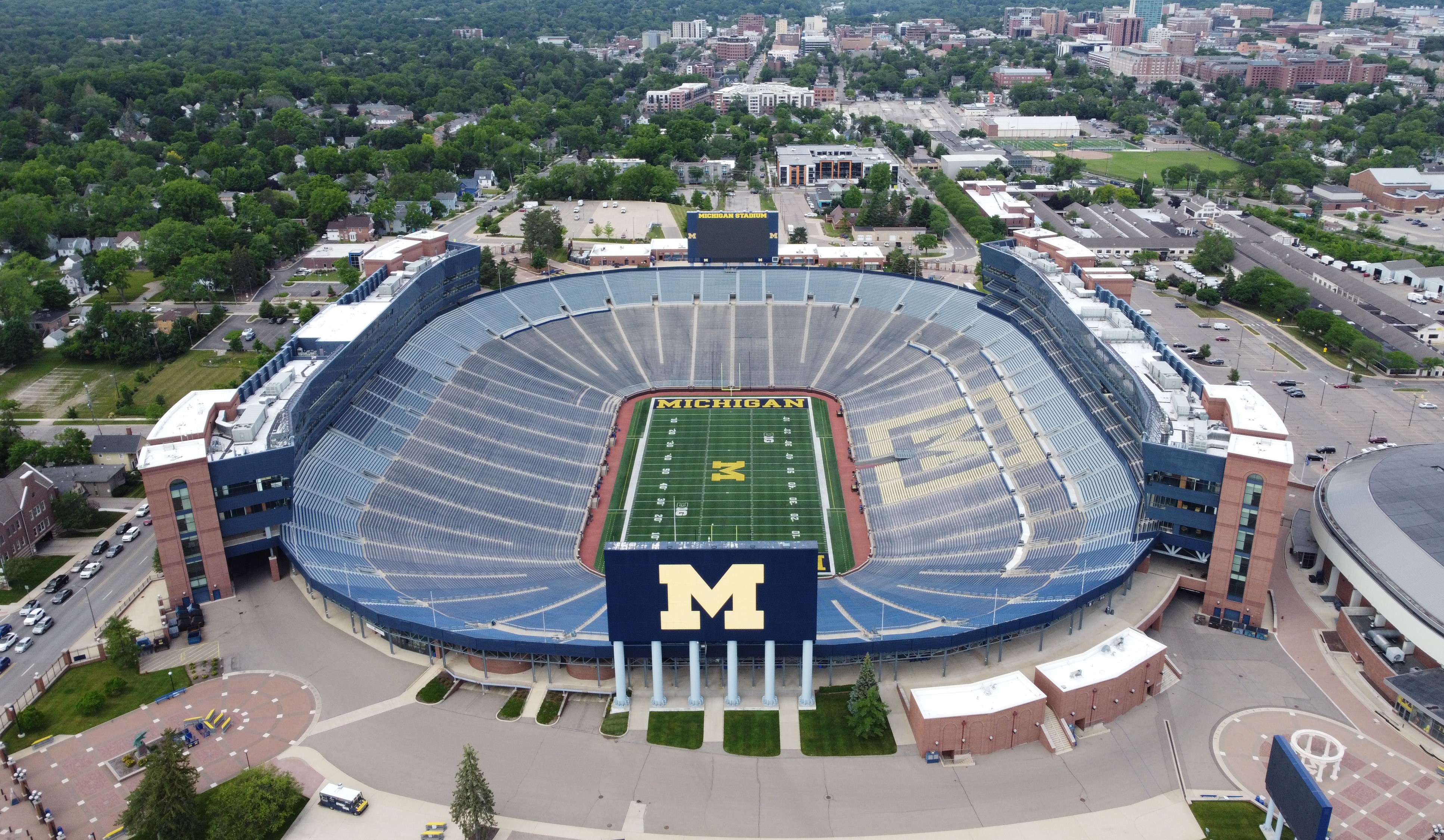
Michigan Stadium—often dubbed “The Big House”—dominates the city of Ann Arbor with a capacity of around 107,601, making it America’s largest college football stadium. Since its opening in 1927, expansions have consistently elevated its status, culminating in the massive bowl that seats well over 100,000 for Wolverines home games. Despite its enormous size, the stadium sits partially below ground level, creating a deceptively modest exterior that reveals an expansive bowl once inside. On game day, waves of maize and blue fill every corner, driven by the Michigan Marching Band and the crowd’s thunderous chants. The stadium’s storied history includes Heisman winners, legendary coaches, and famed rivalries—such as the Ohio State clash that often draws national attention.
23. Minnesota – Huntington Bank Stadium (Capacity: 50,805)
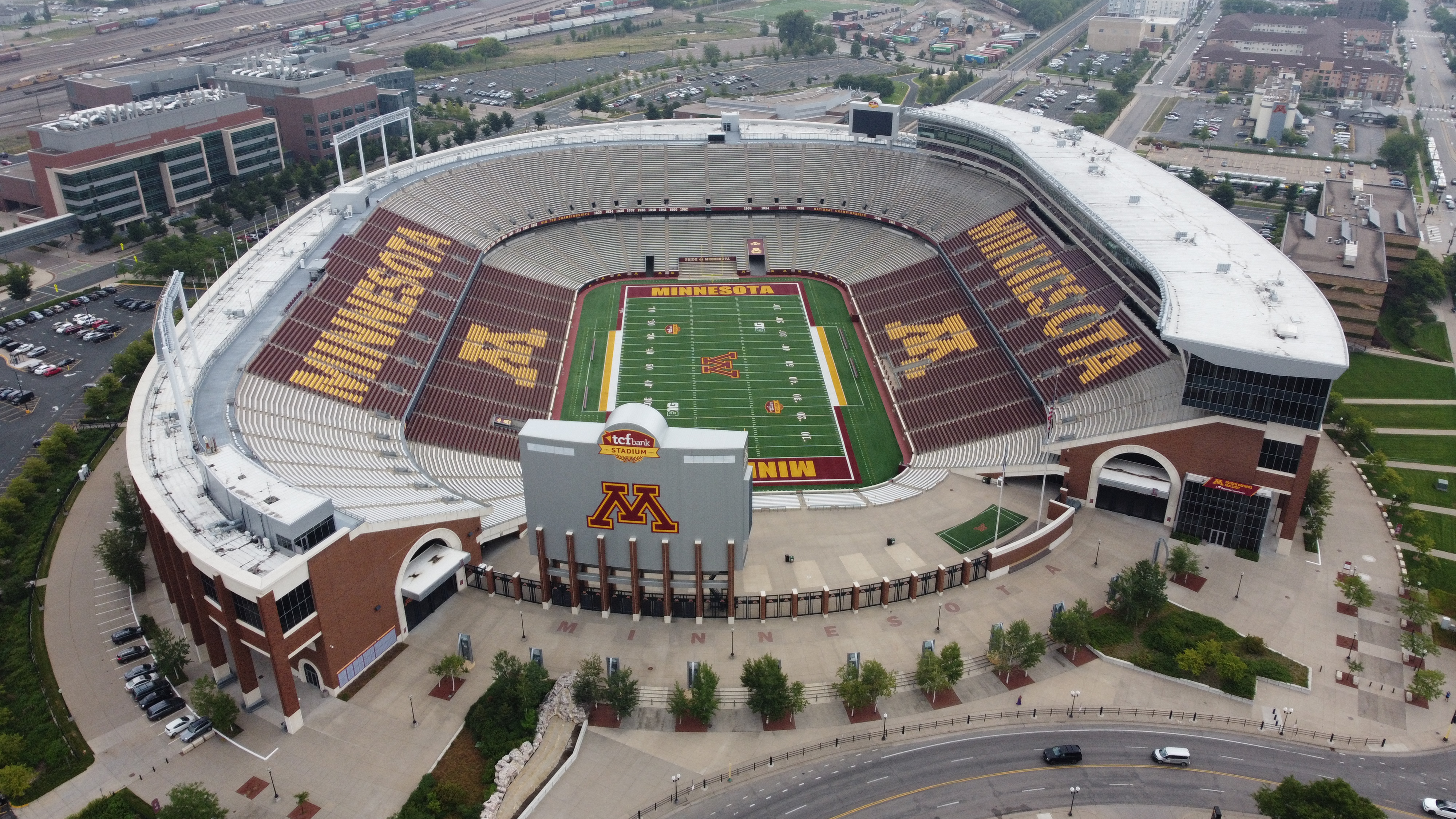
Huntington Bank Stadium in Minneapolis stands as the University of Minnesota’s football jewel, accommodating over 50,000 Golden Gopher faithful on autumn Saturdays. Opened in 2009 as TCF Bank Stadium, it was the first collegiate or professional stadium built in the state since the Metrodome in 1982. Its horseshoe layout merges classic design with modern comforts like roomy concourses, premium club seating, and an advanced scoreboard. The stadium’s open-air concept offers scenic views of the Minneapolis skyline, giving late-season games a crisp, Northern feel—especially when the temperature drops. Gold-clad students converge in the raucous student section known for boisterous chants and the “Ski-U-Mah” rally cry. Unique features like the “tribal nations” plaza and Minnesota’s historical displays reflect the school’s heritage.
24. Mississippi – Vaught-Hemingway Stadium (Capacity: 64,038)
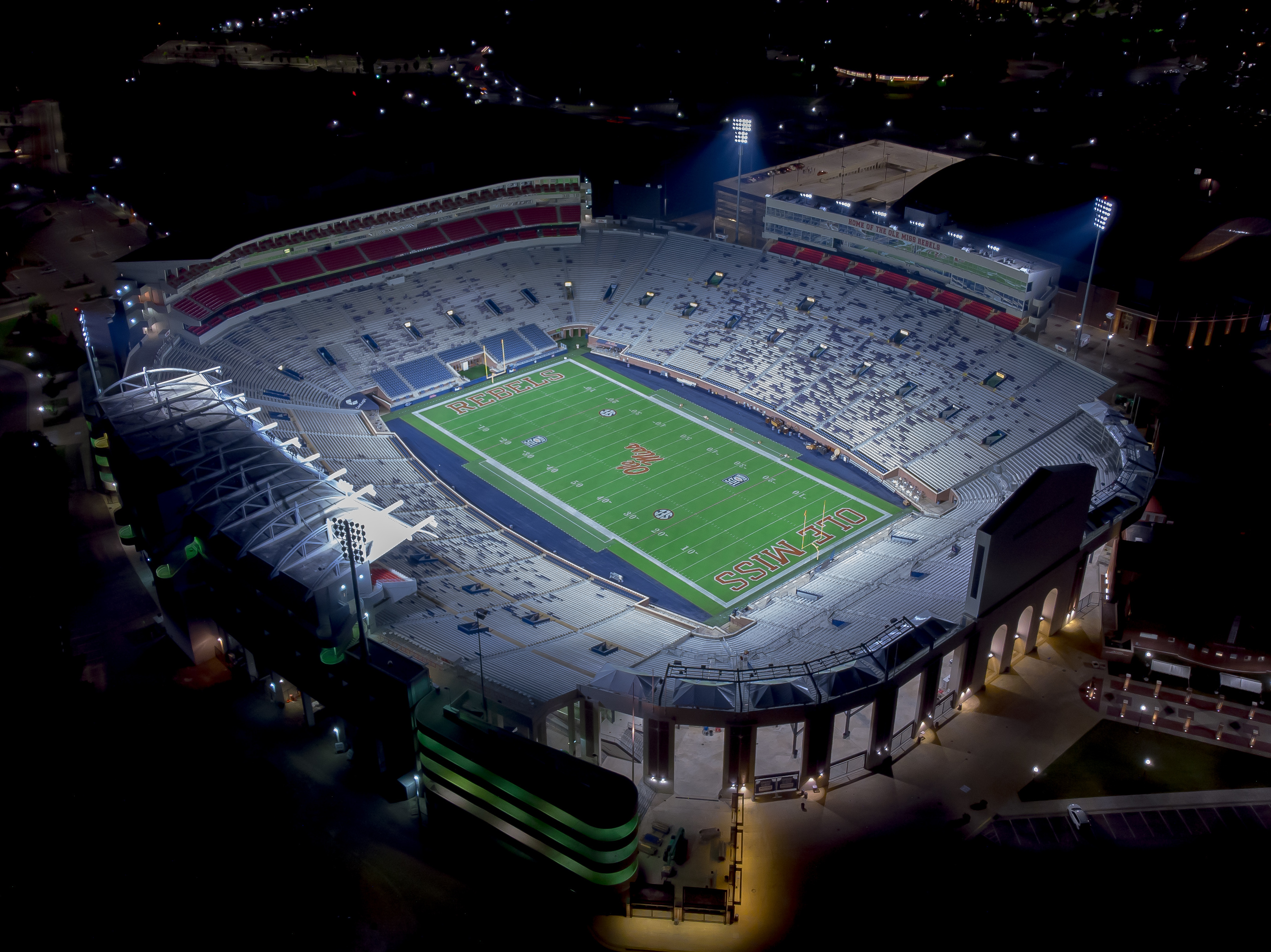
Vaught-Hemingway Stadium in Oxford embodies the University of Mississippi’s storied SEC football culture. Holding just over 64,000 fans, it’s the oldest stadium in the conference, first built in 1915 and since expanded multiple times. Named in honor of legendary figures John Howard Vaught (longtime head coach) and Judge William Hemingway (chairman of the Athletics Committee), it anchors campus life on fall weekends. Just outside is The Grove, the school’s famed tailgating area, draped in centuries-old oak trees and a sea of red and blue tents. Game days here are known for Southern hospitality, fine cuisine, and an electric buzz that sweeps across campus.
25. Missouri – Faurot Field at Memorial Stadium (Capacity: 61,620)
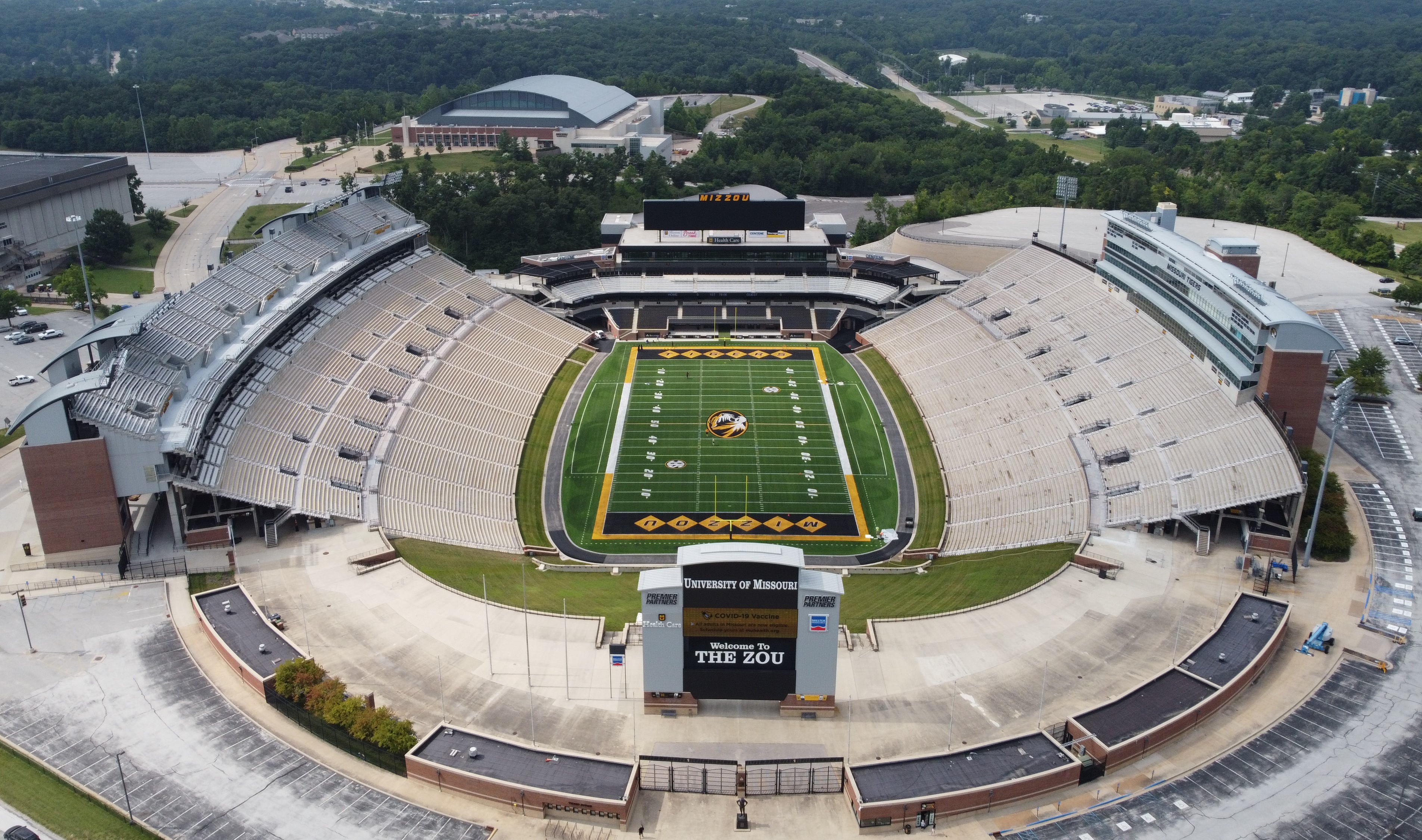
Faurot Field at Memorial Stadium in Columbia is home to the University of Missouri Tigers and brims with SEC spirit. Opened in 1926, it was named after Don Faurot, a legendary Mizzou coach who popularized the Split-T formation. The stadium’s capacity of approximately 61,620 positions it firmly among conference heavyweights, while retaining a unique identity through the iconic “Rock M” set into the north end zone’s hillside. On game days, black and gold floods the stands, with fans participating in pregame festivities along “Tiger Town” tailgates. Over the decades, expansions introduced modern amenities, from premium seating to advanced video boards, ensuring a top-tier experience. Yet tradition still runs deep: the marching band’s rousing sets, the drumline echoing across campus, and a dedicated student section that keeps energy levels high.
26. Montana – Washington-Grizzly Stadium (Capacity: 25,217)
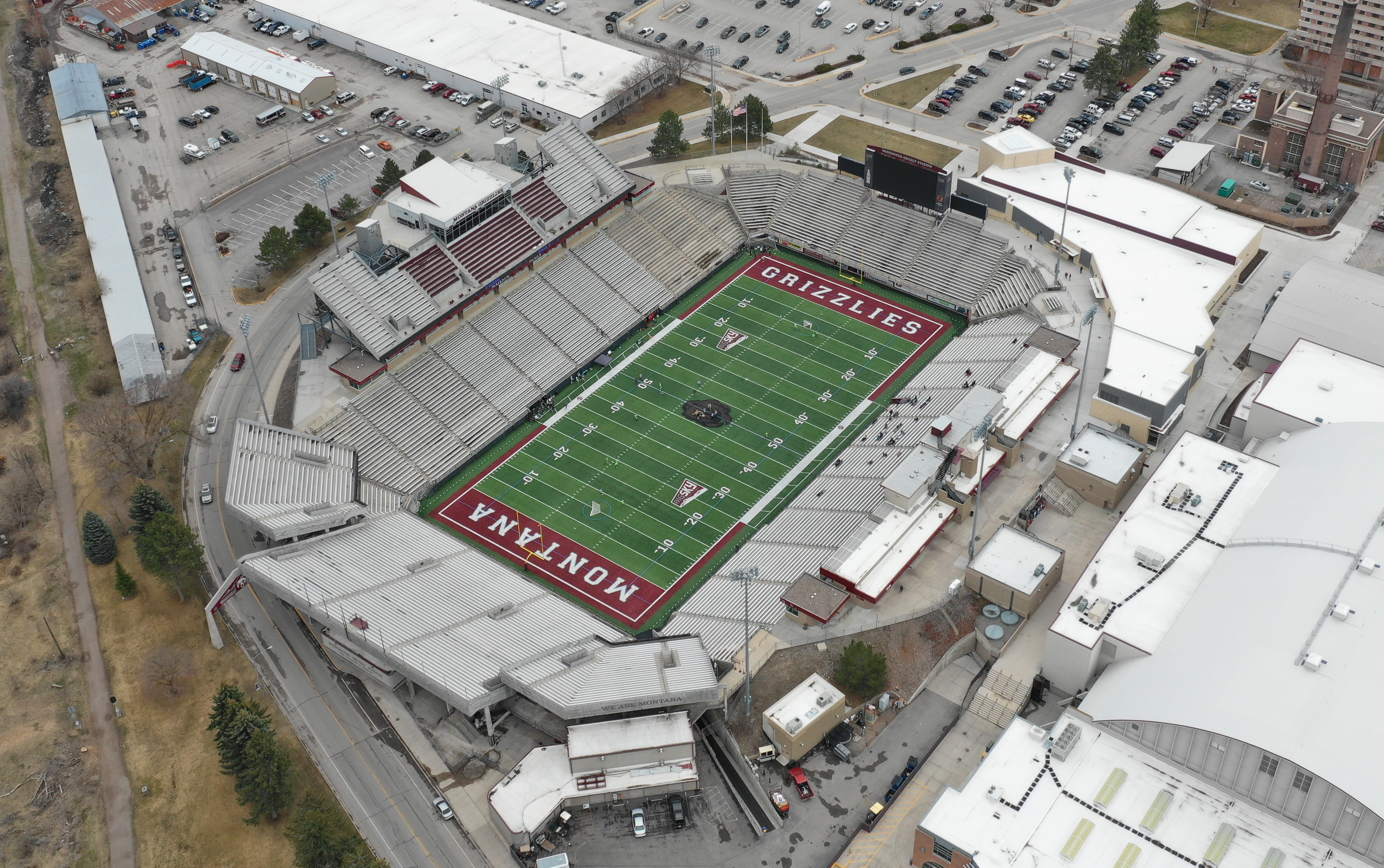
Washington-Grizzly Stadium in Missoula embodies the University of Montana’s passionate FCS football culture. Despite its smaller capacity of about 25,217, it’s consistently recognized for a noise level that rivals bigger FBS venues—a testament to the region’s fervent Griz supporters. Built in 1986 through philanthropic efforts by construction magnate Dennis Washington, it has grown steadily via several expansions. The bowl-like design keeps fans close to the field, generating an intense atmosphere that rattles visiting teams. Montana’s mountainous backdrop adds scenic charm, especially in the late fall when snow-capped peaks frame the horizon. On game days, maroon and silver swirl in the stands, and the pounding of the Griz drumline echoes through campus. Halftime often showcases local traditions, with the Montana fight song roaring across the stadium. Though part of the Big Sky Conference in the FCS, Washington-Grizzly Stadium stands tall as a shining example of small-town devotion and gridiron excellence.
27. Nebraska – Memorial Stadium (Capacity: 85,458)
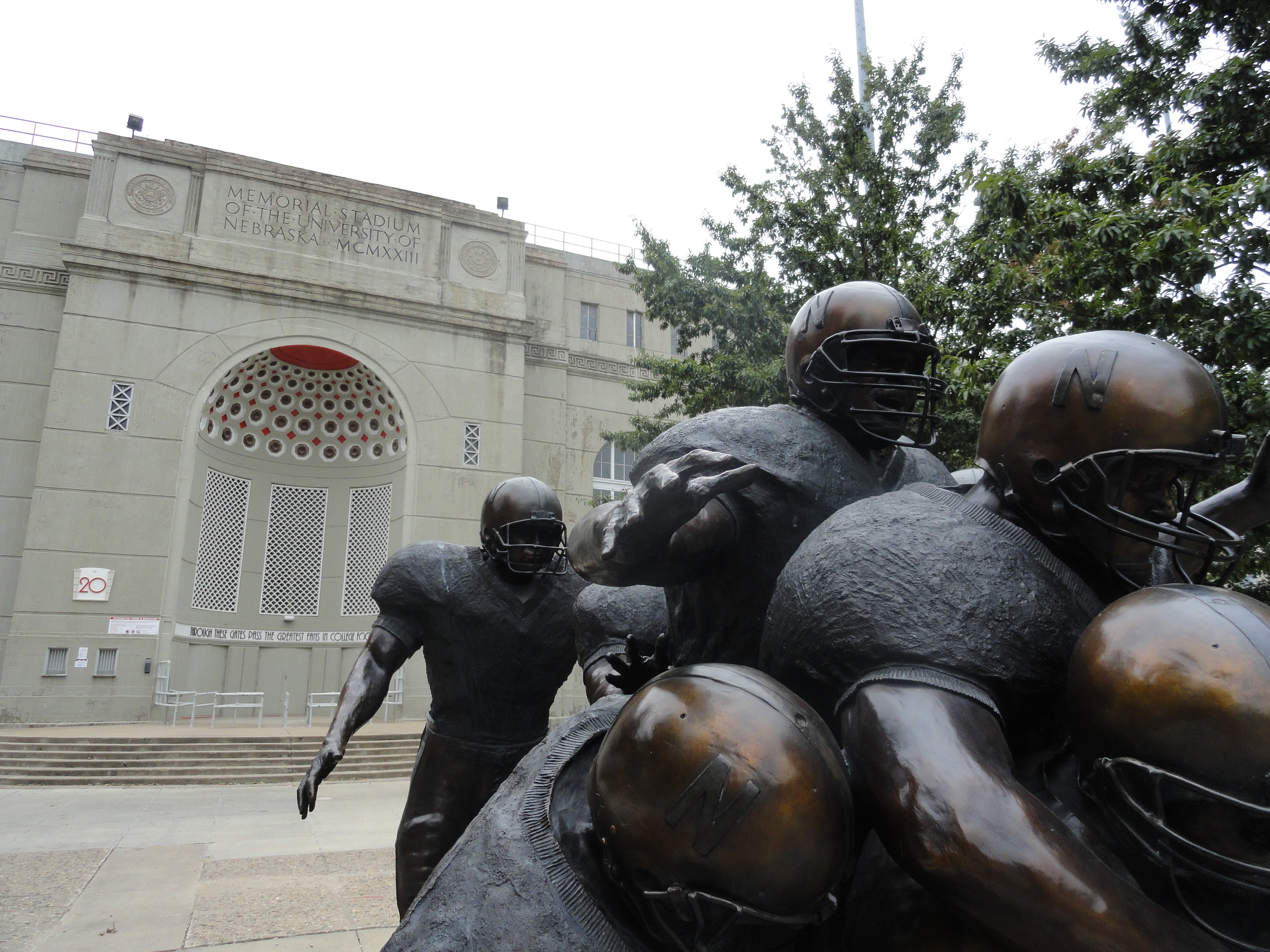
Memorial Stadium in Lincoln is a fortress of Nebraska Cornhusker football, seating over 85,000 in a sea of “Husker Red.” Inaugurated in 1923 and expanded numerous times, the stadium stands as a historic cornerstone of college football’s heartland. Known for its “Sea of Red” phenomenon, fans consistently pack the stands, maintaining a sellout streak that began in 1962—one of the longest in sports history. Each home game transforms Lincoln into a festival of tailgates and camaraderie, with thousands descending upon campus. The stadium’s design merges old-school charm—arched gateways and classic columns—with modern upgrades like high-definition scoreboards and comfortable seating. Memorial’s rich lore includes five national championships and multiple Heisman Trophy winners. The exuberant Tunnel Walk, set to “Sirius” by The Alan Parsons Project, sets the crowd alight when the Huskers charge the field. As the band plays “There is No Place Like Nebraska,” Memorial Stadium cements its status as a legendary icon of Midwestern football.
28. Nevada – Allegiant Stadium (Capacity: 65,000)
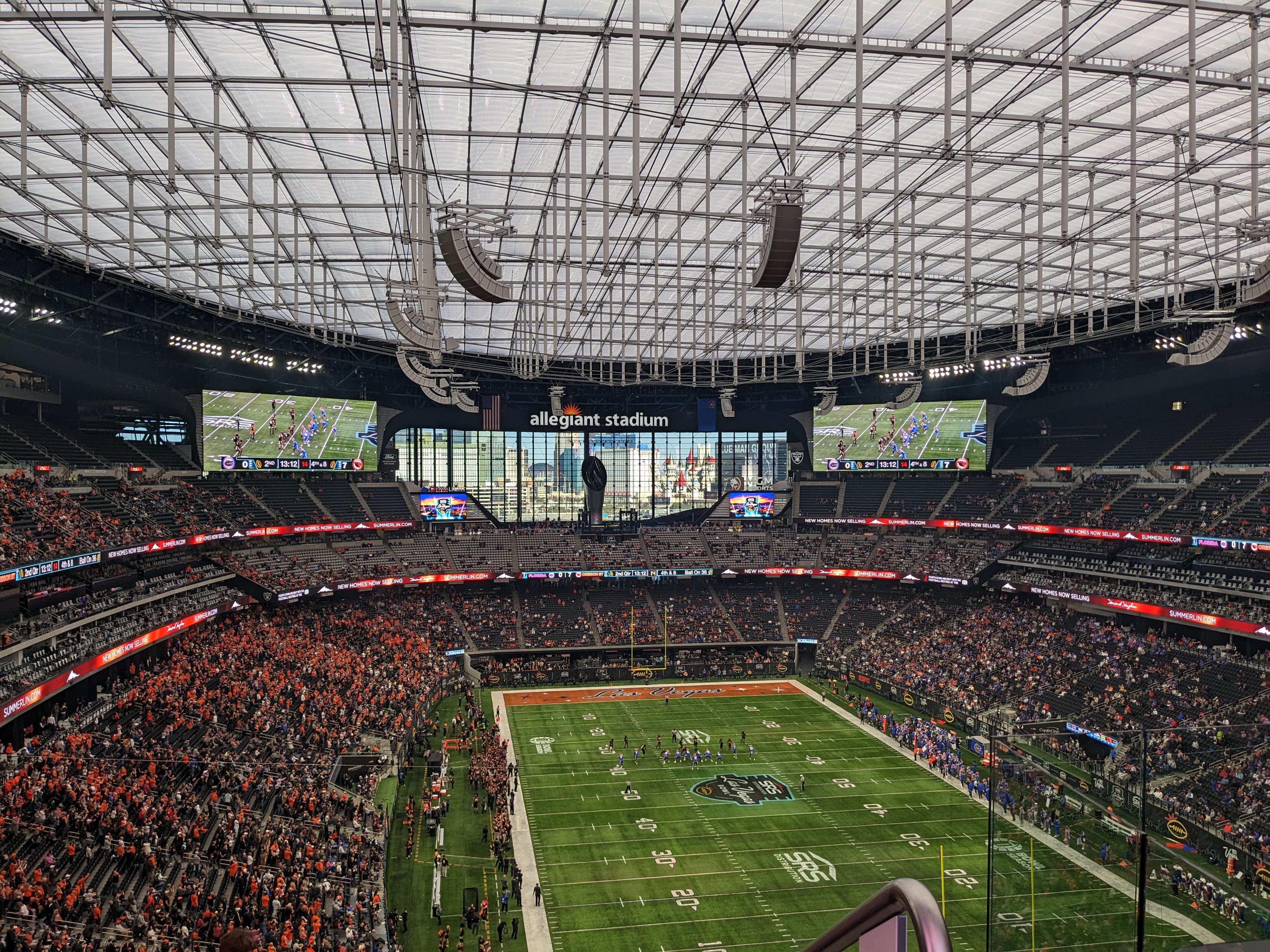
Allegiant Stadium in Paradise, near Las Vegas, is a gleaming addition to Nevada’s sports scene. Though often associated with the NFL’s Las Vegas Raiders, it also plays host to the University of Nevada, Las Vegas (UNLV) for select games, boasting a capacity of around 65,000. Completed in 2020, this ultramodern facility features a sleek black exterior and a translucent roof, letting in abundant desert light while shielding spectators from scorching summer heat. The interior offers plush seating, multi-tiered concourses, and state-of-the-art audiovisual systems that enhance every snap of the ball. Even though it’s a relatively new entrant on the college football stage, Allegiant has already showcased marquee matchups and bowl contests, leveraging Las Vegas’s entertainment cachet. Located just off the iconic Strip, it merges big-league spectacle with collegiate spirit, welcoming fans in all manner of festive outfits. Glitzy, grand, and unmistakably Las Vegas—Allegiant Stadium puts the Silver State firmly on the college football map.
29. New Hampshire – Wildcat Stadium (Capacity: 11,015)
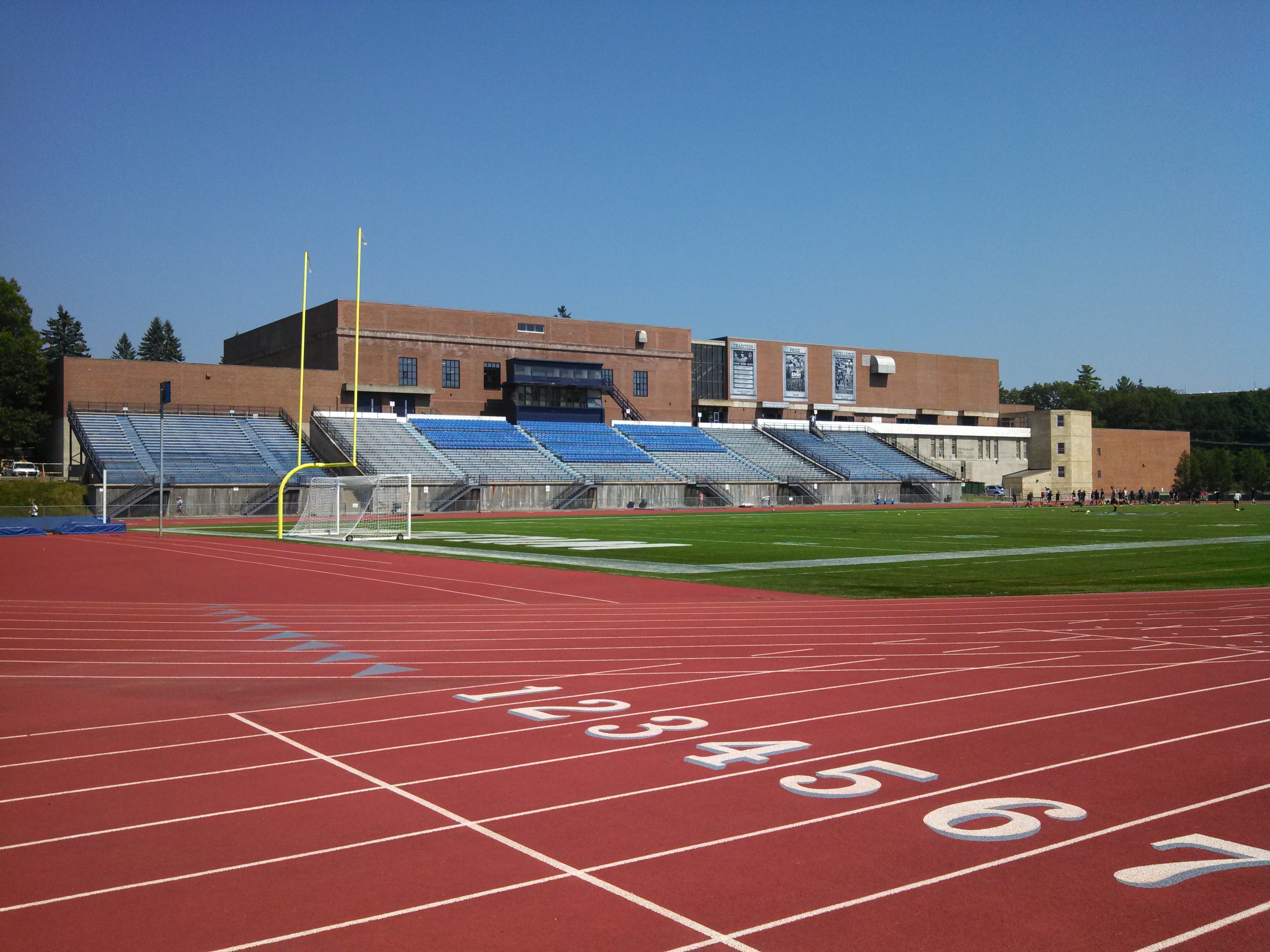
Wildcat Stadium in Durham represents the University of New Hampshire’s commitment to modernizing FCS football facilities. Opened in 2016, it seats around 11,015 fans, making it the largest collegiate stadium in the Granite State. Replacing the old Cowell Stadium, this newer venue boasts an open-bowl design, an expansive video board, and updated concessions that cater to the region’s loyal supporters. On fall Saturdays, navy and white fill the stands, while the iconic Wild E. Cat mascot roams the sidelines stirring up cheers. The stadium’s location provides scenic glimpses of New England foliage in autumn, adding charm to game days—especially during heated CAA conference matchups. An indoor club section ensures fans can escape brisk conditions without missing a moment of the action. From the student section’s lively energy to halftime performances by the Wildcat Marching Band, Wildcat Stadium offers a quintessential small-town, big-heart college football experience in New Hampshire.
30. New Jersey – SHI Stadium (Capacity: 52,454)
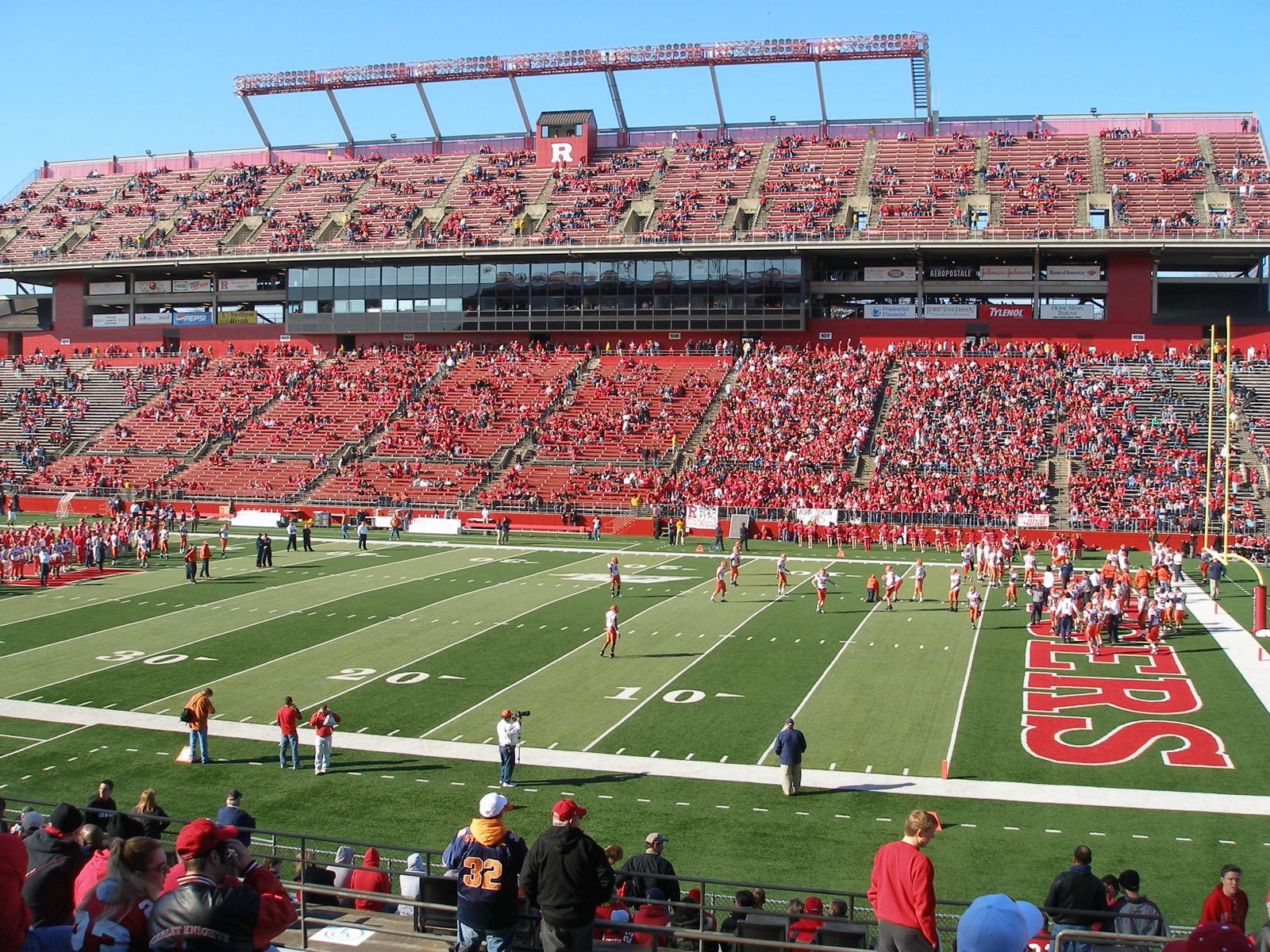
SHI Stadium in Piscataway has been the proud home of Rutgers University football since 1994 (previously known as Rutgers Stadium). It holds about 52,454 fans, making it the largest collegiate venue in the Garden State. The birthplace of college football—Rutgers played the first game ever in 1869—this stadium now witnesses Big Ten clashes after Rutgers’ 2014 conference move. Over the years, expansions added upper decks, improved skyboxes, and a modern scoreboard, enhancing the fan experience. Pre-game tailgates line the Raritan River banks, filled with scarlet-wearing faithful who rally behind the “Chop” mantra. The student section, perched near the field, keeps energy levels high, punctuating big plays with fervent cheers. SHI Stadium balances historical reverence—given Rutgers’ founding role in the sport—with contemporary amenities essential to college football’s modern era. Whether hosting in-state rivalries or marquee Big Ten opponents, the stadium stands as a living tribute to the game’s earliest roots and the Scarlet Knights’ evolving legacy.
31. New Mexico – University Stadium (Capacity: 39,224)
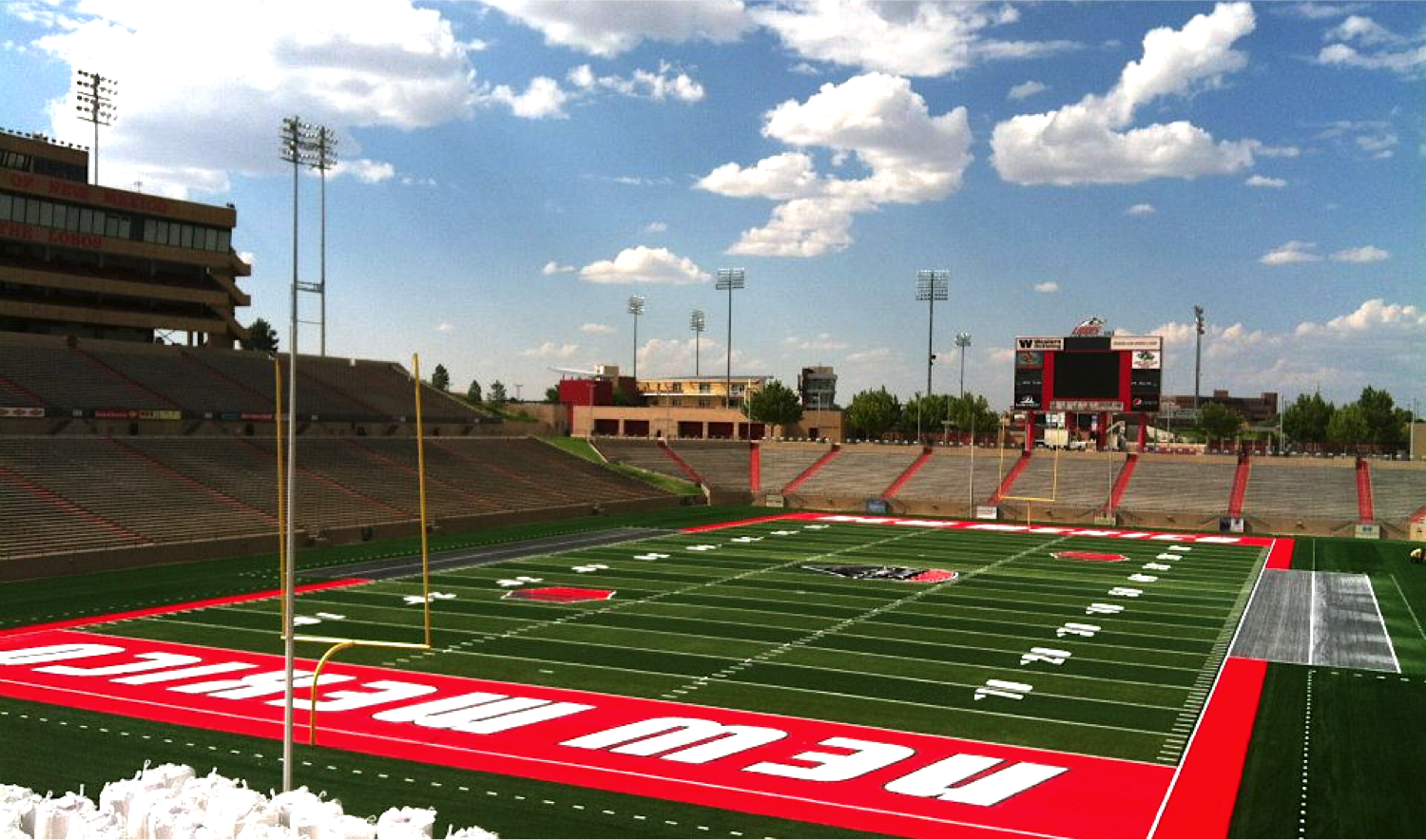
University Stadium in Albuquerque, often referred to by its sponsor name Dreamstyle Stadium, has been the University of New Mexico’s football hub since 1960. Seating about 39,224, it offers a panoramic view of the nearby Sandia Mountains, blending Southwestern scenery with the thrill of Lobo football. On game day, a carnival-like atmosphere unfolds as fans converge in the parking lots for tailgates featuring local cuisine, from green chile stew to authentic tacos. In the stands, cherry and silver wave in unison as the band amps up the crowd. High altitude presents a unique challenge for visiting teams—thinner air can affect players’ stamina, especially in the second half. Over time, stadium enhancements introduced improved seating, a large scoreboard, and expanded concessions, modernizing the overall fan experience. Whether it’s a Mountain West rivalry game or a spirited homecoming, University Stadium unites the Albuquerque community with the electric energy that only college football can deliver.
32. New York – Carrier Dome (Capacity: 49,057)
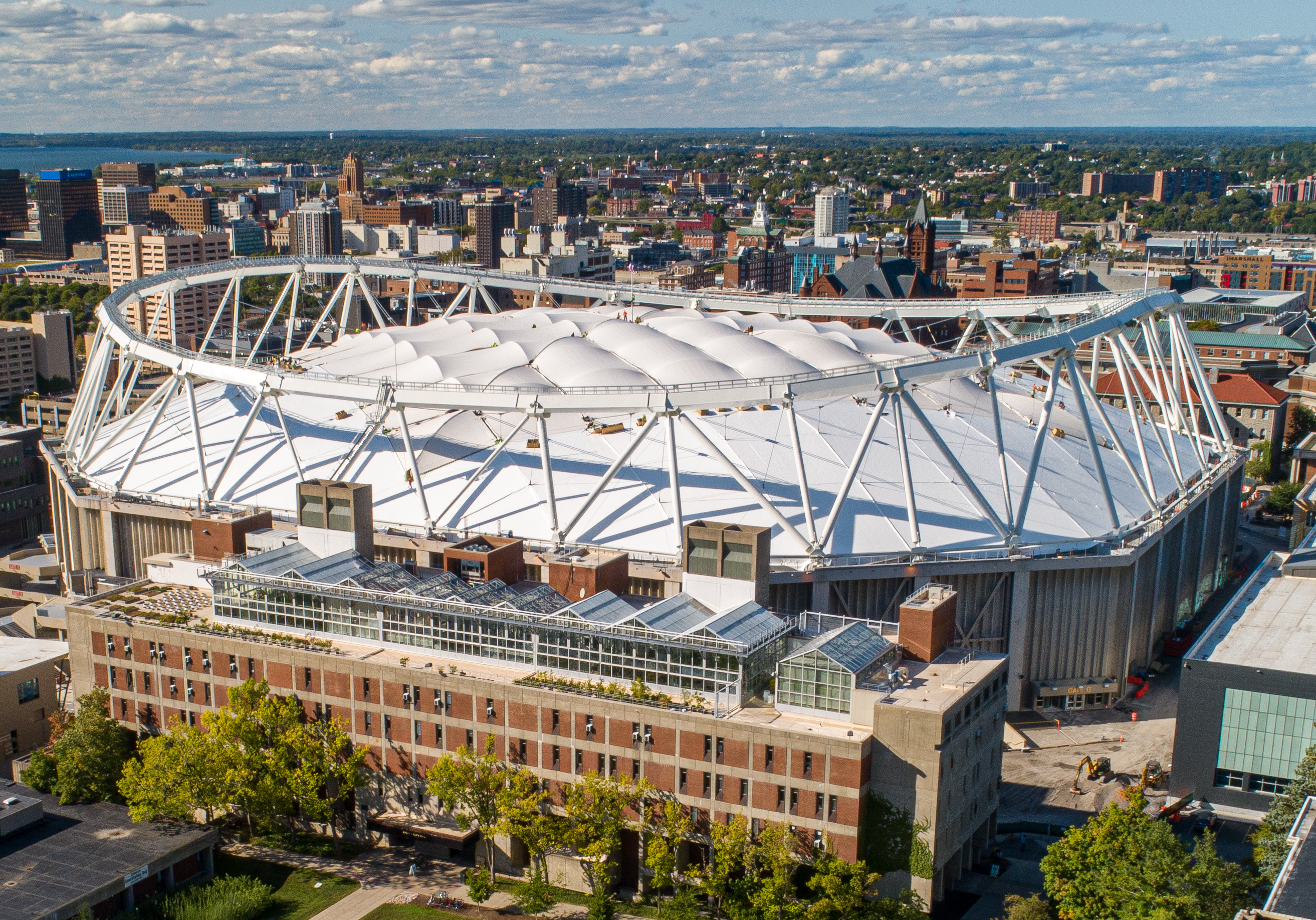
The Carrier Dome in Syracuse is renowned as the country’s largest domed college stadium, seating roughly 49,057 fans for football. Opened in 1980, it’s the centerpiece of the Syracuse University campus, a multipurpose indoor arena that also hosts basketball, lacrosse, and major concerts. Nicknamed “The Loud House,” the Dome’s enclosed design amplifies crowd noise to intimidating levels, proving especially challenging for ACC rivals visiting the Orange. Despite upstate New York’s brutal winters, fans remain cozy under the Dome’s iconic, air-supported roof (recently replaced with a more permanent structure). Tailgating often spills into nearby parking lots and campus greens, while inside, Syracuse’s blue-and-orange color scheme dominates. Major upgrades over time—like improved concourses and newly added LED lighting—keep the venue contemporary. Often showcased on national broadcasts, the Carrier Dome remains a hallmark of big-time indoor football, melding practicality for winter climates with an undeniable home-field advantage for the Orange.
33. North Carolina – Carter-Finley Stadium (Capacity: 57,583)
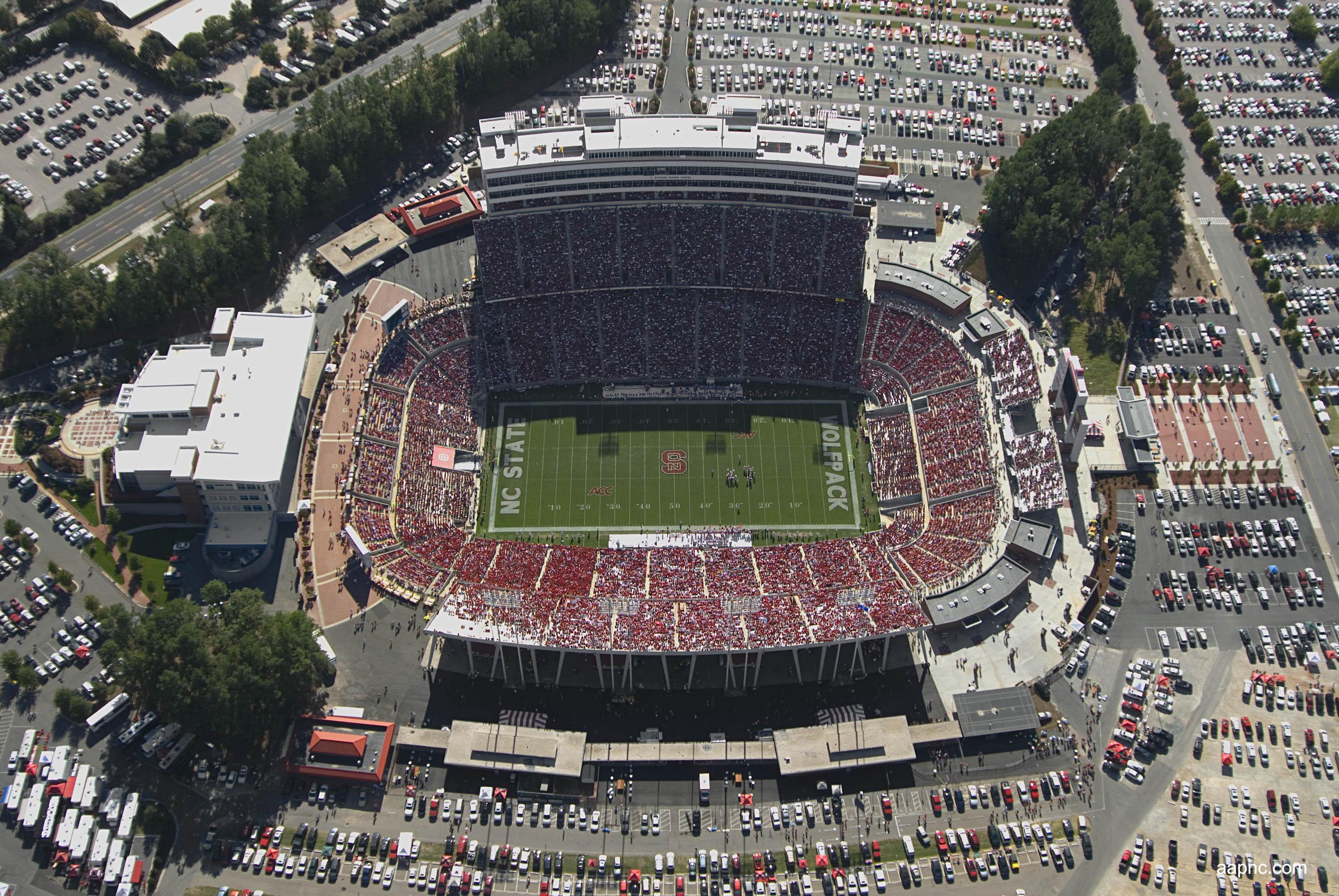
Carter-Finley Stadium in Raleigh headlines NC State Wolfpack football, hosting 57,583 red-clad fans on crisp fall afternoons. Opened in 1966, it replaced the smaller on-campus Riddick Stadium to accommodate a rapidly growing fan base. Today, it merges modern updates—high-def scoreboards, premium seating, expanded concourses—with a design that retains its old-school feel. Tailgating is an event unto itself, sprawling across the lots that encircle the venue. Once inside, fans unite in the “Power Sound of the South” marching band’s opening tunes, revving energy levels even before kickoff. The stadium’s namesake honors Albert E. Finley and Harry and Nick Carter, key benefactors to Wolfpack athletics. Its location just west of the university grounds fosters a strong link to campus life, as students stream in from the nearby Hillsborough Street corridor. Known for its intense ACC rivalries, Carter-Finley consistently delivers rousing game-day experiences fueled by Wolfpack pride.
34. North Dakota – Fargodome (Capacity: 19,000)
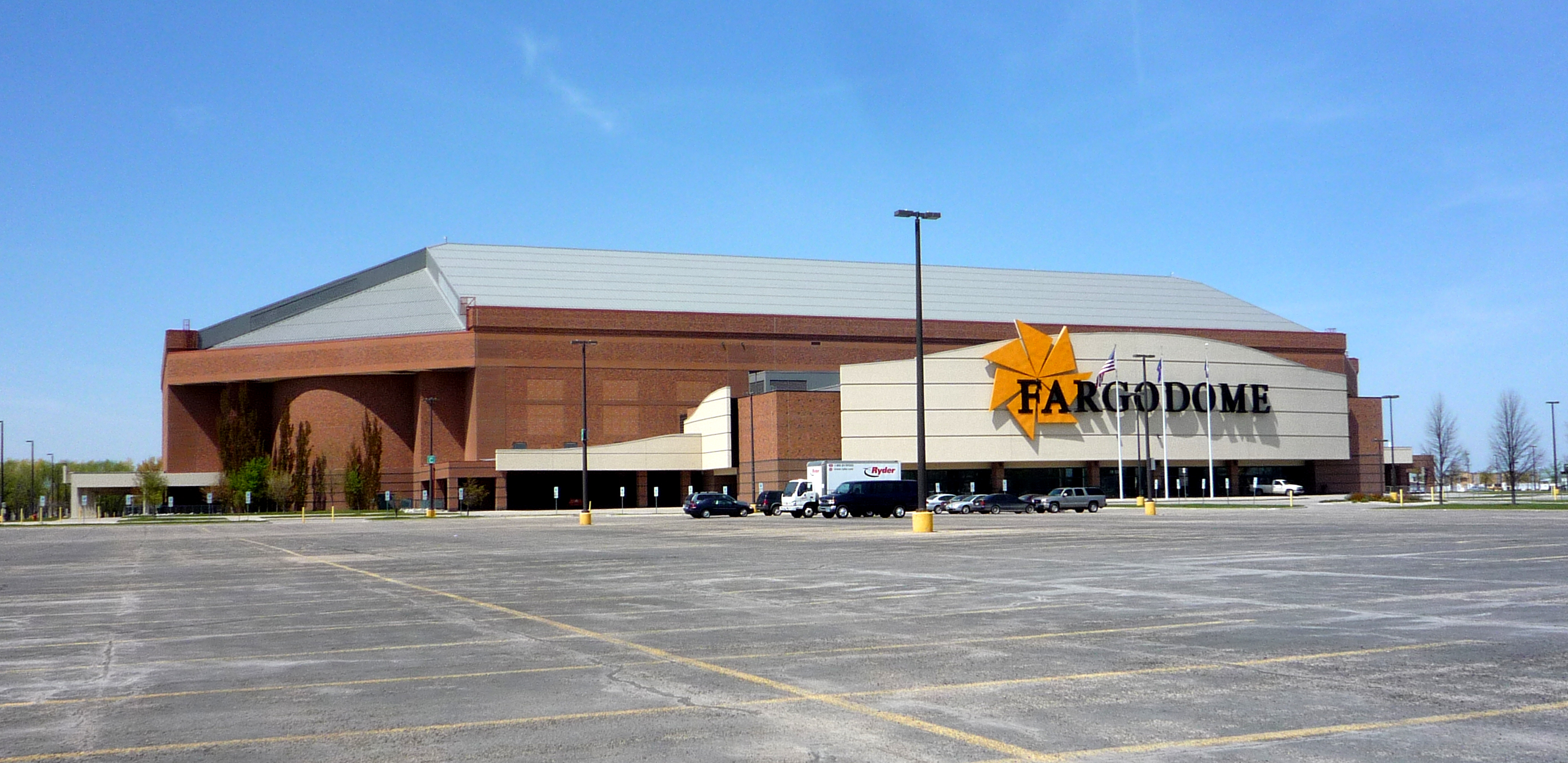
The Fargodome, which seats roughly 19,000 for football, is North Dakota State University’s electrifying indoor fortress. Opened in 1992 on the north edge of Fargo, it became the beating heart of Bison football—a program that has seized numerous FCS national titles. Despite its modest size relative to FBS stadiums, the dome’s tight seating and low ceiling result in ear-splitting decibels, creating one of the nation’s toughest venues for visiting teams. Tailgates transform the surrounding lot into a lively block party, braving Fargo’s cold or wind, while the interior remains climate-controlled for maximum comfort. Over time, the Fargodome has expanded to host concerts, trade shows, and other big events in eastern North Dakota. Yet it’s the Bison’s hard-hitting style and the throbbing green-and-gold crowd that define this stadium’s identity. Under the dome lights, roars of “Go Bison!” bounce off walls, fueling a record-breaking run of consecutive championships—an FCS dynasty that resonates nationally.
35. Ohio – Ohio Stadium (Capacity: 102,780)
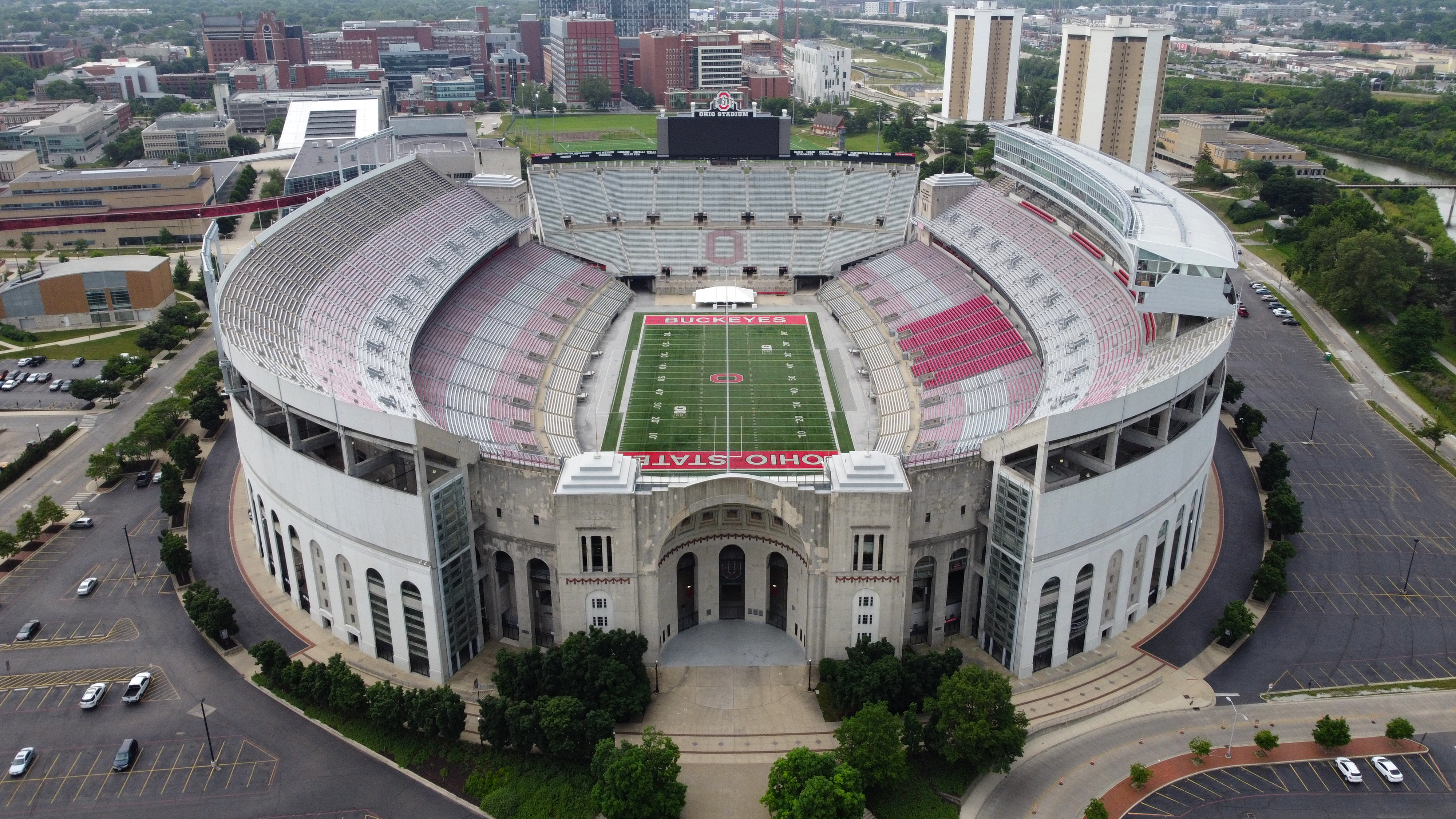
Ohio Stadium—fondly termed “The Horseshoe” or simply “The Shoe”—is a titan in Columbus, holding about 102,780 fans for Ohio State Buckeyes football. Opened in 1922, its distinctive horseshoe shape originally seated fewer than 70,000, but expansions ramped that figure up into six digits. Steeped in Big Ten lore, the stadium’s “Script Ohio” pregame performance by the Ohio State Marching Band is among college football’s most revered traditions. Each autumn Saturday becomes a spectacle of scarlet and gray, with the echo of “O-H-I-O” chants swirling from end zone to end zone. Recent modernizations introduced high-tech scoreboards, refined seating, and enhanced hospitality areas—yet the stadium’s historical essence, especially its iconic rotunda entrance, remains intact. Fierce rivalries, particularly the storied clash with Michigan, have cemented Ohio Stadium in gridiron legend. Whether hosting late-season snow games or bright noon kickoffs, “The Shoe” stands as a shrine to the unwavering passion of Buckeye Nation.
36. Oklahoma – Gaylord Family Oklahoma Memorial Stadium (Capacity: 86,112)
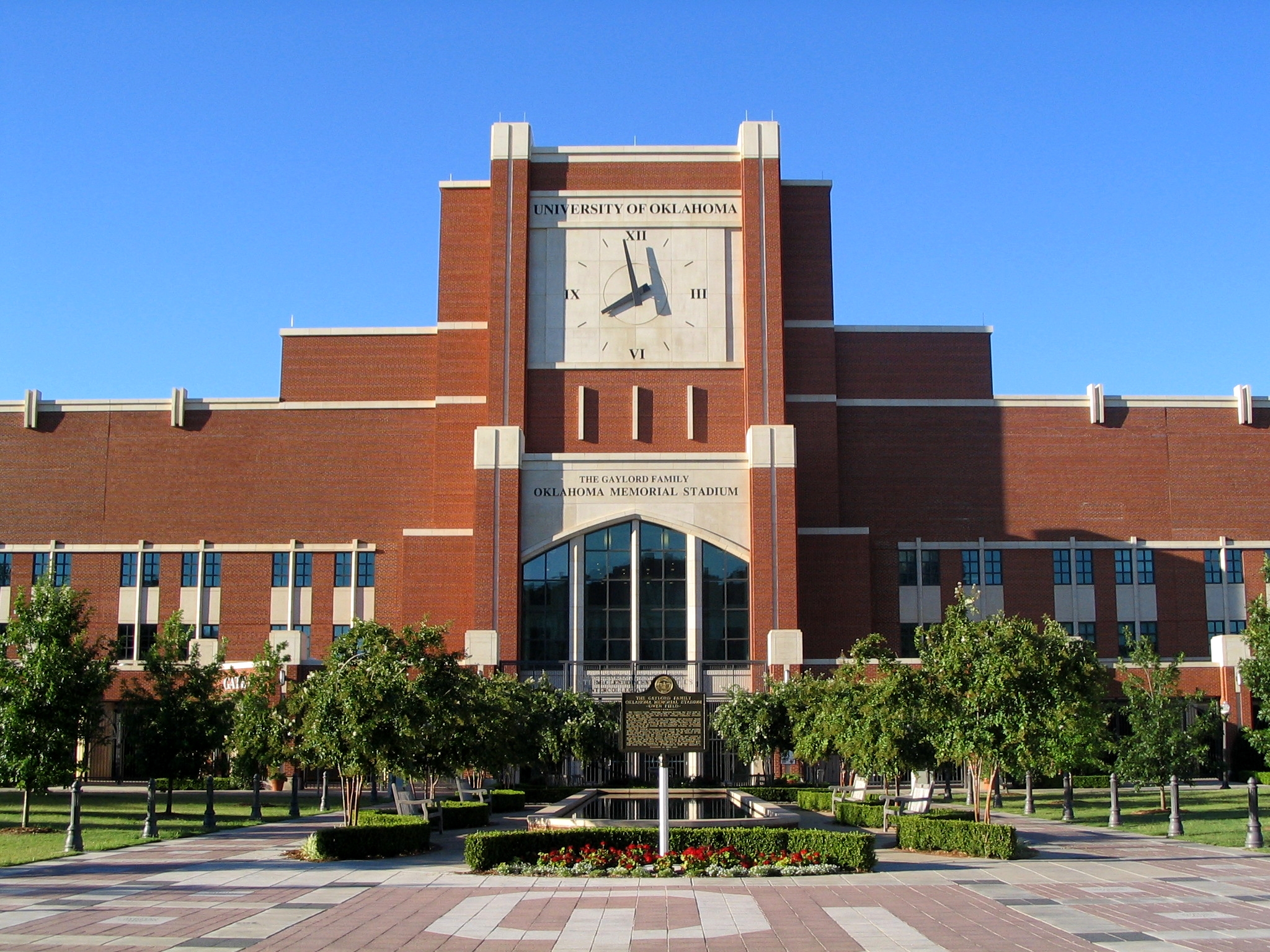
Gaylord Family Oklahoma Memorial Stadium in Norman is the proud stronghold of the Oklahoma Sooners. Founded in 1923, it has grown into a mammoth 86,112-seat venue renowned for its raucous game-day environment. The stadium is named for both the university’s fallen servicemen (Memorial) and the Gaylord family, major benefactors to OU athletics. A horseshoe configuration encircles Owen Field, where the famed Sooner Schooner—a replica Conestoga wagon—rolls out after every touchdown to roaring cheers. Pre-game festivities include the Walk of Champions, as players make their way through thousands of chanting fans. Over the years, expansions added a towering south end zone, modern suite levels, and vast updates to concessions. This invests the stadium with both top-tier amenities and a powerful sense of tradition. From the “Boomer Sooner” fight song to the swirl of crimson and cream, Gaylord Family Oklahoma Memorial Stadium brims with the spirit of a program boasting multiple national titles.
37. Oregon – Autzen Stadium (Capacity: 54,000)
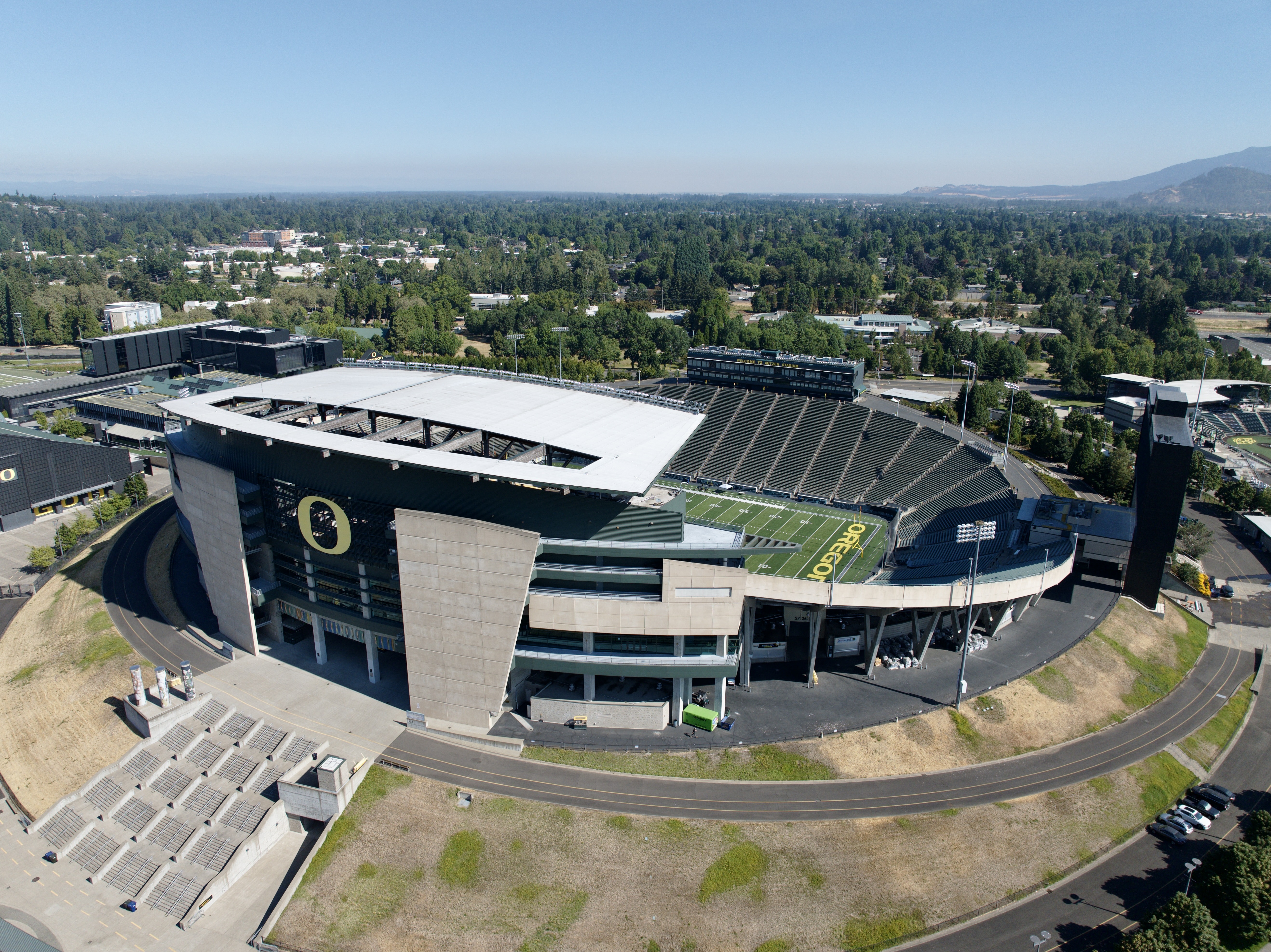
Autzen Stadium in Eugene embodies the Oregon Ducks’ fast-paced, high-octane football ethos. With a capacity of about 54,000—some expansions unofficially push seating beyond that—the stadium is legendary for its deafening noise level, despite being smaller than other Pac-12 titans. Built in 1967, it stands near the Willamette River, enveloped by lush Pacific Northwest greenery. On fall Saturdays, fans in bright yellow and green flood the stands, stoking an energy that can leave visiting teams rattled. The raucous student section near the scoreboard is central to this atmosphere, cheering every big offensive play with a fervor that resonates across campus. Autzen’s modern concourses, 10K’s tribute walkway, and advanced scoreboard technology embody the school’s progressive approach. Under head coaches like Chip Kelly, the Ducks soared to national prominence, with Autzen’s crowd consistently at their backs. Whether it’s an early morning tailgate in the drizzle or a prime-time tilt under stadium lights, Autzen Stadium offers a vivid slice of Oregon’s dynamic football culture.
38. Pennsylvania – Beaver Stadium (Capacity: 106,572)
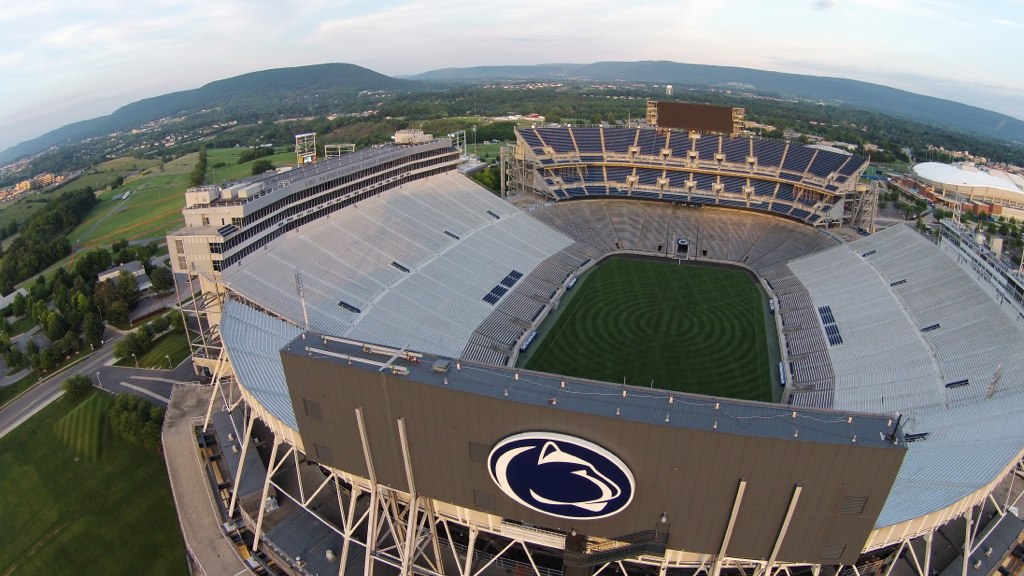
Beaver Stadium at Penn State stretches across University Park as one of the nation’s largest stadiums, holding about 106,572 fans. Originally built on another site in 1909 with a much smaller capacity, it moved and expanded repeatedly until evolving into the behemoth it is today. White Outs—when the stands are awash in white T-shirts—create a spectacle unmatched in college football, rattling the opposition with an uproar that can register on a seismograph. The stadium’s open-bowl structure, perched atop elevated ground, allows breezes to swirl, often giving the Nittany Lions a slight edge. This venerable venue has witnessed many iconic moments, from national championship pursuits under Joe Paterno to thrilling last-second victories. Renovations introduced modern amenities, but Beaver Stadium retains an “old-school” vibe, symbolized by its steel bleachers and proximity to scenic Mount Nittany. For loyal Penn Staters, a Saturday in Beaver Stadium defines Happy Valley’s heartbeat.
39. Rhode Island – Brown Stadium (Capacity: 20,000)
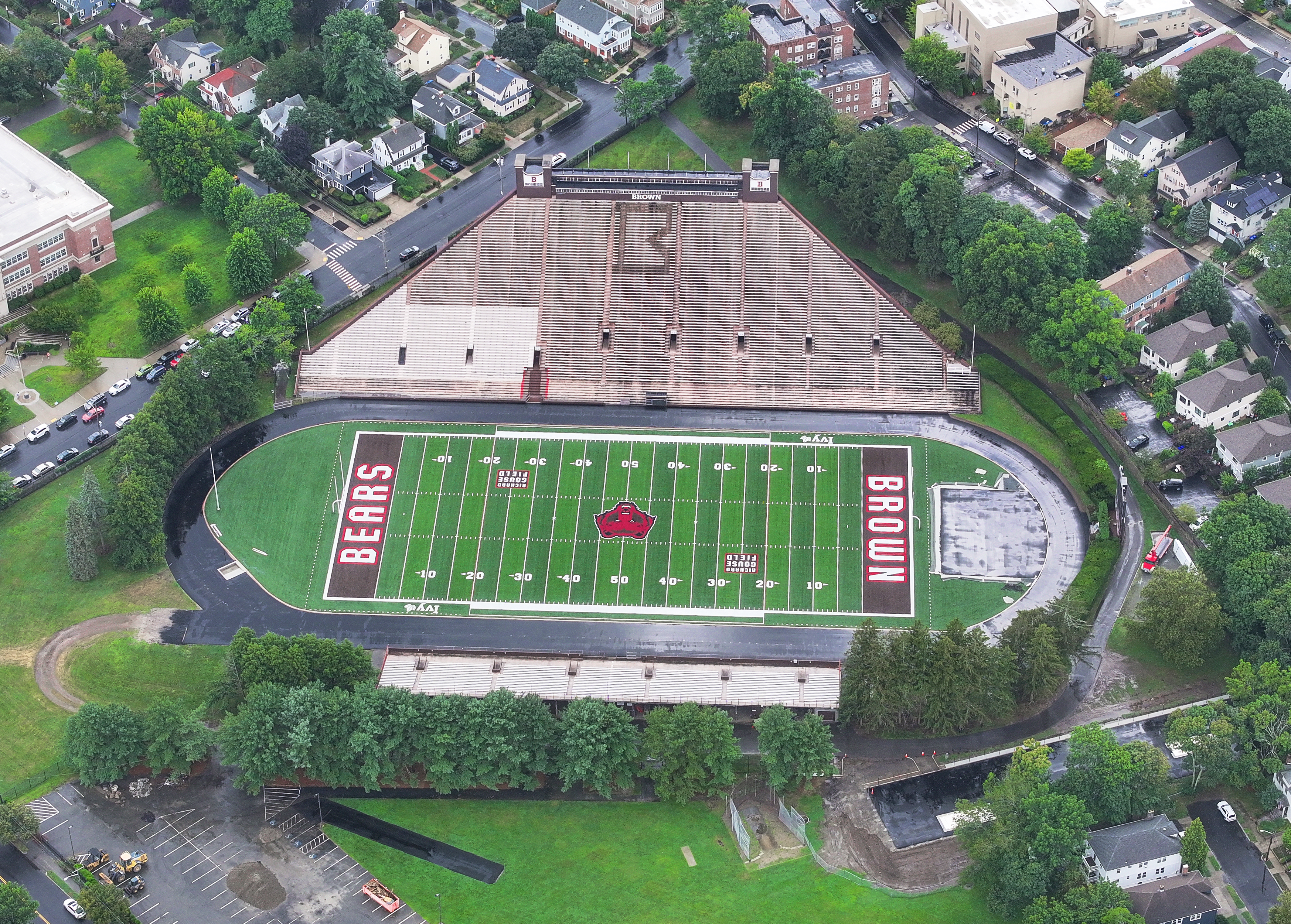
Brown Stadium in Providence has stood as the home field for Brown University’s football team since 1925. Its capacity of about 20,000, while modest by FCS standards, remains the largest in the Ocean State. A classic horseshoe design, built primarily with concrete, conjures a nostalgic feel reminiscent of early 20th-century college football architecture. On fall Saturdays, maroon- and white-clad fans gather to watch the Ivy League’s brand of competition, often enjoying mild New England afternoons. The stadium’s main entrance, flanked by stone pillars, ushers visitors into simple concourses and wooden bleachers that lend a no-frills authenticity. Over the years, Brown Stadium has undergone upgrades—like improved lighting and scoreboard installations—but it keeps a timeless charm. Tailgates typically line the adjacent athletic complex, with students and alumni bonding over the day’s matchups. In an era of glitzy modern arenas, Brown Stadium remains a testament to tradition in Rhode Island sports.
40. South Carolina – Memorial Stadium (Clemson) (Capacity: 81,500)
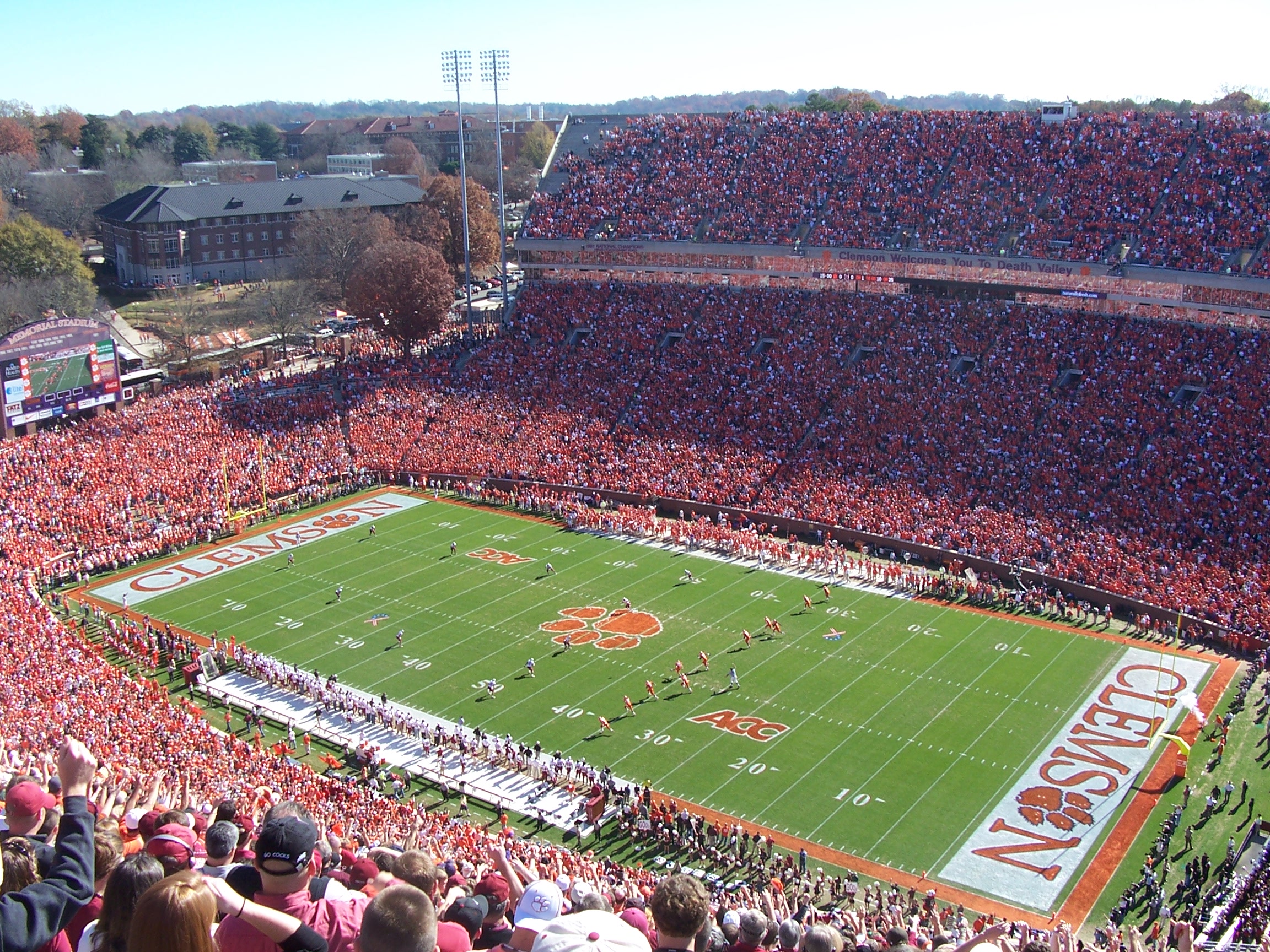
Memorial Stadium at Clemson University, widely known as “Death Valley,” roars to life each autumn, housing nearly 81,500 Tiger devotees. Since opening in 1942, it has expanded numerous times, evolving into one of the ACC’s most formidable football venues. The stadium earned its ominous nickname from an opposing coach who found the place daunting—and from an actual cemetery once located near the field’s east end. On game days, fans flood downtown Clemson, then head to the stadium for the emotional “Running Down the Hill” entrance, as players sprint down the hill from Howard’s Rock. Orange and purple fill the bowl, and the noise can be deafening during big plays, echoing across campus and Lake Hartwell. A host of upgrades over the decades—premium club seats, a modern video board, and updated concessions—ensures a comfortable experience. But it’s the bone-shaking energy and storied traditions that put Memorial Stadium in a class of its own.
41. South Dakota – Dana J. Dykhouse Stadium (Capacity: 19,340)
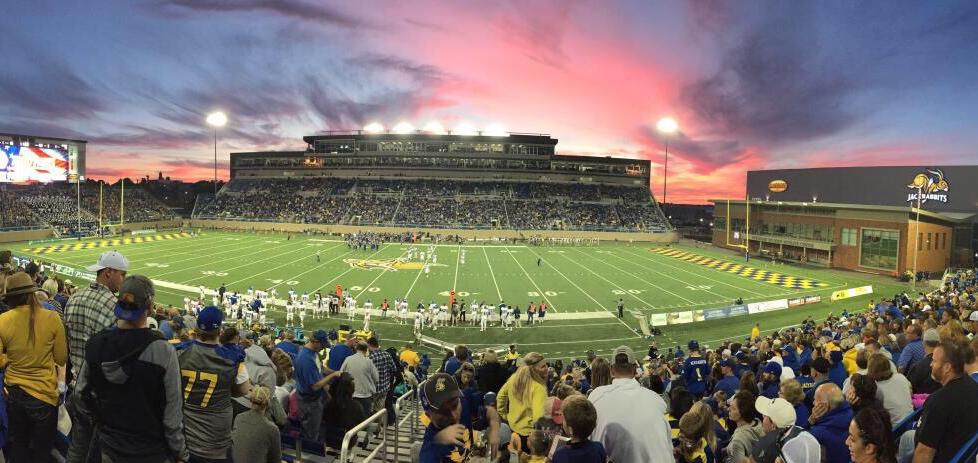
Dana J. Dykhouse Stadium in Brookings stands as South Dakota State University’s showcase for Jackrabbit football, seating around 19,340 in a modern, airy bowl. Opened in 2016, it replaced the longtime Coughlin-Alumni Stadium, representing a bold step forward for SDSU’s FCS ambitions. The facility boasts contemporary amenities like wide concourses, a spacious club level, and a large high-definition scoreboard that energizes fans on game day. Nearby tailgating lots transform into a carnival of yellow and blue, culminating in the “Yellow and Blue March” of the Pride of the Dakotas marching band. The new stadium’s open layout welcomes crisp Midwestern breezes, occasionally forcing teams to adjust to swirling winds. Despite not being an FBS powerhouse, SDSU’s robust fan base and multiple deep postseason runs have created a champion’s swagger. Dana J. Dykhouse Stadium, with its striking design and fervent home crowd, underscores the Jackrabbits’ role as a rising force in FCS football.
42. Tennessee – Neyland Stadium (Capacity: 101,915)
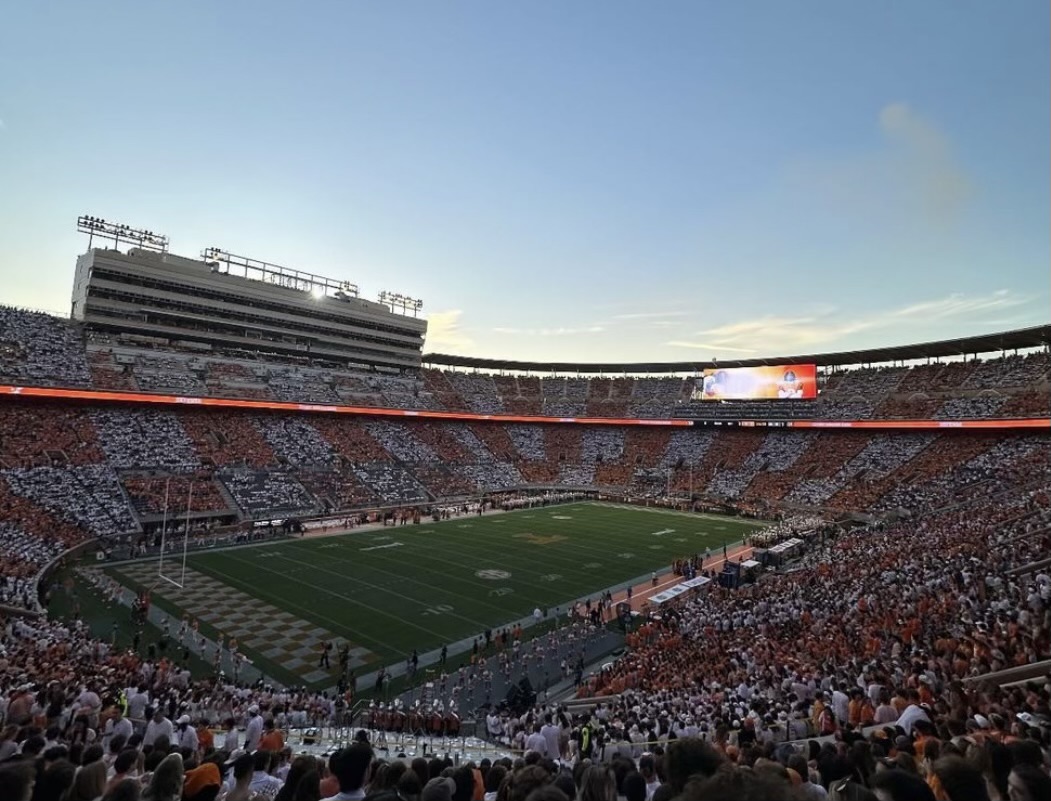
Neyland Stadium in Knoxville epitomizes the grand scale and rich tradition of SEC football at the University of Tennessee. Accommodating about 101,915 spectators, it opened in 1921 and has gradually grown into one of the country’s largest stadiums. Draped in orange and white, the environment crackles with energy—especially when the Vols run through the iconic “Power T” formed by the Pride of the Southland Band. The stadium’s horseshoe design with towering decks packs fans in tightly, creating a roar that resonates along the Tennessee River. Adding to the spectacle is the Vol Navy, where boatloads of fans arrive by water and tailgate on the nearby docks. Over the years, improvements brought modern suites, enhanced concourses, and advanced lighting that amplifies night games. Still, the stadium’s soul remains anchored in the traditions coined by General Robert Neyland, who shaped the program’s identity. For generations of Tennesseans, Neyland Stadium is a second home come autumn.
43. Texas – Kyle Field (Capacity: 102,733)
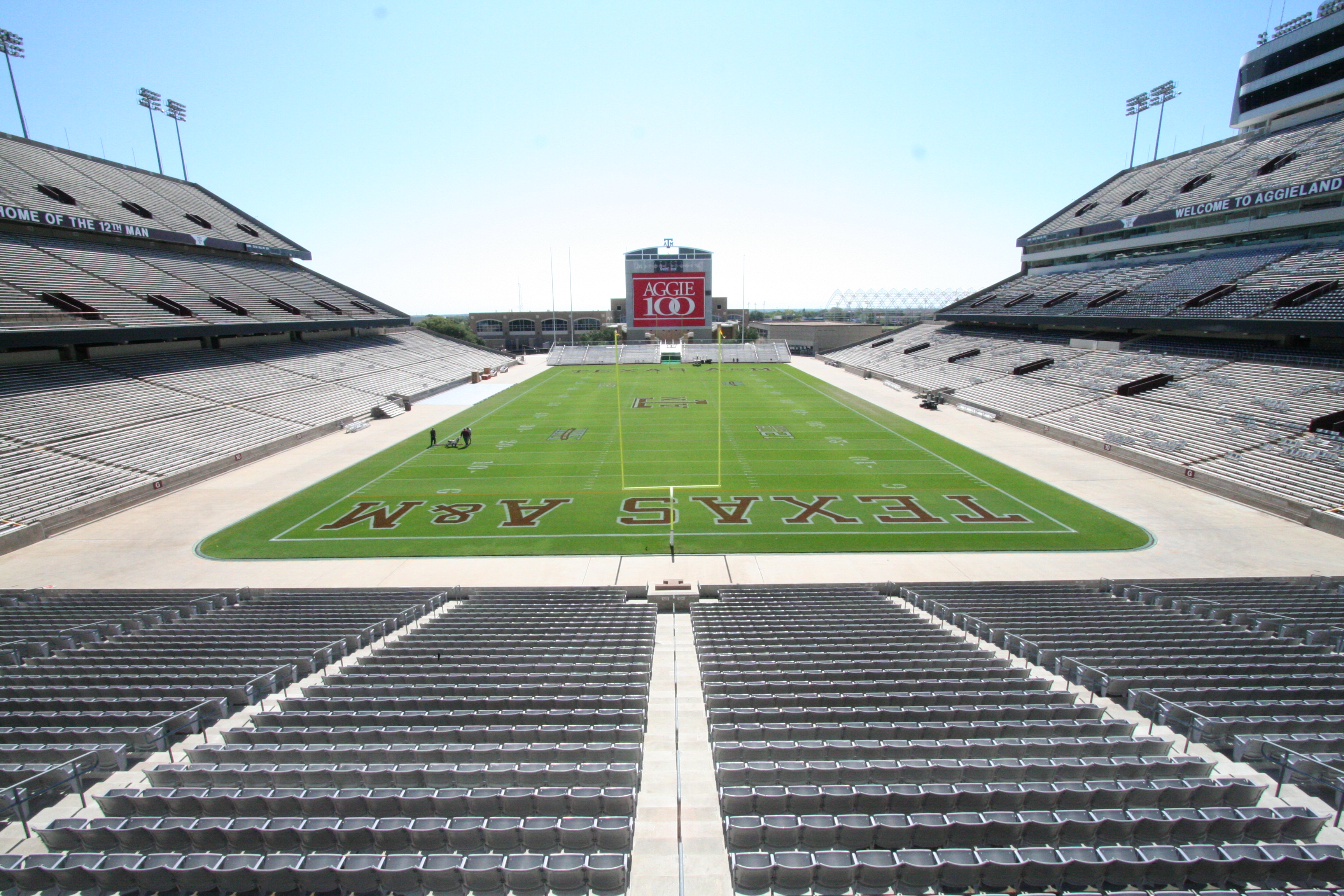
Kyle Field in College Station redefines grandiosity, seating around 102,733 fans for Texas A&M’s Aggies. Dubbed the “Home of the 12th Man,” its capacity and fervor make it one of the most intimidating venues in all of college football. The Aggie spirit traces back to 1909, and expansions have repeatedly upped the ante. Today, Kyle Field is an all-encompassing fortress of maroon, with four towering stands that amplify crowd noise to extraordinary levels. Before kickoff, students gather for the storied “Midnight Yell,” rehearsing chants and forging unity that resonates throughout the game. On the field, the band’s signature military precision complements the passionate traditions like the War Hymn and “Gig ’em.” Modern touches—like premium skyboxes, extensive concourses, and state-of-the-art scoreboards—coexist with deep-rooted customs. Beyond a stadium, Kyle Field stands as an emblem of the Aggies’ unique ethos, where loyalty, pride, and a dash of Texas bravado shine bright.
44. Utah – LaVell Edwards Stadium (Capacity: 63,470)
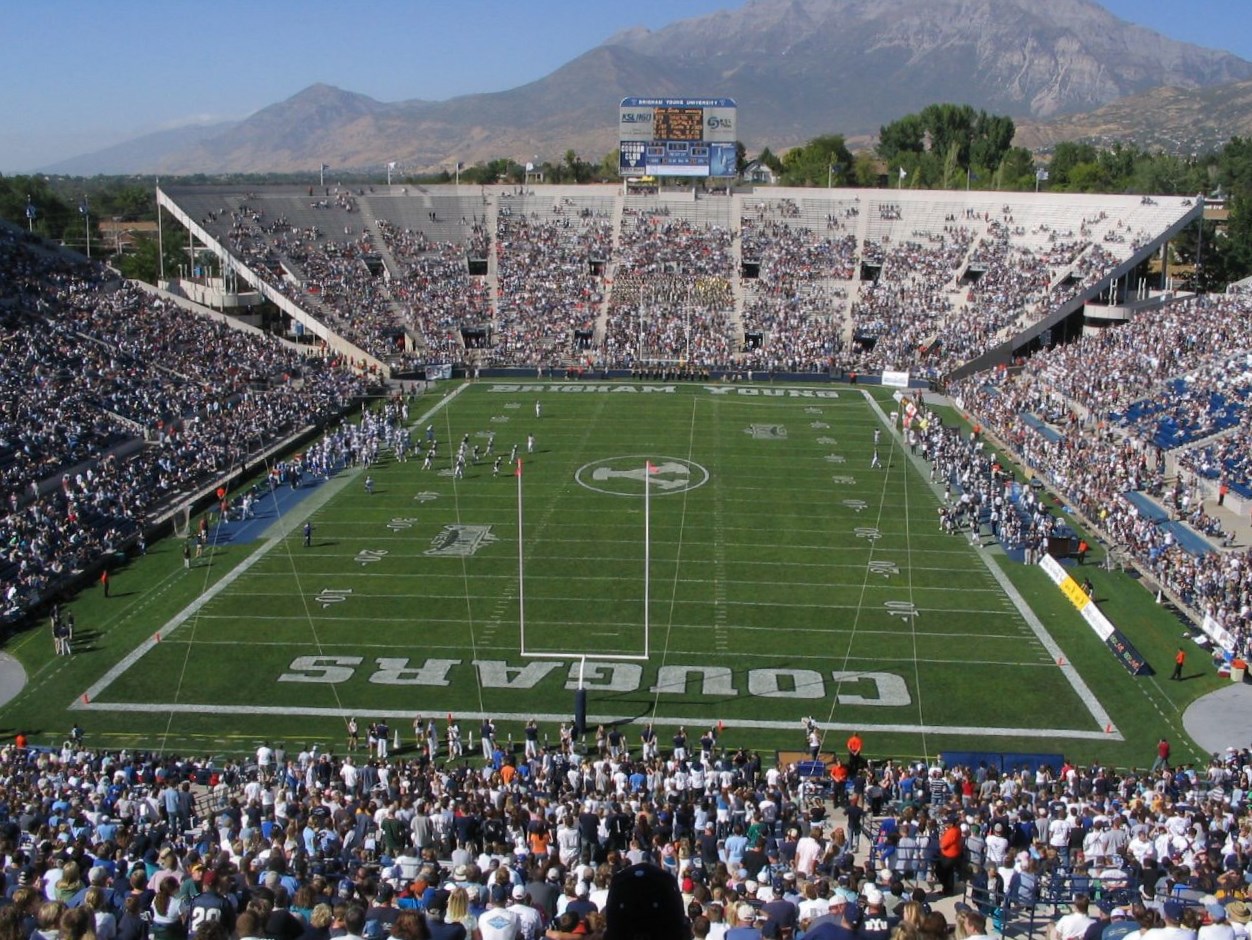
LaVell Edwards Stadium in Provo personifies BYU Cougars football, boasting a capacity of roughly 63,470. Nestled against the Wasatch Range, it offers one of college football’s most scenic backdrops—towering mountain peaks painted gold at sunset. Named after legendary coach LaVell Edwards in 2000, the facility has seen numerous expansions since its debut in 1964. Known for a rowdy yet respectful fan base, the Cougars enjoy a significant home-field advantage, with the rarified high-desert air occasionally affecting visiting teams’ stamina. The stadium’s design maximizes views, with minimal barriers ensuring fans remain close to the action. Game days often begin with family-friendly tailgates and the Pride of the Rockies band weaving spirited renditions of the BYU fight song. While the Cougars’ historic conference transitions and independent scheduling have drawn varied competition over the years, LaVell Edwards Stadium remains a consistent anchor in BYU athletics—steeped in faith, tradition, and a mighty mountain backdrop.
45. Vermont – Centennial Field (Capacity: 4,000)
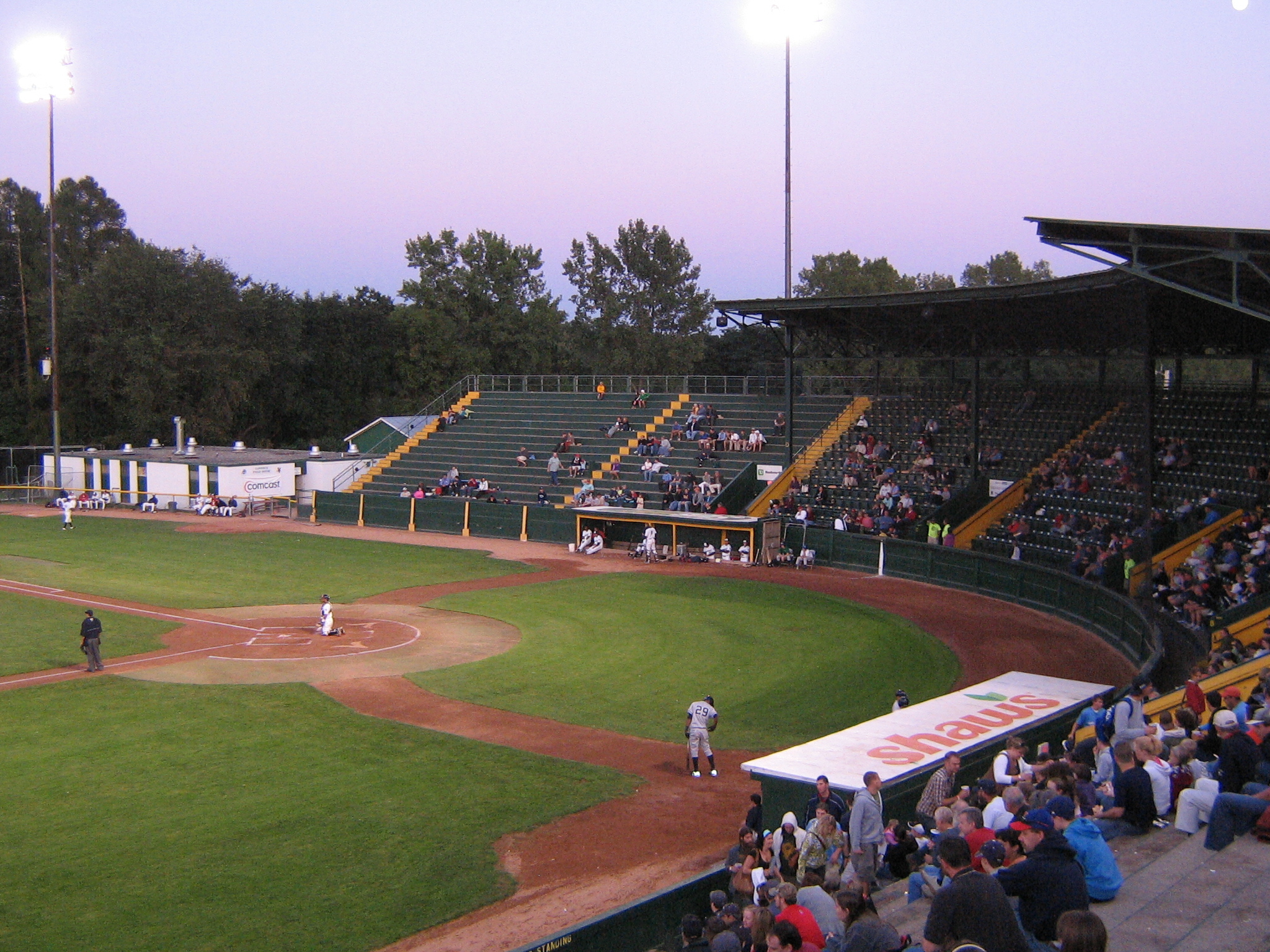
Centennial Field, located at the University of Vermont in Burlington, is primarily known for baseball but occasionally hosts various college events, making it the largest stadium-like setting in the Green Mountain State at around 4,000 seats. Built in 1906, it’s one of the oldest ballparks in the U.S., oozing historic charm with its rustic wooden grandstands and a view of Lake Champlain’s scenic horizon. Though UVM no longer fields a Division I football program, the stadium sees an array of campus and community gatherings. The environment is quintessential New England—lush trees encircle the field, and crisp fall breezes roll in during autumn events. On game days, or any large-scale event, spectators fill the stands for local matchups and festivities, forging a tight-knit vibe. While it lacks the huge capacity of FBS venues, Centennial Field’s longevity, relaxed atmosphere, and natural beauty demonstrate Vermont’s timeless approach to campus life and sports culture.
46. Virginia – Lane Stadium (Capacity: 65,632)
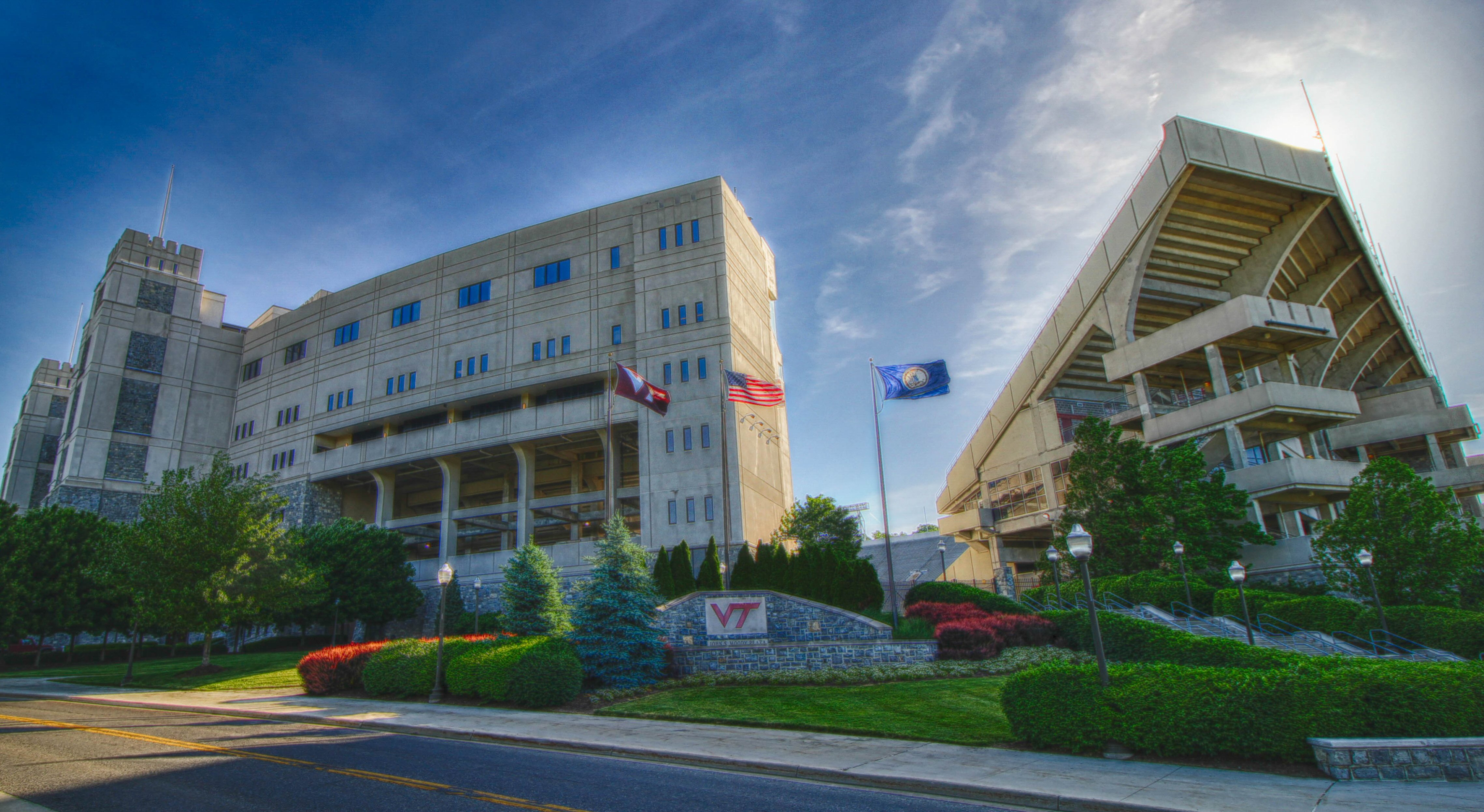
Lane Stadium at Virginia Tech in Blacksburg brims with Hokie pride, holding roughly 65,632 fans. Perched in the scenic New River Valley, it debuted in 1965 and gradually evolved into a formidable ACC battleground. The stadium’s most famous moment each game day is the electrifying entrance to Metallica’s “Enter Sandman”—the stands literally shake from jumping fans. Innovations like expanded seating, improved concourses, and a giant video scoreboard have modernized the venue without sacrificing its close-knit vibe. With Tech’s iconic maroon and orange swirling in the stands, Lane Stadium generates a noise level that often rattles opponents. The “Hokie Walk” sees players greeted by thousands of screaming supporters, fueling high anticipation. Its naming honors Edward Hudson Lane, a major benefactor, underscoring the campus’s deep tradition of philanthropy. Between scenic mountain vistas and the staccato of jumping fans, Lane Stadium epitomizes everything that makes Hokie football an unforgettable experience.
47. Washington – Husky Stadium (Capacity: 70,083)
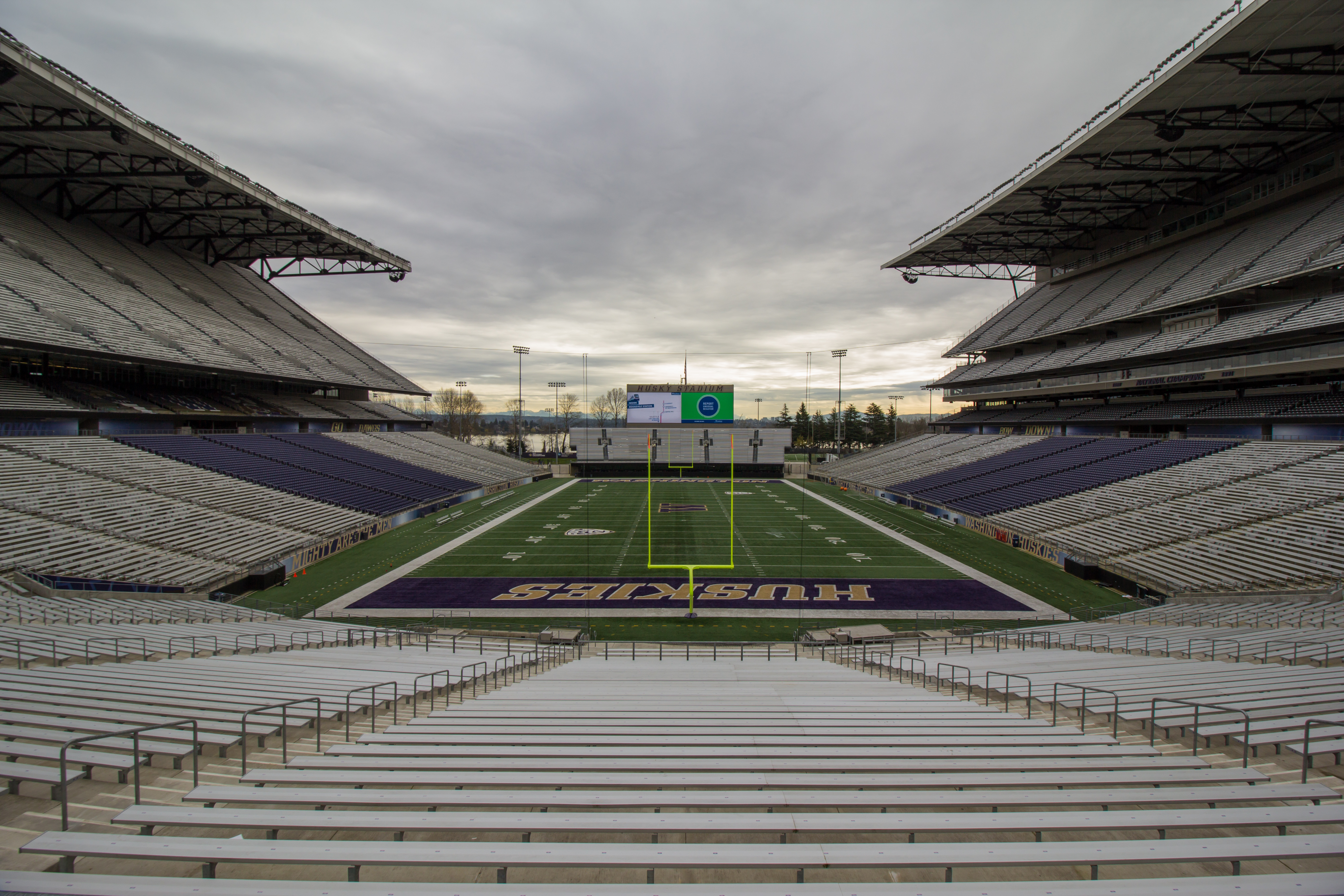
Husky Stadium in Seattle pairs stunning waterside views with a capacity of around 70,083, giving the University of Washington a truly unique home-field advantage. Opened in 1920, the stadium rests along the shores of Lake Washington, inviting fans to arrive by boat—“sailgating” is a cherished tradition. The double-decked design, supplemented by distinctive cantilever roofs, traps noise effectively, creating a deafening roar that has been measured among the loudest in all of college football. Renovations brought sleek modern seating, a massive video board, and updated concessions featuring Northwest flavors like salmon and craft brews. The purple-and-gold faithful feed off the band’s stirring fight song, “Bow Down to Washington,” building an atmosphere that can intimidate even the toughest Pac-12 rivals. With snow-capped peaks occasionally visible on clear days, Husky Stadium offers an enviable mix of natural beauty, tradition, and big-time collegiate energy—an icon of the Pacific Northwest sporting scene.
48. West Virginia – Milan Puskar Stadium (Capacity: 60,000)
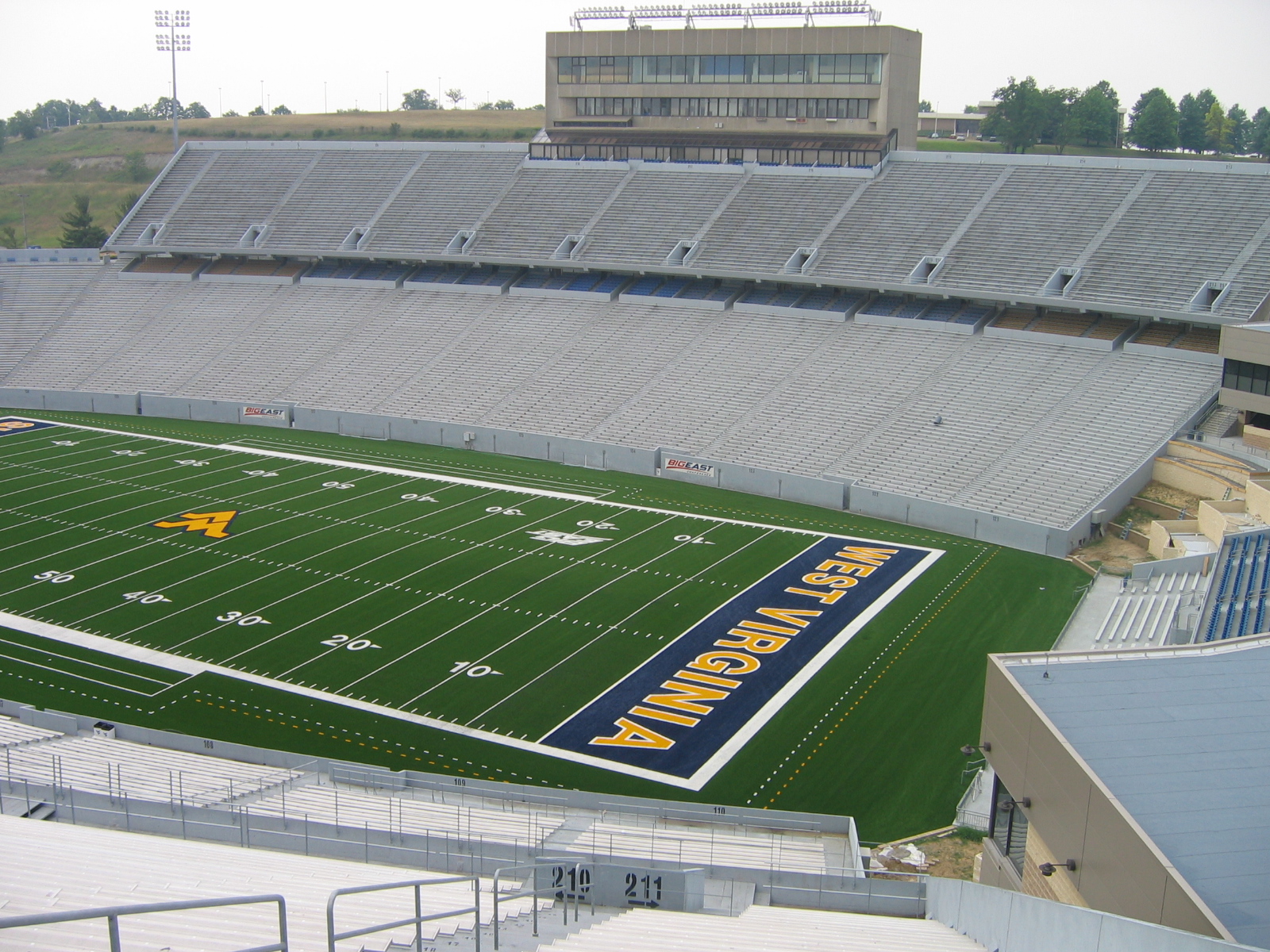
Milan Puskar Stadium in Morgantown stands as West Virginia University’s football stronghold, with a capacity of around 60,000. Originally known as Mountaineer Field, it opened in 1980 and was renamed for a key donor who bolstered WVU athletics. Nestled in the hilly terrain of north-central West Virginia, the venue brings fans close to the action via a horseshoe configuration. Game-day tailgates pepper the surrounding lots, often featuring country music and hearty Appalachian meals. Once inside, the “Let’s Go Mountaineers!” chant reverberates around the stands, fueling the Old Gold and Blue faithful. Visitors quickly learn about the musket-firing Mountaineer mascot, a centuries-old tradition that fires up the crowd at kickoff. Over the years, expansions introduced modern seating, improved restrooms, and advanced scoreboard technology, raising the stadium’s profile in the Big 12. Yet the stadium’s spirit remains rooted in West Virginia grit—a testament to the region’s pride and love for college football.
49. Wisconsin – Camp Randall Stadium (Capacity: 80,321)
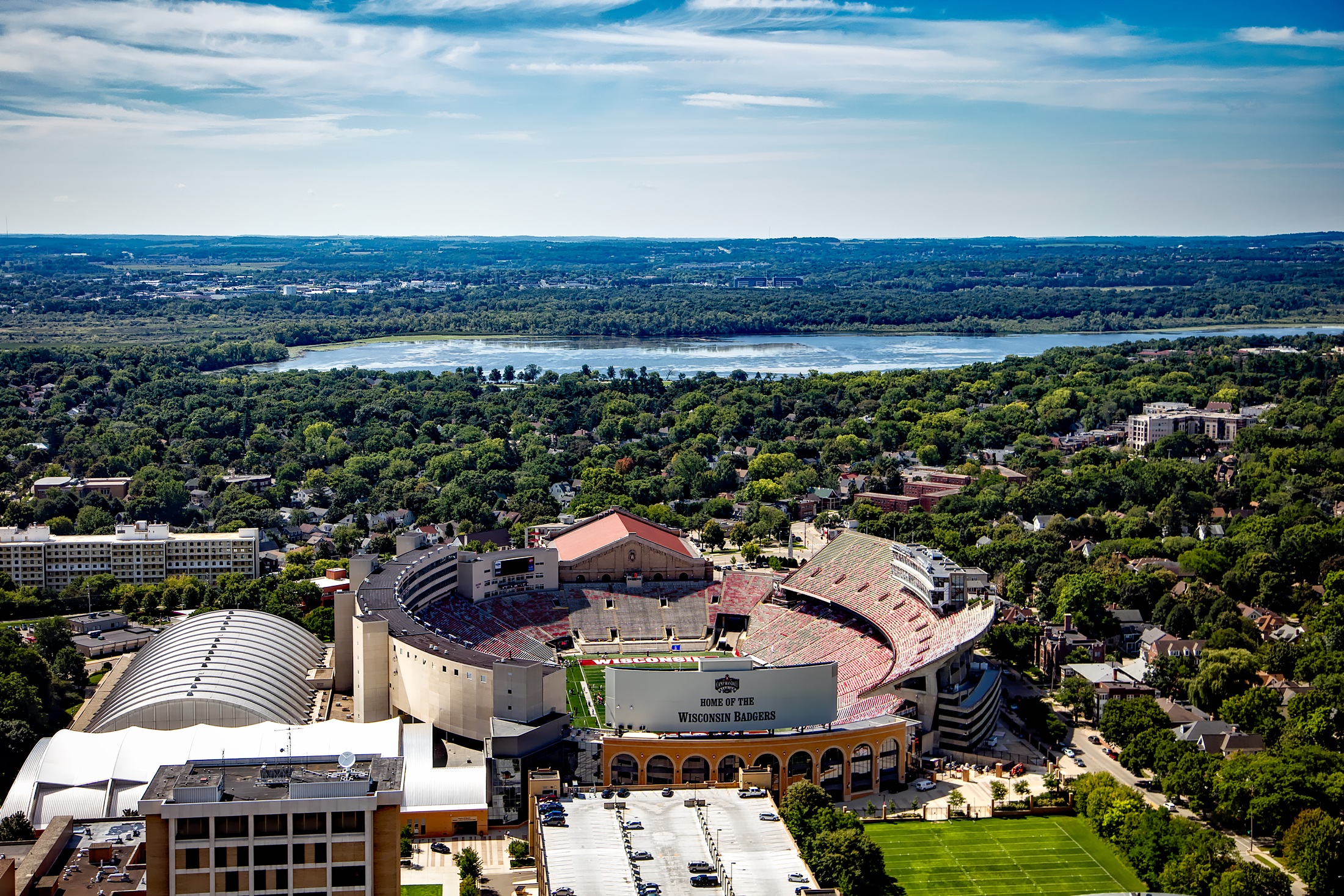
Camp Randall Stadium in Madison is a Big Ten treasure, steeped in Wisconsin Badgers lore since opening in 1917. Holding about 80,321 fans, it claims the status as the nation’s fifth-oldest active FBS stadium. Named after the Civil War training camp once occupying these grounds, the venue stands on historic soil—amplifying each game with tradition. The student secttion is legendary for rowdy celebrations, culminating in the “Jump Around” between the third and fourth quarters, where the entire stadium pulses in unison. With expansions adding suites, updated concourses, and technology upgrades, Camp Randall balances modern fan comfort with a vintage atmosphere.
50. Wyoming – War Memorial Stadium (Capacity: 29,181)
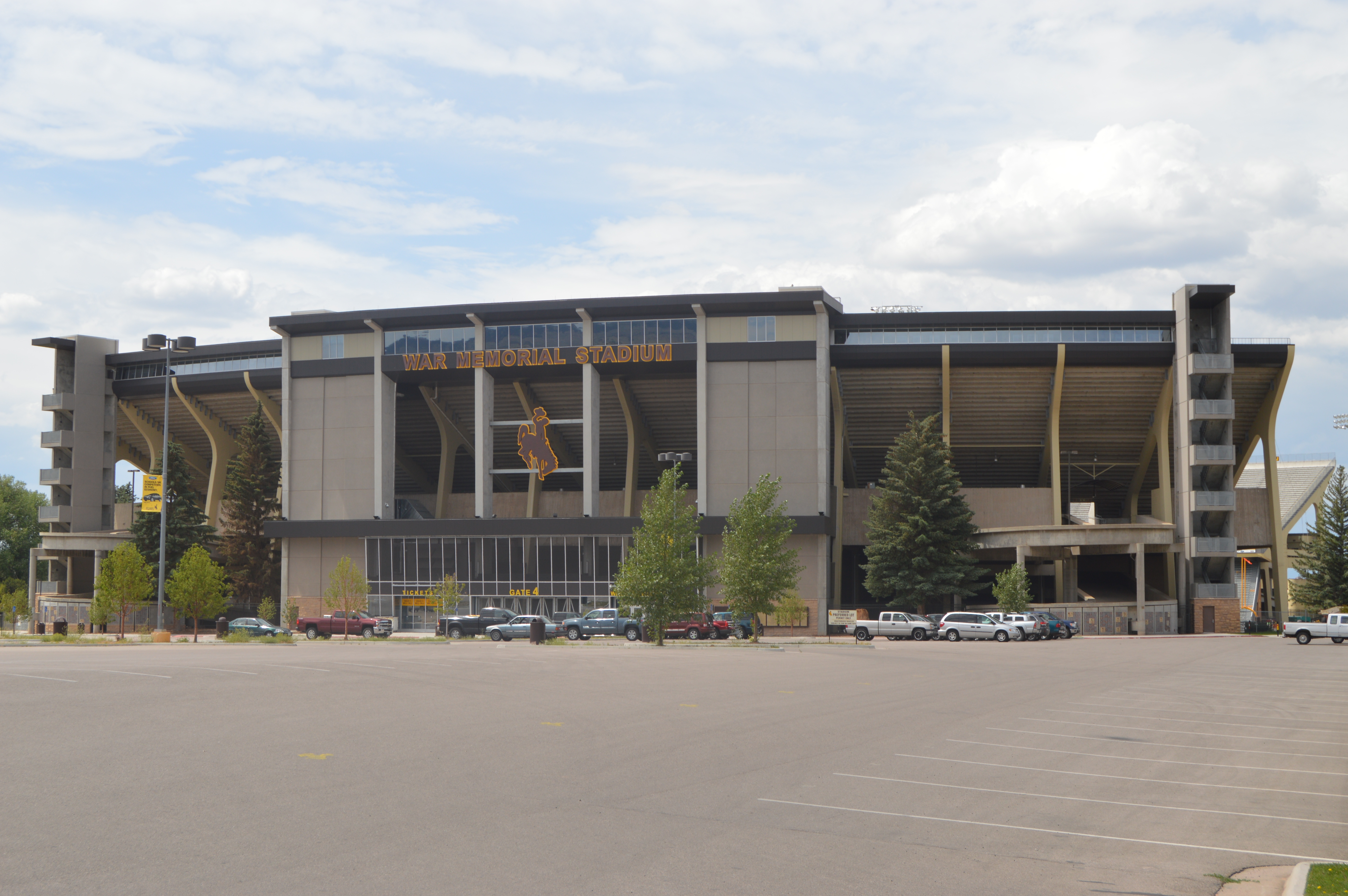
War Memorial Stadium in Laramie stands as the Mountain West’s highest-elevation FBS stadium at about 7,220 feet, which means a capacity crowd of approximately 29,181 often greets opposing teams with thin air and chilly breezes. Opened in 1950, it honors Wyoming soldiers who died in combat—a solemn tribute set against the region’s majestic high plains. Game days witness a swirl of brown and gold, as Cowboys fans brave the sometimes harsh conditions to back their team. Despite being one of the smaller FBS venues, War Memorial’s setting is unique: the broad Wyoming sky frames each kickoff, and the constant wind can alter deep passes or field goals.
Celebrating the Heart of College Football
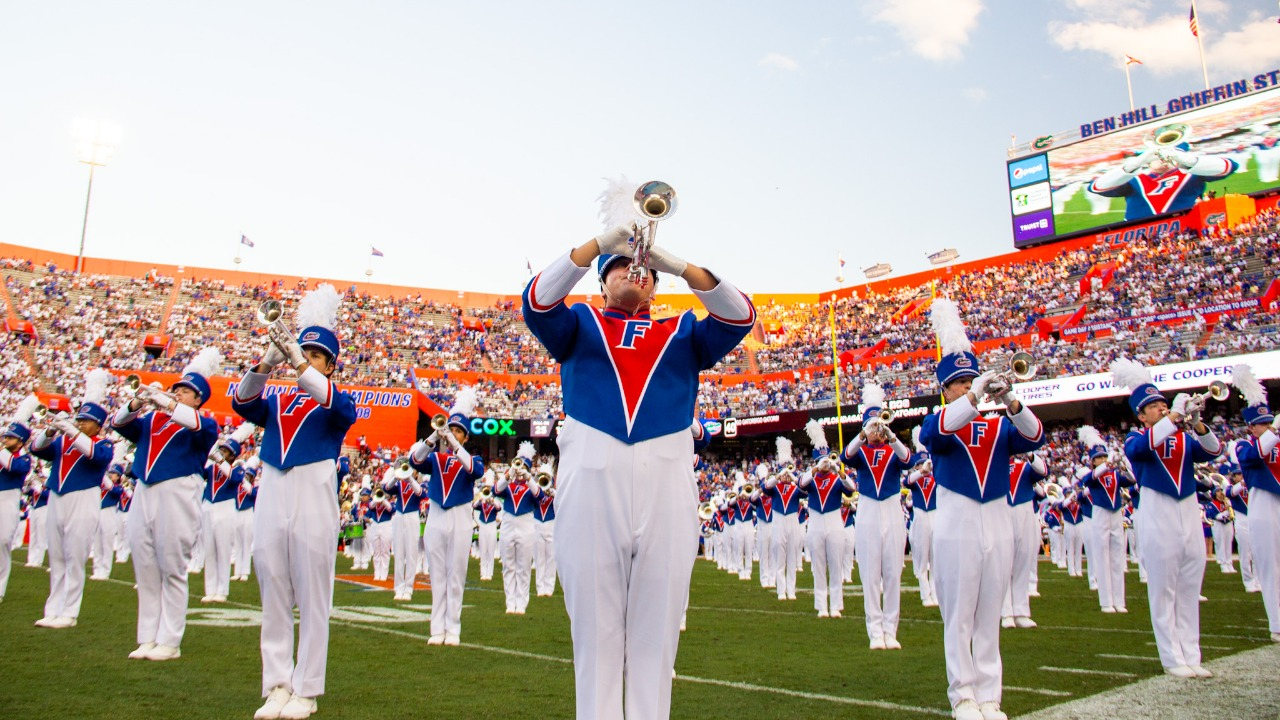
Across the United States, from the massive stadiums of the SEC and Big Ten to the intimate venues of smaller programs, college football stadiums stand as enduring symbols of community, tradition, and passion. Each arena tells its own story—of roaring crowds, historic games, and the undying spirit of fans who unite to cheer for their teams. These 50 stadiums are more than just places to watch sports; they are living monuments where local pride and national legacy intertwine. Whether shaped by century-old traditions or cutting-edge innovations, every venue captures the boundless excitement and camaraderie that make college football an essential part of American culture. Together, they showcase the power of sport to bring people together, creating memories that echo far beyond game day.








